Overview
This is the first of a series of Croucher Foundation newsletters to explore and celebrate the biodiversity of Hong Kong. The series will examine how the terrestrial and marine ecology of Hong Kong has changed over time, and will look ahead to future challenges including climate change.
For a relatively small and densely populated region, Hong Kong has remarkable biodiversity. There are 198 species of freshwater fish in Hong Kong (compared with 42 species in UK), and 236 species of butterfly (compared with 59 species in UK).
Hong Kong coastal waters, protected by a recent ban on the use of trawl nets, support similar levels of biodiversity. Over 1,000 species of marine fish are found in Hong Kong coastal waters together with 84 species of hard coral and 67 species of soft coral.
The Hong Kong Country Parks Ordinance enacted in 1976 has restricted urban development to a relatively small proportion of the region. The scientific community is playing a critical role in ongoing efforts to conserve the natural environment in Hong Kong. Over the years, the Foundation has supported many of the scientists who have contributed to our understanding of the local ecosystem. Community organisations including the Conservancy Association, Friends of the Earth, Civic Exchange, and the Hong Kong Bird Watching Society have conducted survey work and advocacy. Smaller community and social media groups promote interest and awareness.
Much remains to be discovered, from the characteristics and lifestyles of numerous species of flora and fauna, to macro questions about the ecological impact of, and mitigations against, urban development, air and water pollution, and climate change.
COMING SOON: Get ready to jump into the deep with Part Two of the Croucher Foundation Ecology Newsletter which will examine our marine environment. Ready for publication in May 2021.
Land Conservation
Present, past, and future of Hong Kong's "Wild" Side
Timeless encounter: view over the mountains, sea, and skyline of Sai Kung and neighbouring islands in Hong Kong’s New Territories. Photo: Gorma Kuma/Shutterstock
What has shaped the extraordinary biodiversity that can be found within the landscapes that comprise the city’s spectacular urban-rural environment, and what do the decades ahead hold?
For a densely packed metropolis, Hong Kong is home to a surprisingly rich biodiversity, with its land area of 1,106 square kilometres encompassing an impressive number of plant and animal species within extensive country parks, 250-plus islands, as well as the more familiar urban areas, mostly located close by mountains, woodlands, and sea.
Hiking in the Hong Kong countryside may bring an encounter with an array of butterflies, dragonflies, lizards that abruptly scuttle for cover, and birds. There are over 200 species of butterflies, 123 types of dragonflies, and 23 kinds of lizards living within its varied landscapes, while the Hong Kong Bird Watching Society lists 559 resident and migratory bird species.
If you are lucky, any one of Hong Kong’s 46 species of land snake may cross your path (there are also six types of sea snake).
Larger mammals are less extensive, given that much of the area’s original broad leaf sub-tropical forests have been stripped away. In addition, those that do survive in forest remnants and re-emerging wooded areas, such as Leopard Cats, Masked Palm Civets, Barking Deer, and Chinese Pangolin, are typically shy, and in the summer, many avoid the daytime heat.
Less shy are the estimated 1,800 wild monkeys – Rhesus Macaque (Macaca mulatta), Long-tailed Macaque (M. fascicularis), and their hybrids – living in 30 social troops in Kam Shan, Lion Rock and Shing Mun country parks in the New Territories. Although originally native to Hong Kong, Rhesus Macaques may have become locally extinct by the Second World War. The macaques today may be descendants of individuals that escaped from captivity, along with macaques released around the Kowloon reservoirs in hopes they would eat strychnos plants that contain a chemical that is toxic to humans but not macaques.
Meanwhile, Wild Boar (Sus scrofa) have survived both deforestation and earlier hunting. Indeed, with predators such as Indochinese Leopards and South China Tigers extirpated (the last in Hong Kong were shot in 1931 and 1942, respectively), and hunting stopped, Wild Boar numbers have risen sharply, with some becoming bold enough to venture into the city.
Location, location
Hong Kong’s biodiversity is credited to its coastal and delta location on the edge of the tropics, climate, and topography.
Hot, rainy weather from April to September is complemented by cool, dry seasons from October until March, the latter bringing a host of migrant birds to the city, forests, and shorelines. Mountainous, rugged terrain founded on granite and volcanic rock has constrained urban construction and allowed wildlife to survive on the fringes of the city and nearby uplands. Flat alluvial plains in the northwest have supported important wetland habitats, though now heavily encroached on by new towns and village development. More than 2,500 kilometres of natural streams and rivers flowing from the hills nurture upland and lowland ecosystems.
Professor Jim Chi-yung (Croucher Fellowship 1986), Research Chair Professor of Geography and Environmental Science at the Education University of Hong Kong (EduHK), emphasises that Hong Kong has much to celebrate in its biodiversity – and to protect. “We have so much diversity of nature very close to the city. This is a gift for the people of Hong Kong.”
Emeritus Professor David Dudgeon, Chair Professor of Ecology & Biodiversity of the University of Hong Kong, said of this heritage: “What we have is even more remarkable given the sustained and pervasive human impacts on local environments. We have endemic species of frogs, fish, and dragonflies found nowhere else, as well as significant proportions of the global populations of endangered species, such as the Golden Coin Turtle and Black-faced Spoonbill.”
Knowledge on insects and other invertebrates was far from complete. “But what we do know is that Hong Kong seems far richer than one would expect from its small area,” Dudgeon said.
Dr Sung Yik-hei, Assistant Professor of the Science Unit, Lingnan University, who researches amphibians and reptiles, expects more to be discovered: “There are still some groups of organisms we know very little about, for example, land snails. We know that there are a number of endemic species, but no one has recorded them.”
Research, he said, had an important role to play: “If we don’t know what species are out there, they could be gone.”
Ice Age Influences
A condensed story of how these natural endowments and the wild side of Hong Kong were formed might start around 18,000 years ago, at the peak of the last ice age. Large expanses of the northern hemisphere were covered by ice sheets. In Asia, permafrost reached as far south as Beijing. With the sea perhaps 120 metres lower than its present level, Hong Kong’s hills were at the northern edge of a coastal plain, extending 120 kilometres to the south.
As the ice sheets melted, the sea rose, eventually reaching Hong Kong, where isolated hills became islands, and flooded valleys were transformed into bays. The climate warmed, becoming more sub-tropical. This, in turn, resulted in changes to local ecosystems, which on land may have mainly been broad-leaved evergreen forests.
While for many plants and animals there were opportunities to spread northwards, species unique to the coastal plain had to move to higher land, or perish.
Clearing the way for human impact
While early humans inhabited the forests and coastal areas, they may have had little impact on ecosystems until around 4,000 years ago, when farmers began clearing land to grow crops and rear livestock.
Within the last 2,000 years, influxes of settlers from the north resulted in increased deforestation, and transformation of landscapes around villages, particularly as lowland areas were used for rice cultivation, and hillside trees felled for different uses, including charcoal production. However, feng shui woods around the villages were nurtured and preserved for the resources and protection from the elements and for water catchments they gave – 116 identified as still standing in a 2002 government-sponsored survey.
In 1841, when Hong Kong Island was ceded to the British, it was infamously dismissed by foreign secretary Lord Palmerston as “a barren rock with nary a house upon it”. Slopes were indeed mostly deforested yet the island was far from barren. The slopes were grassy, while damp gullies and valleys still hosted remnants of woodland where botanists found various species that were new to science, such as the Hong Kong Orchid Tree (Bauhinia × blakeana Dunn), Hong Kong Camellia (Camellia hongkongensis), Hong Kong Dogwood (Dendrobenthamia hongkongensis), and Hong Kong Iris (Iris speculatrix).
These are among about 2,100 species of vascular plants native to Hong Kong that have been recorded and collected by the Hong Kong Herbarium since its founding in 1878 – reflecting the diversity of flora for such a small land area. Another 1,200 exotic species arrived with the different waves of human settlement.
With Hong Kong’s rugged terrain – nearly 80 per cent lies at least 100 metres above sea level – humans have reshaped the land to make way for development, by cutting terraces into hillsides, and through the much greater impact of coastal reclamation. The first land created from the harbour, the Western Praya scheme in the Kennedy Town area, was completed in the 1870s. Since then, reclamation has gradually extended, supporting around 20 per cent of the population, according to the government’s Civil Engineering and Development Department in its history of the city’s changing landscape. Reclamation now accounts for about seven per cent of Hong Kong’s onshore land area.
Safeguarding water and the countryside
Along with reclamation and the limited amount of additional space for nature that it created, reservoirs were built on Hong Kong Island, above Pok Fu Lam (completed in 1863) and at Tai Tam (built between the 1870s and 1912), to support the city. The government planted hundreds of thousands of trees, including pines, gums, Brisbane Box and China Firs, around the reservoirs’ catchment areas. These new woods could act like sponges, storing water during rains and releasing it afterwards, while limiting erosion.
Although there was further deforestation during the Japanese occupation, from late 1941 to 1945, tree planting and forest protection efforts resumed afterwards, likewise prompted by a need to secure water supplies.
Increasingly crowded urban areas contrasted with the wilder mountainous terrain, and led to the protection of that largely uninhabited land as an asset for Hong Kong, culminating in 1976 in the government enacting the Country Parks Ordinance (Cap.208). This involved the establishment of 21 country parks over the following three years, with goals to preserve and improve the countryside, including for nature conservation, outdoor recreation, and education purposes.
Today, there are 24 country parks and 22 special areas, the latter designated mainly for nature conservation, of which 11 are located within the parks. Together, these cover around 40 per cent of Hong Kong’s land area, excluding the 1,500-hectare Mai Po Inner Deep Bay Ramsar site.
Jim of EduHK, together with Dr Wong Fook-yee, former Assistant Director (Country and Marine Parks) at the Agriculture, Fisheries and Conservation Department (AFCD) and now Adjunct Professor in the Department of Geography and Resource Management at Chinese University of Hong Kong, has evaluated the country park system. He describes the percentage of land area as one of the highest proportions of formally protected areas in Asia, and higher than global averages.
The county park system had been successful “mainly due to a strong statutory backup that provides assured legal protection against developments, incompatible intrusions, and land alienation”, Jim said. The protected areas are an important safeguard for Hong Kong’s biodiversity, encompassing around 60 per cent of Hong Kong’s forests, 55 per cent of its shrublands, and 50 per cent of its grasslands, according to the review by Jim and Wong. Ecological surveys they cited indicated that between 96 per cent and 100 per cent of plant and animal species in Hong Kong can be found within them.
Wildlife inhabiting these and other areas has received added protection from the Wild Animals Protection Ordinance (Cap. 170), also enacted in 1976. The ordinance prohibits the hunting or possession of protected wild animals, such as Hong Kong’s bats (more than 20 species), Leopard Cat, Masked Palm Civet, Small Asian Mongoose, Barking Deer, and Burmese Python, among others, but excludes fish and marine invertebrates.
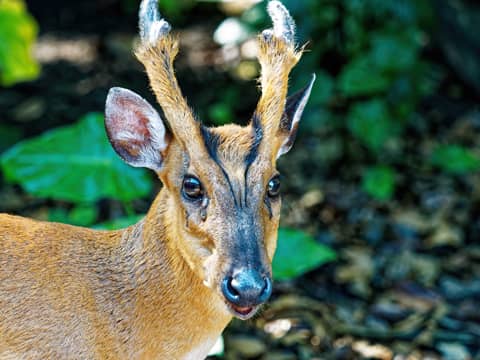
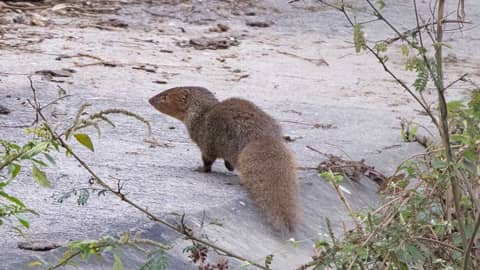
![Croucher Ecology | C. Bamboo Pit Viper (Cryptelytrops [Trimeresurus] albolabris)](/images/carousel_a-j/c-story-1---carousel---pix-3-rferguson-bamboo-pit-viper-480w.jpg)
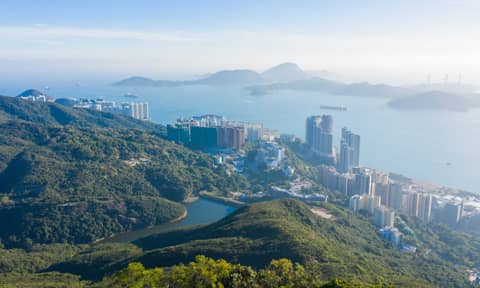
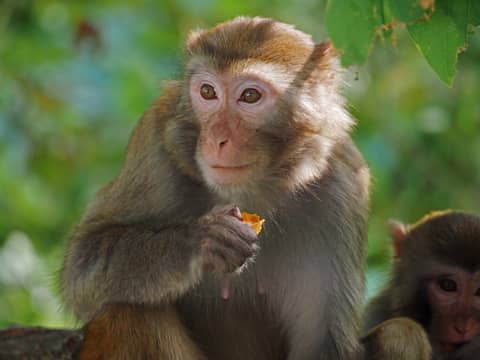
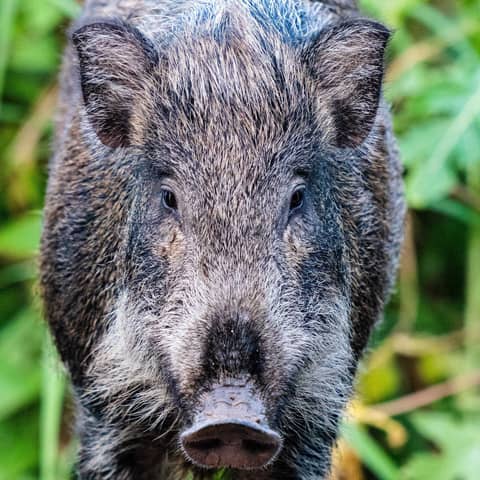

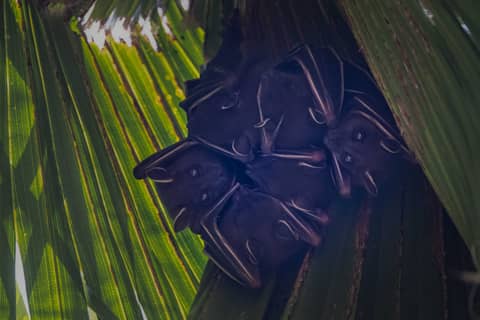
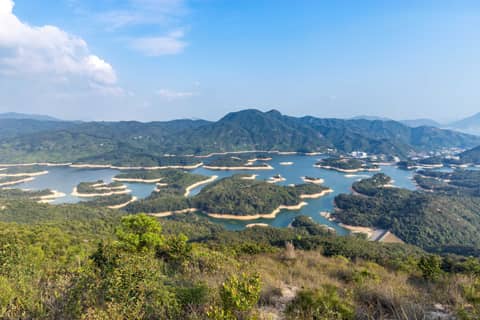
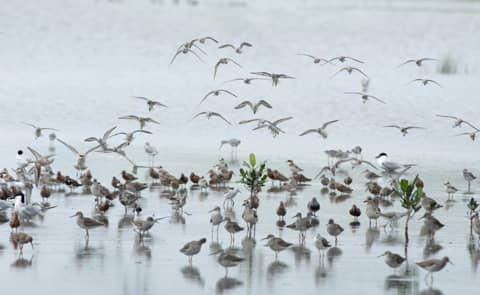
Wong has explained how the parks were carefully designed, with paths constructed to give access to hikers but also to steer them from ecologically sensitive areas, making the parks a sanctuary for flora and fauna as well as humans. Tree planting has continued – at an average of around half a million trees annually in the decade from 2010, AFCD figures indicate.
Around 12 million people visited the country parks in 2020, reflecting their important role in Hong Kong life.
Development vs biodiversity
Dr Gary Ades is Head of Fauna Conservation at Kadoorie Farm and Botanic Garden (KFBG) in the New Territories, initially an experimental farm and now a significant conservation and education centre. Ades credited the country parks with increasing biodiversity. “We have birds expanding their range into Hong Kong from southern China and the region which means our biodiversity is increasing, due to maturation of forests. The country parks and enforcement under the local protection ordinances provide a degree of safety.” However, increased enforcement of that protection was important, he added.
For Dudgeon, the system has its limitations from a biodiversity perspective. “We are fortunate to have such a high proportion of land protected,” he said. “But it is not representative of the habitats in Hong Kong, given that most of the land in country parks is higher than 100 metres above sea level while lowlands are excluded.”
Jim, like Dudgeon, is concerned about the “twilight zone” of fringe development between country parks and main urban areas, where he sees the need for a clearer policy to protect nature.
Lowland sites that have suffered major damage include Sham Chung in the eastern New Territories – which Dudgeon rated the second best freshwater wetland in Hong Kong after Mai Po Marshes, and the place where he discovered the distinctive Hong Kong Paradise Fish (Macropodus hongkongensis). Abandoned paddy fields that had become marshes were bulldozed and drained in the late 1990s. Plans for a private golf course were rejected by the Town Planning Board and the land abandoned. Yet the wetland that once hosted Hong Kong’s largest population of the Hong Kong Paradise Fish – along with other wetland wildlife – was largely destroyed.
Strategies for conservation
However, as global and local awareness has developed, biodiversity and its future has continued to rise up the agenda as a community and policy issue. Alongside the country parks, other infrastructure has been developed for conservation. Adjacent to Deep Bay, WWF-HK manages Mai Po as an important sanctuary not only for birds, but mammals, reptiles, insects, and wetland flora, while KFBG stretches over 148 hectares on the northern slopes of Tai Mo Shan.
KFBG’s public role as a conservation and education centre was officially recognised in a specific ordinance (Cap.1156) in 1995. Since then, it has collaborated with AFCD on conservation and ecosystem restoration, and action plans for specific endangered or at risk species – the Chinese Pangolin, Golden Coin Turtle and Romer’s Tree Frog being three examples. Meanwhile, KFBG Wild Animal Rescue Centre is Hong Kong’s main sanctuary for wild animals that have been injured or rescued from trafficking.
Since the centre opened in 1994, and as of the start of February 2021, it had received 55,613 animals for rescue, treatment and care, and where possible, release back to the wild.
Animal Groups Rescued
| Animal groups received by KFBG since 1994 | Numbers |
|---|---|
| Birds | 10,043 |
| Mammals | 1,279 |
| Reptiles | 27,829 |
| Stray snakes | 15,826 |
| Amphibians | 636 |
| Total | 55,613 |
A “New Nature Conservation Policy” was introduced by government in 2004. This identified 12 Priority Sites for Enhanced Conservation, from Long Valley and Ho Sheung Heung in the northwestern New Territories, to Tai Ho on Lantau Island. Aims included monitoring and mitigation of activities that had an adverse effect on biodiversity; rehabilitating degraded ecosystems and promoting the recovery of threatened species where practicable; and offering incentives for ecologically important sites under private ownership to be allowed limited development in return for their commitment to conservation.
While conservationists question how much has been achieved, the government has pointed to some successes – by 2015 the number of bird species recorded in Long Valley had increased from 221 in 2005 to over 300 in 2015.
In 2016, the government’s commitment to biodiversity was extended further, when the Environment Bureau published the first city-level Hong Kong Biodiversity Strategy and Action Plan. This was prepared as its response to the Convention on Biodiversity (CBD), an international treaty originated from the United Nation’s Earth Summit held in Rio de Janeiro, Brazil, in 1992. China became a party to the CBD in 1993 and extended it to Hong Kong in 2011.
The CBD has aimed to conserve biodiversity, ensure the components of that biodiversity are used sustainably, and promote the fair and equitable sharing of its benefits. The convention provides goals and obligations to guide implementation, albeit with limited global success given the continued depletion of species, from large mammals to birds and insects, and vast tracts of forest areas, in the subsequent decades.
Hong Kong’s Action Plan shares responsibility across relevant bureaux and departments in their planning and oversight, in order to enhance conservation, “mainstream” biodiversity, and improve knowledge and public involvement.
Jim sees it as a step forward. “The AFCD conducted wide consultation of local researchers and green groups to develop a comprehensive plan to enhance our knowledge base, fill in knowledge gaps, and enhance protection of the flora and fauna and their habitats, especially those that are under threat,” he said, adding that it would take time and resources to realise the plan.
Sung also acknowledged some advances. “As an ecologist, it is great to see a lot of work being done. But we are waiting to see the progress and outcomes.” His concern was how this could be balanced with the large-scale development projects that are also planned, such as the Lantau reclamation for Hong Kong’s next major urban area.
“Blue-green” infrastructures creating corridors of water bodies and vegetation in urban areas, and “urban forestry” initiatives for open spaces, are two of the policy directions that have aimed to create an environment where nature can have a better chance of surviving alongside humans.
Some flood prevention works, such as widening of the Upper Lam Tsuen River completed in 2012 that included restoration of the river bed and surrounding plant growth, and protection for its fauna, are presented in the Sustainability Report of the Drainage Services Department (DSD) as pointers to a future strategy that pays greater heed to conservation.
The river is the breeding ground of the Hong Kong Newt (Paramesotriton hongkongensis), classified as near threatened. As reported by DSD civil engineer Keith Tam in an International Water Association article in 2019, the newt was more abundant after the works, having increased from 200 in the pre-construction baseline survey to about 700 in 2017. This was the result of a capture-and-release programme (by KFBG) and conservation measures included in the project that restored other fauna to pre-project levels.
Sung noted that this type of river management was important for amphibians. “When I visited, it was definitely much better. Definitely more organisms can live there compared with traditional concrete conduits,” he said of the Lam Tsuen project, and a similar one at Tung Chung, on Lantau Island.
KFBG’s Ades has worked with the AFCD as a reviewer of species’ assessments for mammals and reptiles of conservation concern. “This has been a useful process, but is not finished yet,” he said, adding that the Biodiversity Strategy and Action Plan had channelled funding into such projects.
Looking ahead
While progress has been made, more is needed, according to the ecologists and environmental scientists interviewed for this series.
For Sung, further research on terrestrial and freshwater habitats would be of value, given that little is known about amphibians and reptiles and there could be more new species to discover. Public education on such fauna, and its protection, is also vital.
Jim sees the need to focus on creating more liveable spaces for flora, fauna, and humans within the urban and fringe areas to match the past achievements of the formally protected areas. He champions a way forward involving urban forestry. This seeks to realise ecological, social, and economic benefits, with trees a main component, along with greening of parks, walls, and roofs.
In three to five decades, Hong Kong could be a very green and – as a corollary – healthy city “if we do the right things now”, he said.
For Dudgeon, Hong Kong’s natural heritage and rich biodiversity, as well as the evidence that it is a major transit point or hub for the global wildlife trade, should shape its priorities for the future.
“All of these traits put us in a good position – and mean that we have a responsibility – to contribute to biodiversity conservation, both regionally and globally,” he said.
Species Focus
Rare Vertebrates and Abundant Ants
Hong Kong has one of the last healthy wild populations of the Chinese Pangolin (Manis pentadactyla). Photo: Kadoorie Farm and Botanic Garden
The Hong Kong countryside is a sanctuary for extraordinary animals, some only found in these environs. Below, we spotlight six diverse creatures that are drawing the attention of researchers and conservationists
The Unchartered Life Of The Chinese Pangolin
Little is known about one of Hong Kong’s most elusive, endangered, and endearing species, the Chinese Pangolin (Manis pentadactyla), now the subject of a conservation effort and research involving the Agriculture, Fisheries and Conservation Department (AFCD), Kadoorie Farm and Botanic Garden (KFBG), and other partners, as well as separate research by ecologists at the University of Hong Kong.
Pangolins, also known as scaly anteaters, are a unique group of mammals characterised by their armour of overlapping scales. Powerful limbs and claws for digging, long tapering snouts, and sticky tongues that can stretch to 40 centimetres – sometimes longer than their bodies – have adapted them well for their favourite diet of ants and termites. Without teeth to challenge predators, they curl in a ball when threatened. The Chinese Pangolin, one of eight species of pangolin, grows to around the same size as a corgi dog, a length of around 40 centimetres.
Yet pangolins, which are surprisingly friendly and endearing when encountered in a rescue centre, have the dubious distinction of being billed “the world’s most trafficked mammal”. This is largely due to the demand for their scales in Chinese medicine – despite the scales being made of keratin, the same material as hair and fingernails, with no scientifically proven benefits for human health.
In September 2020, Hong Kong Customs and Excise Department found a tonne of pangolin scales in a consignment of illegal wildlife products being shipped from Indonesia to Mainland China. Thousands of animals would have had to perish to make up such a haul, and over a million are said to have been poached in the past decade.
KFBG’s forensic genetics team is involved in combatting this trade from Southeast Asia and Africa. “Our genetics team was able to discover the region in Africa where White-bellied Pangolins originated by working with African scientists and sharing DNA results,” said Dr Gary Ades, Head of the Fauna Conservation Department, at KFBG.
Meanwhile, Hong Kong’s country parks, with the steep hills that the Chinese Pangolin appears to favour, are an important last sanctuary in the battle against trafficking of the species overall.
“Hong Kong has one of the last healthy wild populations of Chinese Pangolins. This species is extinct over much of its historical range and therefore any programme to protect the species is important globally,” Ades said.
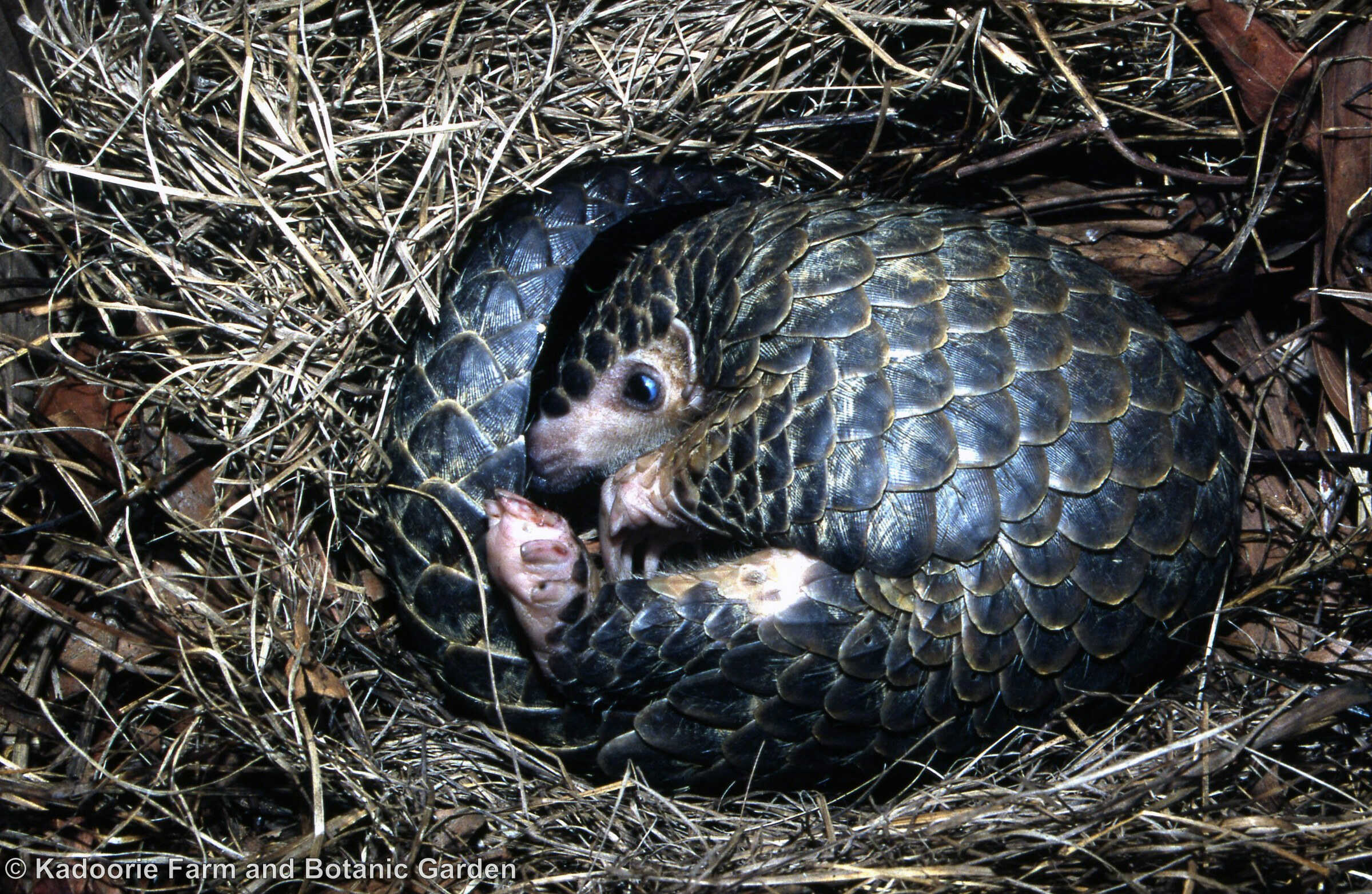 Under threat: a species action plan was launched in 2020 in
Hong Kong to protect Chinese Pangolins. Photo:
Kadoorie Farm and Botanic Garden
Under threat: a species action plan was launched in 2020 in
Hong Kong to protect Chinese Pangolins. Photo:
Kadoorie Farm and Botanic Garden
The Chinese Pangolin is listed as critically endangered on the International Union for Conservation and Nature (IUCN) Red List of Threatened Species. KFBG is involved in the government’s species action plan, launched in 2020, through rescue and release work and education to raise awareness of the pangolin and its urgent need for protection. AFCD began surveying pangolin burrows and setting up camera traps over a year ago, which will inform future habitat protection. Any animals being released after rescue may be studied further using radiotelemetry, Ades said.
The KFBG Wild Animal Rescue Centre plays an important role in such conservation by rescuing, treating, and releasing as many pangolins as it can. It is also on the look-out for poachers’ wire or cage traps found in the countryside, which can catch pangolins and many other species.
The risk of poachers targeting the pangolin in Hong Kong is described as real but low in the species action plan. Their major local threat is from feral dogs. Of the 13 pangolins received by the rescue centre since it opened in 1994, five or six were likely to have been attacked by dogs. Ten have been released back to the wild.
“Apart from humans, dogs are the pangolin’s biggest enemy in Hong Kong,” Ades said.
Yet being so elusive means little is known about the Hong Kong pangolin population, its whereabouts, and viability, though the young, injured animals that KFBG has received suggest they are breeding.
Ades is hopeful that AFCD’s conservation project can make a difference. “For me, a key requirement for the protection of local pangolins is to have eyes on the ground studying the animals. We need early warning if poaching becomes a serious issue in Hong Kong and the only way this will happen is if researchers are in the field monitoring burrows and setting up camera traps. Appropriate enforcement work then has to follow.”
Other researchers doing such monitoring include Dr Tim Bonebrake, who leads the Global Change and Tropical Conservation Lab at the University of Hong Kong’s School of Biological Sciences. He has made the Chinese Pangolin the subject of his research, and is sharing information with the AFCD project.
With little information available on the local pangolins, his study, with PhD student Anna Goldman, has involved considerable time and effort simply to figure out where they are, before even considering their habitat requirements. He does not know whether they are so hard to find because they avoid people, or that there are so few of them.
“There’s a lot of evidence, like burrows, we can find in country parks. But we only got our first image after eight months of camera trapping,” he said.
Bonebrake noted that fieldwork in Taiwan has yielded key information on the Chinese Pangolin’s behaviour but elsewhere the species’ range has been poorly studied.
He added that he saw them as “amazing creatures”. “We have some video, including [images of] them digging. While they are armoured, they can move pretty fast.”
However, those combatting the pangolin trade and conserving these mammals need to move fast too if the scaly anteater is to survive.
Freshwater Turtles Threatened In Last Refuge

Losing ground: the city’s environs are a last global refuge for several species of freshwater turtles, including the Beal’s-eyed Turtle (Sacalia bealei). Photo: Sung Yik-hei
Among Hong Kong’s globally significant populations of animals are several species of freshwater turtles for whom the city’s environs have become a last main refuge.
While “turtle” may conjure images of impressively large sea turtles – such as the green turtle, growing to perhaps one metre – Hong Kong’s freshwater turtles are relatively small, with shells no more than a modest 30 centimetres in length. They face severe threats from poaching for the pet trade, food markets, and Chinese medicine, which has devastated their populations elsewhere in the region, and are close to making them extinct in Hong Kong.
Dr Sung Yik-hei, Assistant Professor of the Science Unit, Lingnan University, leads research in Hong Kong on these endangered species, including the Golden Coin (Cuora trifasciata), Big-headed (Platysternon megacephalum), Beal’s-eyed (Sacalia bealei), Chinese Soft-shelled Turtles (Pelodiscus sinensis), and Reeves’ Terrapins (Mauremys reevesii).
By capturing and radio-tracking individuals, Sung has learned about their ecology. He found that they mostly stayed in streams within forested areas, though they might disperse on land during and after heavy rains. One reached a stream at least one kilometre away.
Beal’s-eyed and Golden Coin Turtles may roam further, through forest areas surrounding streams, while Reeves’ Terrapins and Chinese Soft-shelled Turtles prefer flatter, more open areas, for example, around fish ponds.
Most of the turtles, which might live up to 40 to 50 years in the wild, are opportunistic feeders, with a diet including insect larvae, fish, fruit, and seeds – making them valuable seed dispersers.
Along with understanding their ecology, Sung’s marking and radio tracking of turtles has shed insight into poaching. “Last year, a Big-headed Turtle with a microchip we implanted was confiscated when being smuggled to Mainland China. It was recovered, and we released it where it was caught.”
Combatting poaching is a focus of further research that Sung is undertaking, supported by the Ocean Park Conservation Foundation. In this work, he is using infrared cameras to find traps set by hunters, with around 100 located and removed since 2016. He is also working with the government’s Agriculture, Fisheries and Conservation Department (AFCD) on a pilot study to support larger scale patrolling, which he hopes can strengthen enforcement against this illegal trade.
“If poachers visit a site for just two days, half the turtles there may be gone,” said Sung, who despite his efforts is pessimistic about the survival of these species in the wild. “They are very close to being functionally extinct, whereby they can’t perform their ecological functions in the wild, or can’t reproduce,” he said.
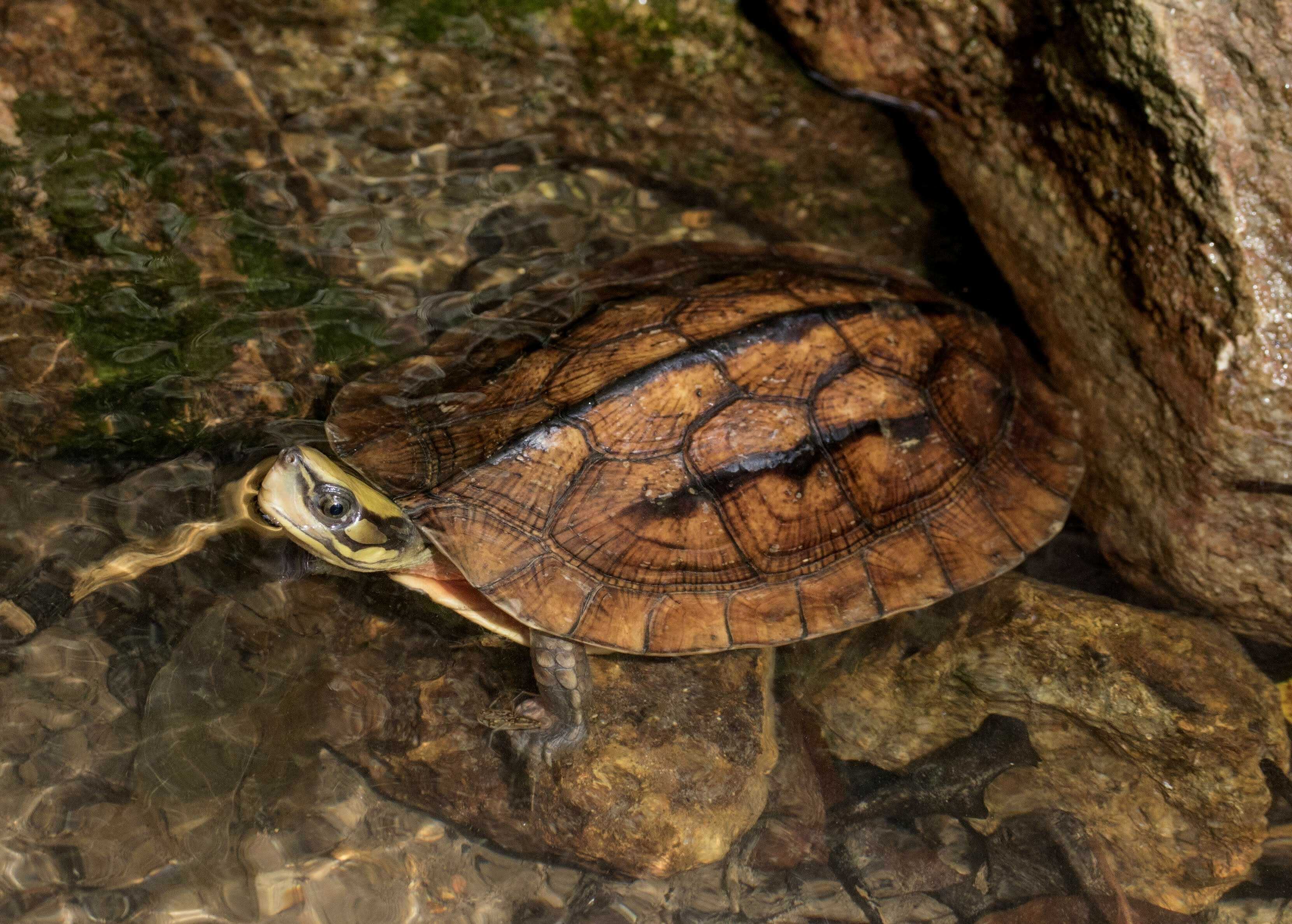 Golden Coin Turtles (Cuora trifasciata) are highly
sought after by poachers and for the pet trade.
Photo: Sung Yik-hei
Golden Coin Turtles (Cuora trifasciata) are highly
sought after by poachers and for the pet trade.
Photo: Sung Yik-hei
The Golden Coin is the most prized by poachers and as a result is now critically endangered. “In the past, it was mainly used for Chinese medicine. People believed it cured cancer.” It is also regarded as a talisman for good fortune, making it sought after in the pet trade and for breeding farms. Individual males have been known to sell for as much as HK$150,000, Sung said.
Meanwhile, AFCD and KFBG have joined forces to conserve Golden Coins in Hong Kong. An assurance colony of rescued animals is being built by KFBG. This includes a breeding programme and eventual plans to release turtles back to their natural habitats.
Dr Gary Ades, Head of the Fauna Conservation Department of KFBG, said: “Our Golden Coin Turtle conservation project is globally the most important project for this species and one that will hopefully prevent the turtle from becoming extinct in the wild.” KFBG urges the public not to buy wild-caught turtles.
Hong Kong’s native fresh water turtles are not to be confused with the turtles adorning ponds in the city’s parks, which are mainly exotic species such as the Red-eared Slider (Trachemys scripta elegans) released by pet owners when they outgrow their tanks. Such releases, particularly when into rivers and reservoirs, pose another threat to the native species, which they are now displacing.
Sung’s interest extends beyond turtles to other reptiles and snakes. A new project, starting in spring 2021, is focused on the status of Bogadek’s Burrowing Lizard (Dibamus bodadeki), a species endemic to three remote islands of Hong Kong: Sunshine Island, Shek Kwu Chau, and Hei Ling Chau.
So far, less than 20 individuals have been found. The first step in the research will be to develop ways to find them – a challenge given that they live largely underground. “If we know more about their distribution, steps can be taken to conserve them,” Sung explained. This was particularly important, given that new reclamation around Lantau Island could affect these islands.
“I hope one day people will value the presence of wild amphibians and reptiles just performing their ecological functions,” he said
Otters Rarely Sighted But Caught On Camera
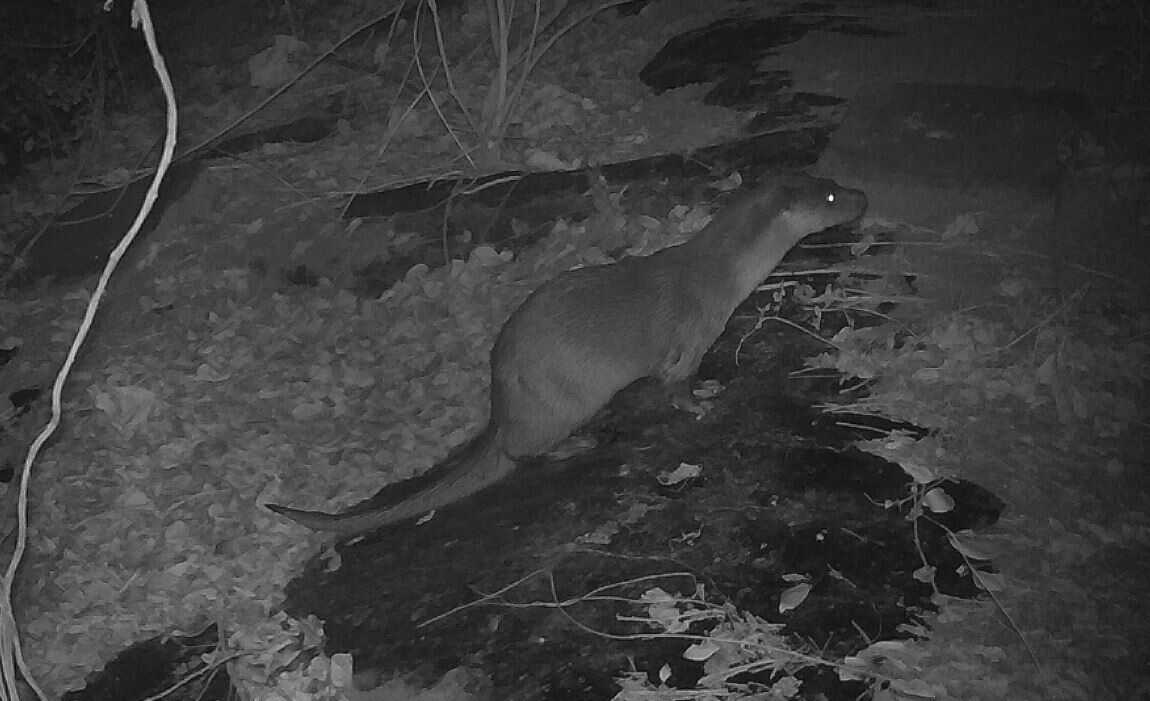
The elusive Eurasian otter (Lutra lutra): hard to see except via photographs taken with camera traps. Photo: Sharne McMillan
Sharne McMillan, a PhD candidate at the University of Hong Kong’s School of Biological Sciences, has almost completed a study of Eurasian otters (Lutra lutra) in Hong Kong, which she began in 2016. So far, she hasn’t seen one.
However, McMillan has found otter scats, referred to as “spraints”, which she analysed to collect DNA. She has taken photographs with cameras triggered when infrared beams are interrupted, and interviewed local people in the otter’s range, which is nowadays restricted to the Deep Bay area of the northwestern New Territories.
Some people have seen them, such as fish farmers who work at night, she said. “The otters are rare and extremely elusive. They often know we’re there and leave before we can spot them.”
While people traditionally think of otters using underground holts, McMillan has not found any in Hong Kong. Instead, she suspects they may breed and rest on a bed of grass, known as an “otter couch”, as researchers have found in Taiwan. Part of the study involves looking at their habitat preferences, as they evidently favour areas with better vegetation cover and limited disturbance. “They want to feel safe,” McMillan said.
Worldwide, otters living near humans are all too often not safe, due to habitat loss, water pollution, and hunting for their pelts. Some of McMillan’s interviewees told her of otters being hunted in the past, while occasionally the animals were caught in traps set for other creatures such as birds, fish, and shrimps. Overall, interviewees suggested otter numbers had declined over time.
More happily, the interviewees had broadly positive attitudes towards this animal, which is typically considered too rare to significantly predate on fish. A recreational fisherman who supported their protection pointed out that “otherwise they will become extinct and kids [won’t be able to] see them”.
McMillan has viewed tens of thousands of images taken with camera traps. At times, these show nothing, as they might be triggered simply by grass swaying in the wind. But the cameras have also revealed mongooses, civets, snakes, birds – and sometimes, to her delight, an otter.
“Occasionally, I’ve seen images of otters with juveniles, or two otters together,” she said. “That’s very special.”
Along with collecting information, McMillan aims to help inform efforts to protect otters and suggest how they can be surveyed and monitored over the long term. “There’s a lot of interest, and NGOs, researchers, the government, and local people should work together to come up with solutions for conserving the otter,” she said.
Ice-age Relics Winning Battle For Survival
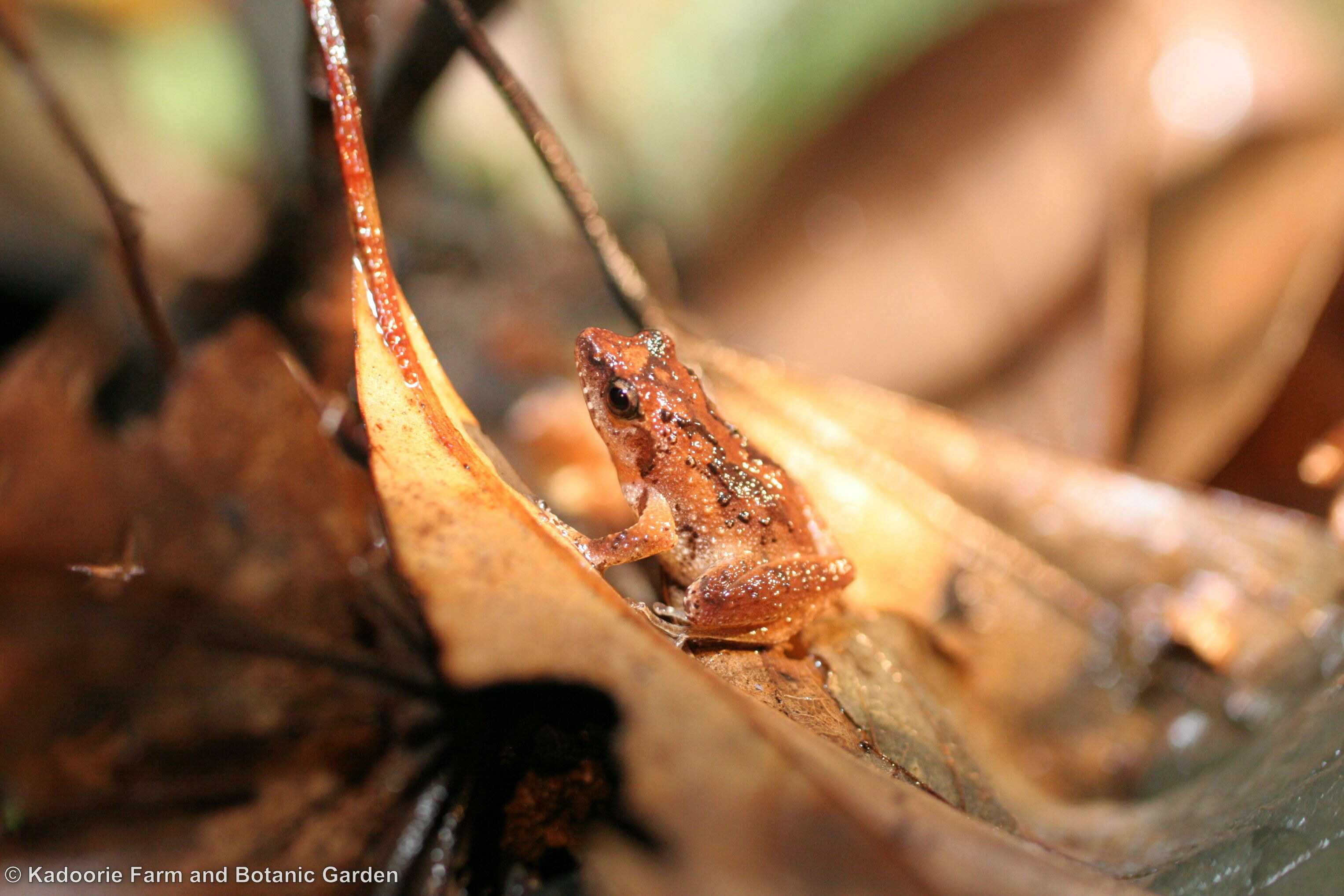
Only in Hong Kong: the 2.5-centimetre Romer’s Tree Frog (Liuixalus romeri), whose known world population live on the islands of Lamma, Lantau, Po Toi, and Chek Lap Kok. Photo: Kadoorie Farm and Botanic Garden
To Dr James Lazell, a former president of the US-based Conservation Agency, Hong Kong is a “biological treasure trove”, which he only discovered by accident when a team of biologists he led was forced to abandon plans for a survey in Mainland China. This was in 1987, and spurred Lazell to make several follow-up visits to search places including Chek Lap Kok, before it was mostly levelled and transformed into Hong Kong International Airport.
Lazell is a herpetologist, and his surveys have yielded 29 species of reptiles and amphibians on Chek Lap Kok – around one-quarter of Hong Kong’s tally. They included Romer’s Tree Frog (Liuixalus romeri), which is endemic to Hong Kong, and named after amateur herpetologist John Romer, who discovered them in a small cave on Lamma Island in 1952.
Romer found more of these tiny frogs, growing to just 2.5 centimetres in length, the next year. But the cave collapsed, and for almost 30 years he searched in vain for them. He died in 1982, believing they had become extinct. But two years later, the frogs were rediscovered on Lamma. Subsequent finds on Lantau, Po Toi, and Chek Lap Kok brought their entire known world distribution to these four Hong Kong islands.
Lazell believes Romer’s Tree Frog and a handful of species that are likewise unique to Hong Kong islands are ice-age relics. They might have been common along a coastal plain that extended along southern China when sea levels were lower during the ice age, but became stranded on hilltops that became islands as the ice sheets melted and the sea inundated the plain.
After the 1990 discovery of the frogs on Chek Lap Kok, herpetologist Dr Michael Lau, chairman of the Hong Kong Wetlands Conservation Association and co-author of Hong Kong Amphibians and Reptiles (1998), scoured the island for more.
He rescued 220 adults before the island was largely levelled to create the new airport. Melbourne Zoo agreed to help with a captive breeding programme, and soon established a healthy population, enabling Lau to release over 1,100 frogs and 1,600 tadpoles at eight sites in Hong Kong.
Today, five of those eight translocated populations have survived, with at least three spreading up to two kilometres, according to Lau, who teaches on the Conservation Biology and Management Master’s programme at the University of Hong Kong.
Romer’s Tree Frogs are monitored and surveyed by the Agriculture, Fisheries and Conservation Department, among others, which has provided up-to-date information on the distribution of this unique species. However, a full population estimate has yet to be done. The largest population is at Ngong Ping, Lantau, and as a result this has been designated a Site of Special Scientific Interest since 1999.
The Tung Chung New Town extension may impinge on some of the habitats but Lau said that the frogs affected would be translocated again to suitable sites nearby. “Since it is protected with a species action plan, the habitat requirement and ecology is well studied, and will be flagged in EIAs [environmental impact assessments] and planning studies, should it be affected by development,” he said.
In addition, existing populations on Lantau and Lamma have expanded since the early 1990s as the forests there mature. “I think the future of this species is quite secure,” Lau said.
Meanwhile, new species of amphibians and reptiles in Hong Kong continue to be found, with recent discoveries including Lau’s Leaf Litter Frog (Leptolalax laui), which is named after Lau.
Hong Kong's Very Own Paradise Fish
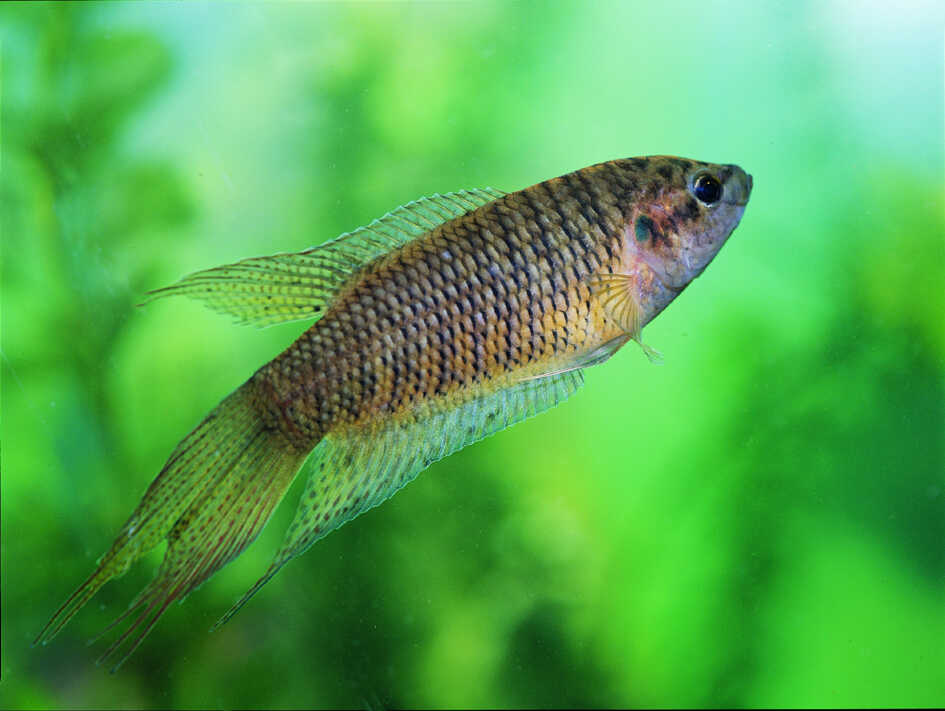
The Hong Kong Paradise Fish (Macropodus hongkongensis), a species new to science, was discovered in the 1990s. Photo: Agriculture, Fisheries and Conservation Department, HKSAR Government
Among other vertebrates first found in Hong Kong and new to science is a type of paradise fish. Researchers including David Dudgeon, Emeritus Chair Professor in Ecology and Biodiversity at the University of Hong Kong, discovered this fish in 1996. It was subsequently identified from its morphology and named the Hong Kong Paradise Fish (Macropodus hongkongensis) by researchers in Germany, while recent genetic work has confirmed that it is distinct from other paradise fishes in Southeast Asia.
Distinguishing features of the Hong Kong Paradise Fish, which has long elegant fins, and red pelvic fins, include black spots on its head and body as well as a white first ray on the pelvic fin. Like other paradise fishes, the male builds and guards a floating bubble nest, in which the eggs and developing young are tended. The female takes no part in parental care.
The Hong Kong Paradise Fish was initially believed to be endemic to Hong Kong, though soon after was found to be present in eastern Guangdong and Fujian. In Hong Kong, it lives in slow-moving streams and wetlands in Sai Kung, Tai Po, and the northern New Territories.
In 2019, a team of biologists from Nanjing Forestry University investigated further, completing the first mitogenome sequence of the Hong Kong-named fish. This determined its uniqueness, and that its closest relative was the Red-back Paradise Fish (Macropodus erythropterus), endemic to Vietnam and sequenced in 2016, rather than the more common Chinese Paradise Fish (Macropodus opercularis) found in Hong Kong and elsewhere in China.
The Hong Kong Paradise Fish is one of 185 freshwater fish recorded in Hong Kong and listed among 21 of “conservation concern” by the Agriculture, Fisheries, and Conservation Department, which has recognised threats to such biodiversity from habitat loss and degradation, climate change, over-harvesting, pollution, and the presence of exotic species – factors that have caused a rapid global decline of freshwater fish populations.
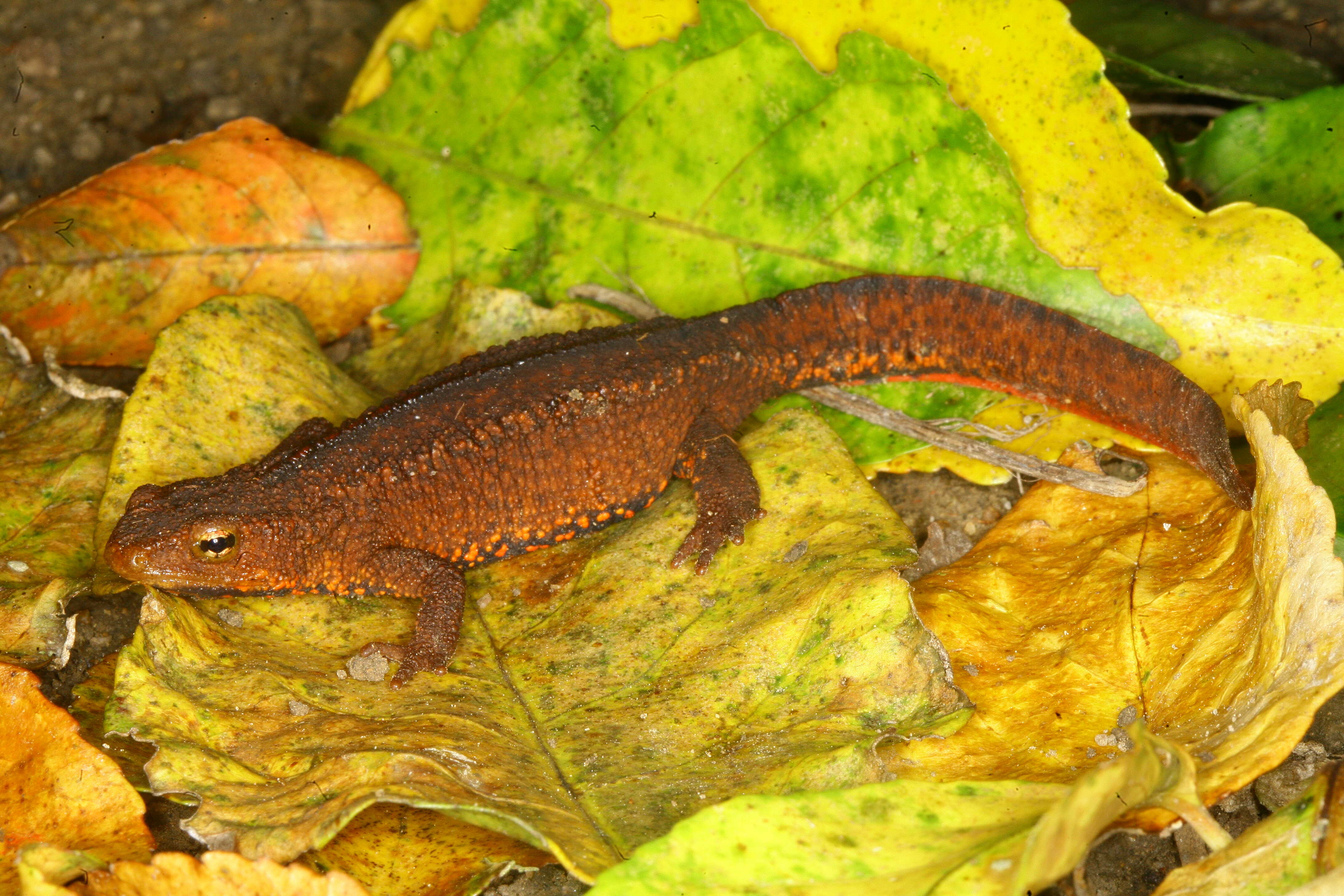 The Hong Kong Newt (Paramesotriton hongkongensis) is
included on the International Union for Conservation and
Nature Red List for Threatened Species. Photo:
Agriculture, Fisheries and Conservation Department, HKSAR
Government
The Hong Kong Newt (Paramesotriton hongkongensis) is
included on the International Union for Conservation and
Nature Red List for Threatened Species. Photo:
Agriculture, Fisheries and Conservation Department, HKSAR
Government
Dudgeon would also like the Hong Kong Paradise Fish included on the International Union for Conservation and Nature (IUCN) Red List of Threatened Species, as has been the case with the Hong Kong Newt (Paramesotriton hongkongensis). “There is a real risk of over-exploitation, and ‘conservation concern’ does not protect animals from collection if they are outside Hong Kong’s country parks,” he said.
Meanwhile, this particular fish has one special status, as the only freshwater fish species named after Hong Kong.
Ants Can Be Smart – And Fiery
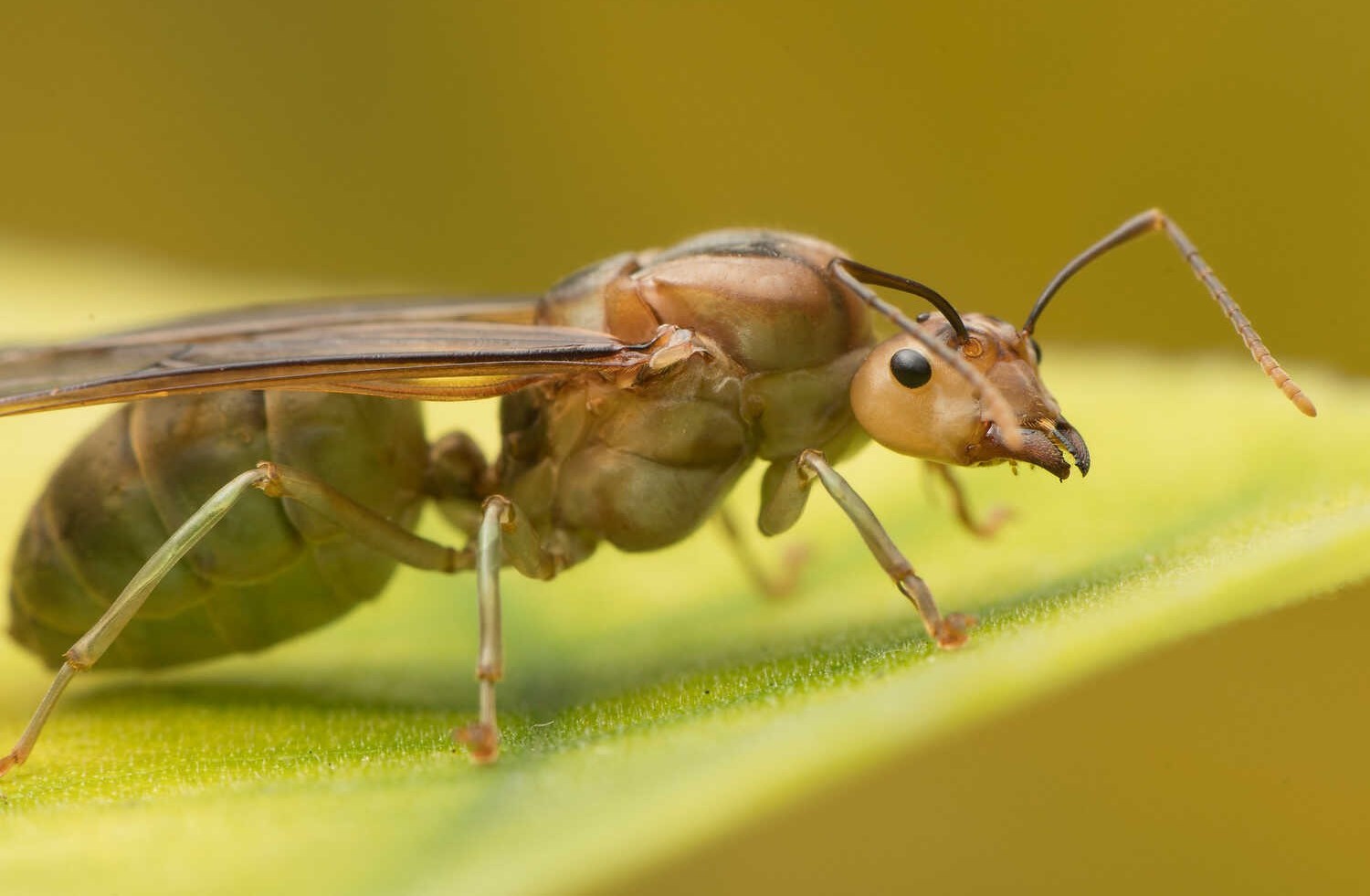
Weaver Ants (Oecophylla smaragdina), a species native to Hong Kong. Photo: Francois Brassard
While endangered, appealing vertebrates often grab the limelight, there is much more to Hong Kong’s biodiversity as a whole. Ant species alone extend to several hundred.
Dr Benoit Guénard, of the University of Hong Kong’s School of Biological Sciences, studies insects, especially ants. To Guénard, ants are important for their interactions with other groups of organisms, helping seed dispersal, aerating and enriching soil, and playing their role in the nutrient cycle, among others.
“They are huge in terms of predation – removing many herbivorous insects, so we have forests,” he said. He is particularly intrigued by their behaviour as social insects and how this contributes to their success.
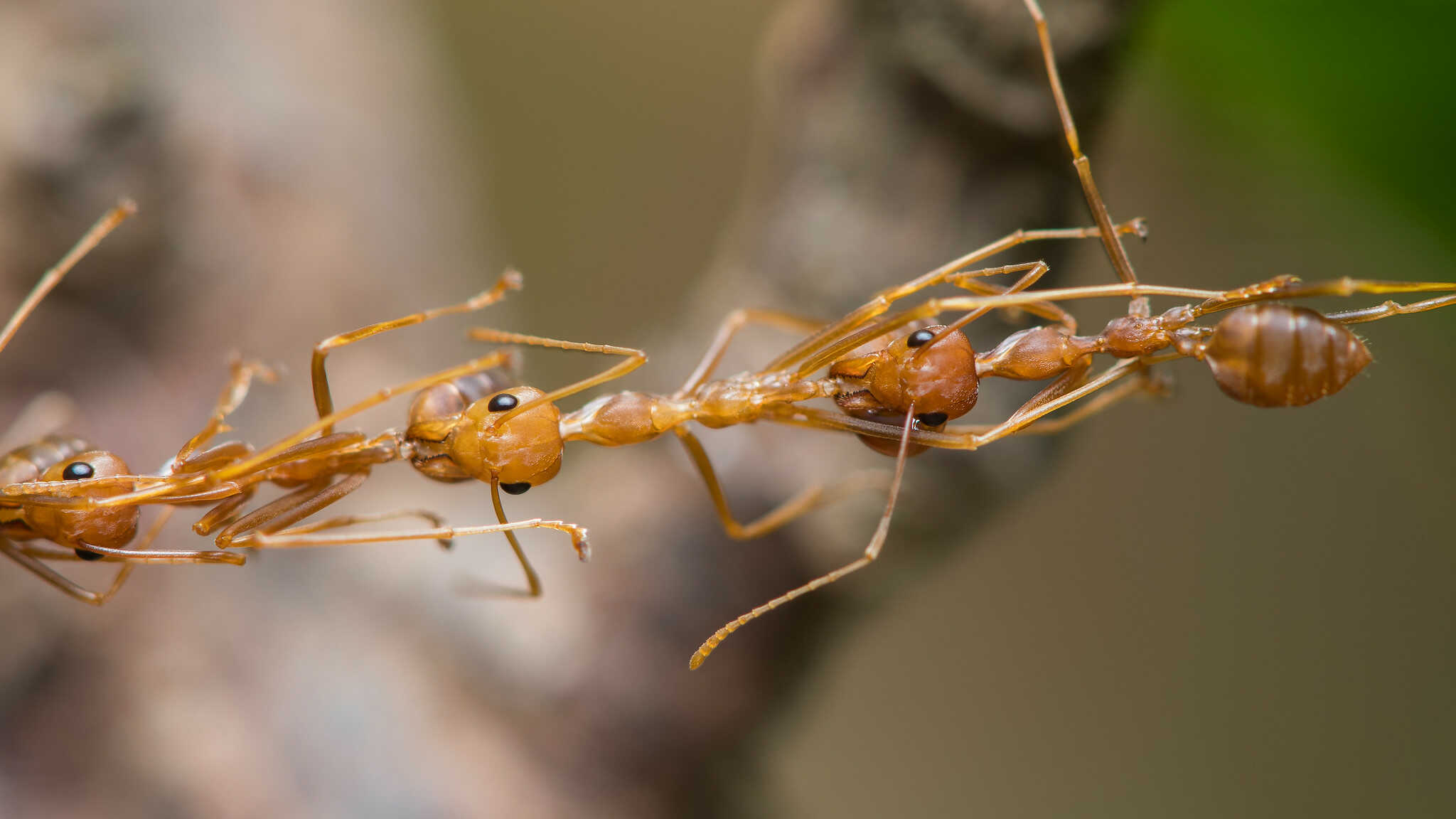 Moving on: the social nature of ants extends their
individual capabilities. Photo: Francois Brassard
Moving on: the social nature of ants extends their
individual capabilities. Photo: Francois Brassard
Guénard is now continuing research on Hong Kong ants, one of the insect groups with relatively strong data to build on. During his career he has described 27 insects such as ants, flies, and wasps that were new to science, the most recent being four new ant species from Hong Kong and Macau, of the genus Polyrhachis, along with seven of that genus that were newly recorded in this area, published in Asian Myrmecology in February 2021.
The seven-millimetre-long Paratopula bauhinia, named in the vernacular as the Golden Tree Ant, was the first species Guénard described in Hong Kong, in an article also published in Asian Myrmecology in 2016. The discovery proved especially notable as the ant is the only member of its genus yet known in Hong Kong.
As its name suggests, this is a forest ant, resting on trees during the day and, as evening approaches, descending to forage in lower vegetation during the night. Guénard and researcher Ying Luo found such ants just a few hundred metres from the university and, to date, they are unique to Hong Kong Island.
Since then, he has described eight more ant species, three species of flies and two species of wasps from Hong Kong. He explained that a newly described species indicates that it is considered new for science.
“First a species has to be described by taxonomists, not only to have a name, but most importantly to have a description that will distinguish it from all other species. Once it has a name, a species can be recorded from other regions, so the knowledge on the species distribution improves.
“Both taxonomic descriptions (‘naming’) and recording (‘knowing the distribution of a species’) are important steps in order to study them, and eventually protect them,” he said.
“Finding new species is not so unusual when you’re an entomologist,” he said. “But it’s always exciting, describing something nobody has found.”
Many more are likely to be discovered. “We are still working on a final list of the ants of Hong Kong, and still frequently discover new records and new species. It seems reasonable to say that between 300 to 400 species of ants can be found in Hong Kong,” he said. Ant species known globally extend to more than 15,700, a number expected to increase considerably in the coming years.
Not all ants are welcome. Several are “invasives” – exotic species introduced by humans and with some negative impacts on biodiversity, and even people. “Hong Kong has one of the highest densities of invasive species in the world, only exceeded by Hawaii and Florida,” Guénard said.
“At ecosystem level, there’s something like an equilibrium between predators and prey that may have evolved over millions of years. But when species from outside arrive, they are playing a different game,” he explained.
The Red Imported Fire Ant (Solenopsis invicta), which is native to South America and named for its intensely painful sting, is especially prominent among Hong Kong’s invasive ants. Guénard is studying fire ants here, and has learned that some farmers are so deterred by the stings that they give up farming part of their land.
Native ants, by contrast, play an important role in local ecosystems. For instance, Weaver Ants (Oecophylla smaragdina) defend trees against herbivores. They make nests by sewing leaves together, forming brown, ball-like structures that are easily spotted in branches.
“If you look in a nest, you find a community of insects within,” Guénard said. “There are species that mimic ants – such as spiders that prey on them, and juvenile stick insects that avoid predation by living amongst the ants. Others are kept by ants for food. With invasives, you lose all of this interdependence.”
Urban Greening
Championing Trees
Chinese Banyan trees (Ficus microcarpa) have taken root on stone walls in various areas of Hong Kong and are among 1.7 million trees of different species being managed in the city. Photo: Creative Commons/Wikimedia
Venerable Chinese Banyans are among the thousands of trees that squeeze within Hong Kong’s high-rises. What does the future hold for them and the city’s greening endeavours?
Nature literally clings to life in Hong Kong’s dense urban areas in the form of the city’s vast “champion trees” – some up to 400 years old – and the fauna they host.
These are the Chinese Banyans (Ficus microcarpa) that drop and spread their roots along the stone walls found on Battery Path in Central, in Kennedy Town’s Forbes Street, and on other roads on Hong Kong Island, that have stood broad and tall in Kowloon Park since the early Qing Dynasty, and, as some still believe, act as a safe haven for the gods among Hong Kong’s last temple trees and feng shui woods.
They cool the city’s streets and parks, and support a vast array of wildlife, from Masked Palm Civets (Paguma larvata) and Pallas’s Squirrels (Callosciurus erythraeus) to bats such as the Short-nosed Fruit Bat (Cynopterus sphinx) and birds such as noisy Mynas (Acridotheres tristis).
Today there are about 300 ancient banyans in city areas, according to Professor Jim Chi-yung (Croucher Fellowship 1986). Jim is Research Chair Professor of Geography and Environmental Science at the Education University of Hong Kong, and a leading international researcher, educator, and advocate for understanding, conserving, creating, and refining nature in cities.
“They are a part of our history. This is our communal memory,” he said, adding that Hong Kong is unique in the way so many have managed to take root in the tiniest crevices, and grow to urban giants.
“Many are growing on stone walls, having seeded spontaneously, with the help of the birds and bats that enjoy their fruit,” he said. “Nowhere in the world has so many.”
As in numerous cities around the world, Hong Kong’s urban planners and researchers aspire to preserve or create a green environment in parks, within new developments, and roadside areas. But trees in the local urban landscape face particular challenges as their roots and crowns compete for space needed for their health. Typhoons, heavy rains in summer, and drought in winter add to the stresses.
Trees planted
2010/11 to 2019/20
Urban areas: 544,300
Rural areas: 5,718,500
Source: Development Bureau
Jim has led extensive survey work that has taken stock of Hong Kong’s arboreal assets in urban and rural areas, how trees are faring, and how they can best grow in stressful city conditions. He is the most cited scholar in the world in the field of urban greening, according to ISI Web of Science.
Following surveys in 1994, 2000, and 2008, he published a study in 2012 enumerating 19,154 trees in and around Hong Kong’s urban areas, including 149 species in 45 botanical families. As a result of the surveys, the government formed and now keeps a register of around 460 “Old and Valuable Trees” on unleased government land in urban areas –“old” being more than 100 years old, and “valuable” being trees that are large, of “outstanding form”, rare, or of cultural or historic significance. However, as a 2019 Legislative Council brief explains, there is no legislative or regulatory protection for trees on the register.
On Hong Kong Island and in Kowloon, 138 stonewall trees, including 98 Chinese Banyans, 24 White Fig (Ficus Virens) and seven Japanese Superb Fig (Ficus subpisocarpa), are managed by the Architectural Services Department (ASD). According to ASD, initiatives helping these historic trees to thrive have ranged from shifting the proposed footprint of the Kennedy Town MTR Station to minimise the impact on the stonewall trees in Forbes Street, to creating planters for their roots, guiding and trimming aerial roots, and using sensors to monitor their health.
However, unlike many cities, Hong Kong’s roads and pavements are narrow, with buildings occupying the bulk of the land space. “Because it is ultra-compact, we have very little space for greening,” Jim explained.
“Conditions for tree growth are pretty poor,” he added.
Just how poor was evident recently, when at least 60,000 were destroyed in August 2018 when Typhoon Mangkhut ripped through the city, according to official records. Jim estimates the number to be closer to 100,000. These included some of the large banyans and cotton trees, along with many non-native Acacias (Acacia confusa).
His review of the damage after the 2018 typhoon showed that many of the fallen trees had lacked adequate root space and soil to withstand a strong typhoon, having been planted in small tree pits or with roots damaged by construction activity.
Within two years, many of the empty pits were refilled with new trees, but his recent surveys have indicated that many sites were not improved before replanting, Jim said.
Entrenched practices needed to change, he noted. “We must improve the site conditions, soil quality, method of planting, and choose the right species,” he said, with the species depending on the space and soil conditions, factors that should be incorporated into landscape design.
The Development Bureau, which has a coordinating role for tree management, noted in a written response the importance of “right tree, right place”, with wider use of different species encouraged to increase their resilience to pests and diseases, and the aim to provide adequate space for healthy tree growth.
It stated: “We promote a holistic greening approach, embracing adequate space allocation for new planting, proper selection of planting species as well as quality landscape design.”
Proactive management is needed for the estimated 1.7 million trees in urban areas, with policy evolving over the years from tree planting, management and maintenance to the more holistic concept of urban forestry that recognises the multiple disciplines and benefits involved in a rich urban ecology.
That ambition is complicated by the fact that this task is spread across nine core government departments. The Leisure and Cultural Services Department, with an estimated 598,000 trees located along urban roadsides and in venues such as public parks; and the Highways Department, with 590,000 trees beside expressways and roadside manmade slopes and walls, have the largest commitments.
In 2017, the Development Bureau set up the Urban Forestry Advisory Panel so policy could be better informed by science and applied research by drawing on the expertise of academics and professionals from fields such as urban forestry, plant science, engineering, and landscape architecture.
A major on-going task involves the removal of thousands of senescent trees, and replanting, as undertaken by the Highways Department in pilot areas such as Wong Tai Sin and Shatin and study sites along Tai Tong Shan Road.
In the Highways Department programme, its landscape architects have worked with environmental scientists, tree management researchers, and ecologists at Chinese University of Hong Kong and Hong Kong Baptist University College of International Education to replace Acacia trees. Acacias are an exotic, fast-growing species of limited ecological value planted extensively in the 1950s along highways and now approaching the end of their lives.
Smaller native and localised trees, shrubs, and ground cover that can enhance biodiversity and environmental performance are being used to replace them, such as Celtis, Bauhinia, and Ilex species among the trees, Rhododendron, Ixora, and Hibiscus among the shrubs, and Tuberous Sword Fern for ground cover – now attracting a wider range of birds and butterflies, according to the surveys being conducted.
Dr Amos Tai (Croucher Fellowship 2012) is Associate Professor in the Earth System Science Programme and Graduate Division of Earth and Atmospheric Sciences at the Chinese University of Hong Kong and one of the principal investigators on the Tai Tong Shan Road study. “This is an important project to reveal the existing problems of Acacia plantations,” he explained.
These include fungal diseases, reduced ecosystem services, such as carbon and pollutant uptake, ageing trees in poor health that have a high likelihood of falling during strong storms, and poor facilitation of biodiversity. “We found that replacing mature, failing exotic Acacia with native, actively growing young trees and shrubs can have multiple benefits that counter these problems,” Tai said.
His particular role involved measuring the leaf density and photosynthetic capacity (i.e. primary productivity) of the mature Acacia as well as the replanted and wild native trees at the study sites. Data was fed into a computer model to estimate the ecosystem services in terms of carbon and pollutant uptake provided by the different trees. “We found that Acacia provides less of all those services than the replanted or [wild] native trees,” he said.
The initiative, he added, was now a work in progress. The success would be seen in the decades ahead. “But theoretically, the programme has preliminary great potential,” he said.
Dr Alvin Tang, Hong Kong Baptist University College of International Education Tree Management Programme Course Co-ordinator, who was responsible for the tree health assessment on this project, explained: “After each event [such as a typhoon], the government tries to promote a better practice and guidelines for planting. However, there are always gaps between advocating and implementing because there are no strict rules and regulations.”
He is contributing to better practice through his involvement in the development of Arboriculture and Horticulture within the Hong Kong Qualifications Framework, and in training practitioners for a professional diploma in tree management – helping to address the government’s concern that Hong Kong lacks capacity in terms of the supply of qualified personnel to inspect and manage so many trees, whether on public or private land.
Another initiative looking to the future is the HK$32 million Jockey Club Smart City Tree Management Project, which has brought together science and the community to promote better management, care, and knowledge of trees.
The three-year scheme, ending in 2021 and funded by the Hong Kong Jockey Club Charities Trust, has involved research collaboration with Hong Kong Polytechnic University, University of Hong Kong, and Hong Kong University of Science and Technology, as well as participation by the Development Bureau and Friends of the Earth (HK).
The universities have developed smart-city sensing technology to monitor tree health, for example, how they respond to wind force and root movement so that arborists can follow up to treat a tree before it succumbs to another big typhoon. Friends of the Earth (HK) has been encouraging its supporters to become tree monitors.
Feng shui woods and their traditional benefits
While science and education can help inform practice today, Hong Kong can also draw on the special place of the tree in Chinese culture and village life.
Traditionally, trees such as Chinese Banyan (Ficus microcarpa), Incense (Aquilaria sinensis), and Camphor (Cinnamomum camphora) were planted in crescents of woodland around a village to create a microclimate for cooling in summer and protection from cold winds in winter, to prevent soil erosion, and ensure soil and water conservation. They were also important for their supplies of firewood, fruit, nuts, and medicines. Popular fruits such as longan, lychee, guava, and papaya were planted on their fringes.
These were feng shui woods, of which more than 116 have been surveyed by the Agriculture, Fisheries and Conservation Department’s Plant Working Group. Examples listed by the Hong Kong Herbarium include Lai Chi Wo on the northeastern border and Lai Chi Chong in Sai Kung, and even on the fringes of the city on Hong Kong Island, in Aberdeen.
Jim said: “They brought tremendous benefits to the village, for generation after generation. In the old days, scholars introduced the idea of superstition to convince illiterate farmers not to damage the trees. It became an ill omen to harm a tree. But we have been severed from past customs, and respect for nature.” He sees public education as vital to rekindling that care for trees, and is developing an app for that purpose.
Tai is especially interested in how trees can help cool city streets by providing shade, and through transpiration, though there is a catch. “Alongside roads, trees can emit VOCs [volatile organic compounds], and these can react under sunlight with nitrogen oxides from cars and other vehicles to create ozone,” he said.
“So we need care with what kind of trees are planted. They should not emit too many VOCs.” He cited Bamboo (Bambusa multiplex), Weeping Willow (Salix babylonica), Fishtail Palm (Caryota mitis), and the Chinese White Poplar (Populus tomentosa) among the trees and plants commonly found in Hong Kong roadside areas that are susceptible to excess VOC emissions.
Another ecologist, and member of the Urban Forestry Advisory Panel, who has shared advice on what to plant is Dr Billy Hau, Programme Director of the MSc in Environmental Management at the University of Hong Kong, and founder of the Native Tree Nursery at Kadoorie Farm and Botanic Garden that promotes the use of native species in forest restoration.
His 2011 review on biodiversity for a Development Bureau plan on street tree management identified 191 plant species, ranging from herbs to shrubs and trees, that offer a range of benefits to urban birds, mammals, and butterflies. “Future landscape design in Hong Kong with the aims of promoting biodiversity conservation could take reference to this list in selecting plant species,” he suggested. About half of these species are native, recommended for attracting more birds and other wildlife.
He sees that Hong Kong has made progress in making room for nature in park areas and other open spaces. “If you look at the planting [at] the Central Government Offices and Lung Wo Road – using planter beds rather than tree pits – it is a lot better than the old designs.”
Ecologists and environmentalists also advocate practice in tree and park management that is not only beautiful to the human eye, but goes further in incorporating the needs of other creatures to achieve the “living in harmony with nature” as envisaged in the Convention on Biological Diversity’s Strategic Plan 2011-2021.
Jim said: “The worldwide enlightened trend is to adopt a naturalistic approach to design and manage urban parks. It is time that our parks are nurtured to fulfil the shared expectations of both people and our wildlife companions.
“After all, parks were initiated in modern times as emulations of nature rather than human domination over nature.”
Walls and roofs that nurture nature
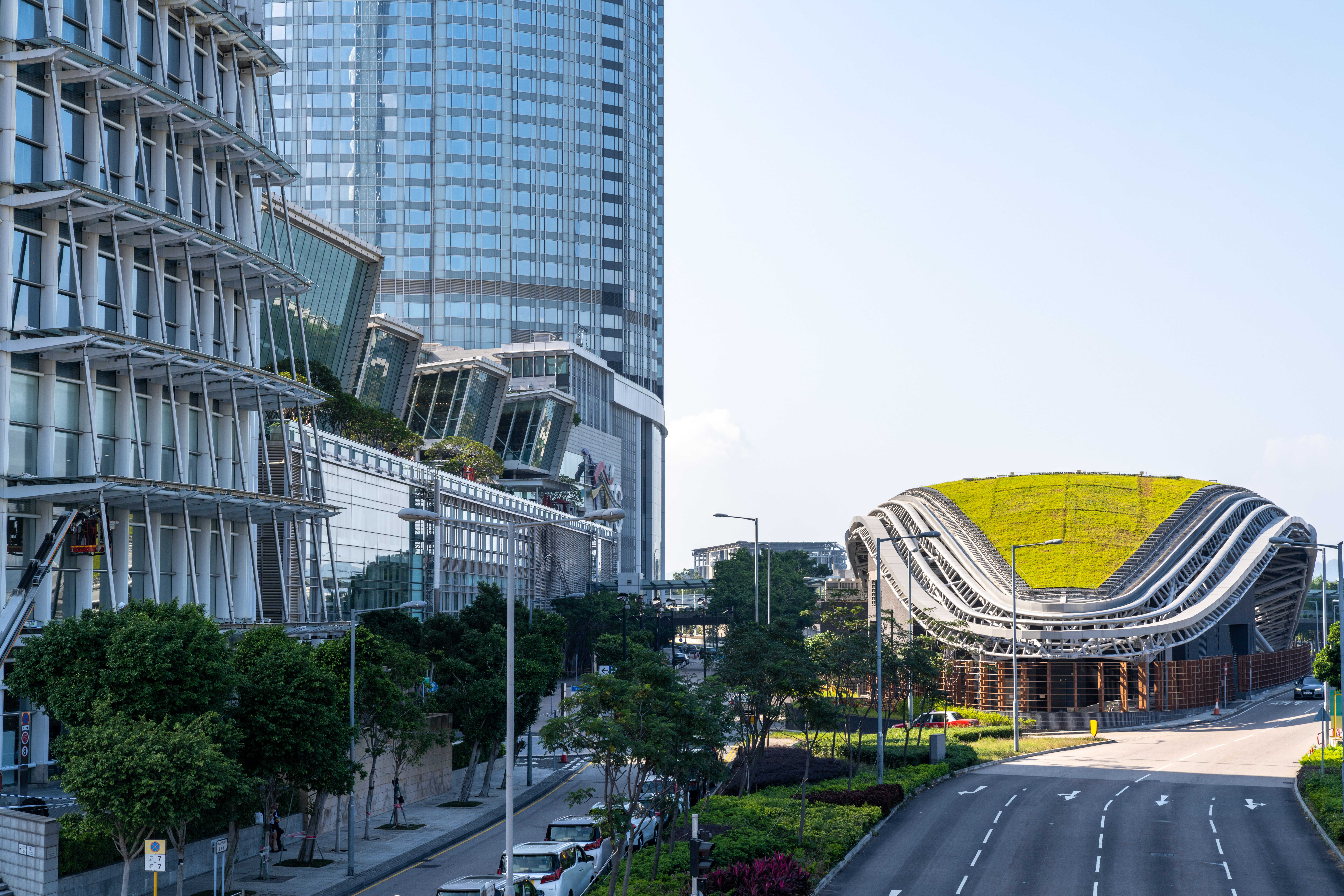
The green roof of the Central-Wanchai bypass tunnel: building science researcher Dr Caroline Chan sees vertical greening is of paramount importance as Hong Kong’s population and urban areas continue to grow. Photo: kylauf/Shutterstock
One way to expand space for nature in such a dense, high-rise city as Hong Kong is to extend the greenery upwards in the form of vertical green walls, and roof gardens and woodlands.
The Hong Kong government sets minimum requirements for green space around buildings, and encourages sky gardens in the Development Bureau’s Sustainable Building Design Guidelines. But in vertical greening, the city is lagging behind Singapore, according to researchers.
However, there are examples of green-clad buildings established long enough to prove they not only improve the energy efficiency of the building, but have also become established homes for birds and insects.
Professor Jim Chi-yung, of the Education University of Hong Kong, and known as the father of the city’s green roof movement, is delighted that the green wall wrapping and rooftop woodland that he designed and completed for China Light and Power (CLP)’s substation at Chui Ling Road in Tseung Kwan O in 2013 is continuing to thrive today.
Rather than using planters to green the 500-square-metre façade, Jim employed “nature’s climbers”, such as Chinese Wisteria, Japanese Honeysuckle, and Firecracker Vine. For the Sky Woodland on the 520-square-metre roof areas, Hong Kong Camellia, Incense Trees, and Scarlet Sterculia were among 80 trees from 32 native species planted. This is now home to nesting birds, bees, butterflies, and other insects.
Jim is continuing to explore the area, leading research to investigate the optimal soil conditions for green walls and roofs, and their cooling and energy-saving benefits. A 2020 study showed that a woodland canopy intercepted about 90 per cent of incoming solar radiation, and on sunny days reduced highest mean surface temperatures by 2.77 degrees Celsius, and the air temperature by 2.27 degrees Celsius.
Meanwhile, he has indicated that safety elements – such as loading limits and drainage – also needed to be informed by science and need not limit the ambitions for more green buildings.
“Green roofs are important islands of nature in the city,” he said.
Indeed, flocks of sparrows and Black-collared Starlings can now be seen foraging in the grass of one of the largest of the city’s green roofs, above the Central-Wan Chai bypass tunnel portal, commissioned by the Highways Department. The tunnel opened to traffic in 2019.
Other Hong Kong researchers have utilised their expertise in architectural and building science to inform greater use of vertical greening, including on skyscrapers.
Research by Dr Caroline Chan, Lecturer in Building Science and Technology at City University of Hong Kong, described vertical greening as of paramount importance as Hong Kong’s population and urban areas continue to expand.
She has explored why there has been little application of vertical green walls, with Hong Kong trailing Singapore in terms of high-rises with self-sustaining vegetation for cladding. This is despite widespread local and international interest in the benefits of such walls, for reduced energy consumption, mitigating against air pollution, and increasing biodiversity in the city.
Vertical greening has been used on government and utility buildings, and retail levels of some recent developments, such as the living wall for the K11 Musea retail and cultural complex in Tsim Sha Tsui, but does not match Singapore in reaching to the higher levels of city skyscrapers.
Chan’s survey of architects, published in 2018, indicated the mix of incentives and guidelines that could help developers green their buildings upwards to overcome the higher initial costs and price of maintaining a green façade.
“There are improvements in Hong Kong,” she said. “More greening has been done by the government and private sector. New developments are usually larger in scale, which make them more flexible to incorporate green designs in the planning stage.”
Additional education was needed to promote sustainable design knowledge among young professionals, with this area included in university courses, research, and community activities such as design competitions and exhibitions, Chan said.
While Chan cites improving biodiversity by creating habitats for birds, insects and microorganisms as a benefit of greening, “attracting pests and unwanted animals” was, ironically, a concern among the surveyed architects, as were technical issues such as implications for structural load capacity and damage to the building.
Hong Kong buildings could go greener if there was “more research related to the technical issues such as the suitable species for growth in Hong Kong in view of the climate change in recent years, design details for cost-effective greening options, especially for cutting costs in the maintenance period, and technical guidelines for designers and building owners”, she said.
Meanwhile, fieldwork and modelling by a research team at Chinese University of Hong Kong’s School of Architecture and Institute of Future Cities, published in 2017, found that such efforts would be worthwhile. Greening 30 to 50 per cent of high-rise facades could make for a more comfortable city by reducing daytime and night-time temperatures by one degree Celsius. The team advocated that greening at ground level, vertical facades, and roofs should be included in the urban planning process.
But equally important, such greening brings quick benefits for nature too. Jim said of the CLP sub-station project: “When we started planting trees, they had not even settled in the soil when the birds and butterflies began to come.”
Surviving amid the urban jungle
Birds in the city
Red-whiskered Bulbul ( Pycnonotus jocosus). Photo: Wei Shyy
Geography and climate account for more than 550 species of birds that live or vacation in Hong Kong and its environs, with an impressive mix prospering in the midst of the metropolis.
If you stroll through one of Hong Kong’s urban parks – Kowloon Park, King’s Park, Victoria Park, or Hong Kong Park, for example – you are likely to find several of the city’s more familiar birds. Chinese and Red-whiskered Bulbuls can be seen on prominent perches in shrubs and trees, easily noted thanks to their effervescent calls and the latter’s distinctive black crest, Oriental Magpie-Robins in full and varied song may be spotted on fences, while Black-Collared Starlings might be strutting about on lawns.
Masked Laughingthrushes could be foraging quietly in shrubs, with Tailorbirds also preferring low cover. There may also be a fleeting glimpse of a tiny Fork-tailed Sunbird – the male flashy red, turquoise and white, the female an elegant green – hovering for nectar around red flowers, with Hibiscus and Mexican Fire Spike being two favourites.
Compared with cities such as Beijing and Shanghai, Hong Kong’s parks and surrounding areas also attract more elusive forest birds, according to Dr Caroline Dingle, who leads the Tropical and Urban Evolutionary Ecology research group at the University of Hong Kong’s Faculty of Science and is conducting research on how birds have adapted to urban life.
These include Scarlet Minivets that have recently extended their range to locations such as Hong Kong Park, where flashes of the yellow female and scarlet male can be seen. Turquoise Verditer Flycatchers can also be spotted flying from tree to tree in winter months.
Dingle explained that this diversity in avifauna is due to the city’s remarkably compact urban areas, which means that none of its urban parks are far from the forested hills of Hong Kong Island and the New Territories.
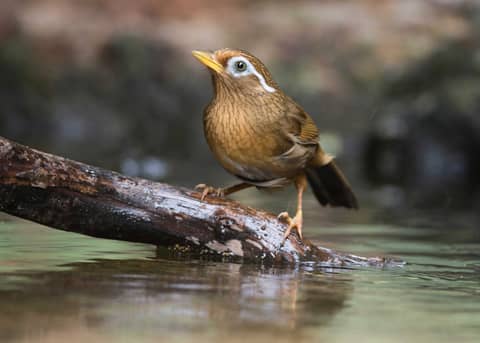
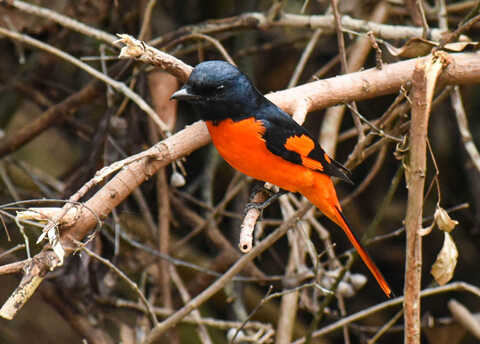

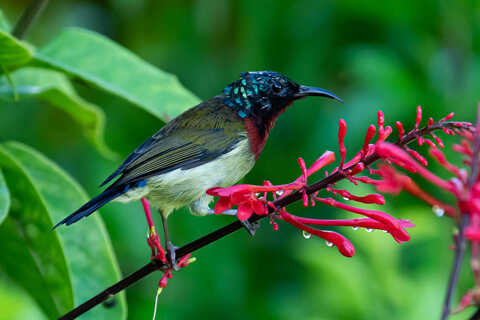
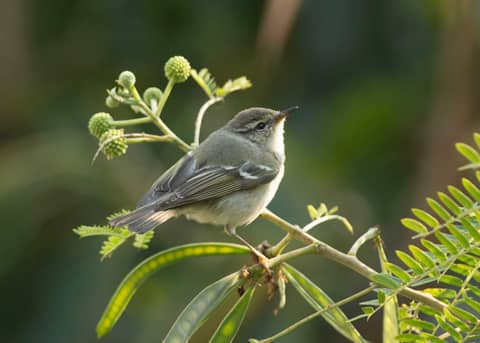
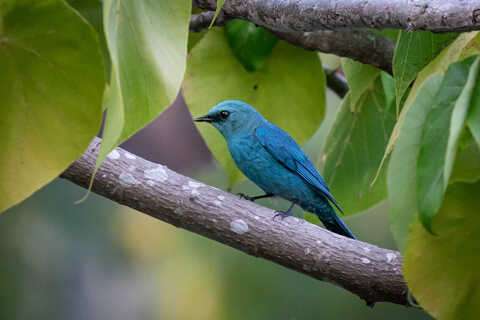

Of the 559 different species of birds recorded in Hong Kong, just over 100 species have been seen in urban areas. Of these, close to half are resident.
Most of Hong Kong’s birds are seasonal (spending the winter), passage birds, or vagrants straying beyond their normal territories, according to Yu Yat-tung, Research Manager of the Hong Kong Bird Watching Society (HKBWS). Only around 20 per cent of all bird species recorded are residents, taking into account the many shorebirds that visit the wetland areas.
Hong Kong attracts these visitors because of its location between temperate and tropical areas in the middle of the East Asian-Australasian Flyway, a climate that caters for all birds at different times of the year, and the wide range of habitats – woodlands, grasslands, farmland, and the marine environment within short distances of the urban areas and their parks, he said.
Access to such a range of habitats has made it an ideal stopover for birds travelling from the Northern Hemisphere to the Southern Hemisphere, and vice versa. These include forest birds escaping the colder winters to the north, as well as the many more species of shorebirds heading to Deep Bay and the surrounding wetlands.
The range of birds to be found in pockets of the city and its fringes can be illustrated by three better-known families of forest birds: 40 species of flycatcher and other birds of the Muscicapidae family; 28 species of leaf warbler (Phylloscopidae family); and 10 species of thrush (Turdidae family), mostly passage migrants.
How urban parks and other open spaces in the city are managed is important to biodiversity. But it is a contentious issue when the types of plants chosen, concreting, regular cleaning, and use of insecticides to combat mosquitoes can make these areas less welcoming for wildlife.
After Kowloon Park was redeveloped in the late 1980s, its surviving banyans plus extensive shrubberies helped make it a hotspot for migratory birds. The HKBWS advised park management to include wilder vegetation in the conservation corner that was established. Yet the society’s records show bird sightings have since declined, as the park has become more managed.
Yu said: “HKBWS has suggested that they reduce the frequency of cleaning and vegetation management.”
However, an ornamental bird lake, with its ready supply of fish and surrounding tree canopies, has attracted a community of Black-crowned Night Herons, an example of how nature can be accommodated in a city.
The HKU urban ecologists have conducted research on how the types of habitats and shrubs found in parks may affect birds. Surprisingly, the study conducted by MPhil student Chan Wai-shan found that the diversity of habitats did not affect the number of species or abundance of birds. “In a small park with many different habitat types, the size of each habitat might become too small to support any specialists,” Dingle explained.
She suggested that landscape architects could work more closely with ecologists to ensure that the shrubs and trees chosen, and how they are managed, are good for birds and other fauna, as well as humans.
Meanwhile, Dingle is investigating how the more common resident species, such as bulbuls, doves, and sparrows cope with city life, in particular the noise.
“We find that most species of birds increase the frequency of their vocalisations in the presence of urban noise,” she said. “Urban noise tends to be low frequency, so by shifting their songs upwards, birds may be able to avoid their signals being masked by the traffic noise.
“We have also shown that these shifts lead to changes in response behaviour. When a bird in a city hears songs recorded in noisy and quiet areas, it responds much more strongly to the song that has been adjusted to noise.”
This is important as those unable to adjust may show reduced fitness. “They may be less likely to attract a mate or defend a good territory, so may not have as many offspring.”
However, Hong Kong’s advantage for its birds is that they do not have to go far to escape from the urban jungle.
Endangered Cockatoos Find Free-flying Refuge
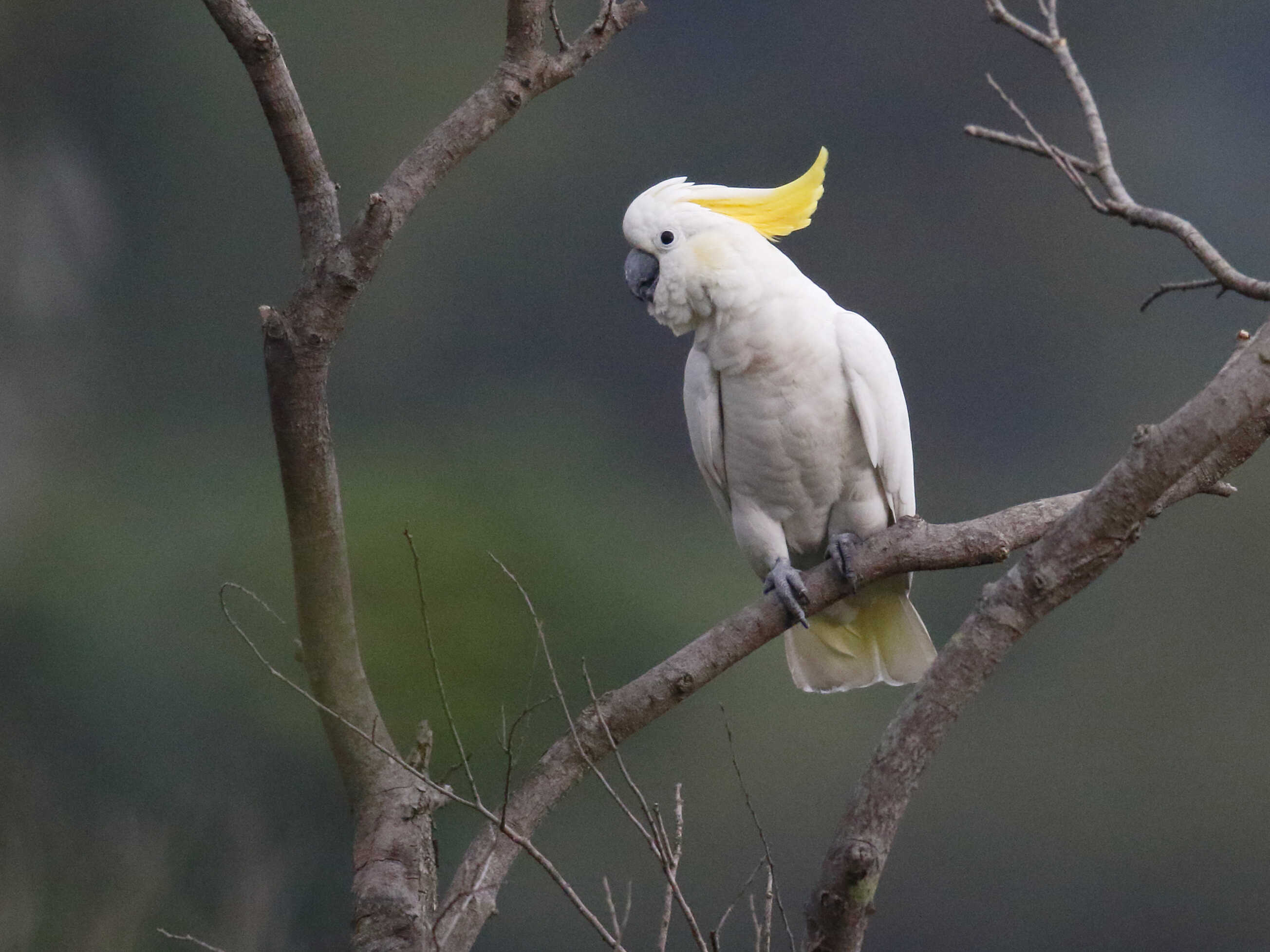
Living it up: 150 to 200 Yellow-crested Cockatoos (Cacatua sulphurea) now reside in Hong Kong, one-tenth of the world population in the wild. Photo: John Holmes
One of the joys around and above the skyscrapers of Hong Kong Island is the sight of the Yellow-crested Cockatoo, not in a cage but flying wild.
In fact, this bird is not a Hong Konger at all, but an introduced species living far from its original home of Indonesia. However, it has become a well-established city resident, and given it is rated as a critically endangered species by the International Union for Conservation of Nature (IUCN) Red List of Threatened Species, its presence in Hong Kong is now important for its survival.
 Home from home: holes in trees have provided a breeding
ground. Photo: Martin Williams
Home from home: holes in trees have provided a breeding
ground. Photo: Martin Williams
Free-flying cockatoos, likely to have escaped from captivity, were first recorded in Hong Kong in the late 1950s, according to the University of Hong Kong’s Dr Caroline Dingle, whose team studies this species in the city, among others. Cockatoos found fruits and nuts, and even nectar from Cotton Trees to their liking, along with holes in trees where they could breed and establish a population.
Today, there are around 150 to 200 cockatoos living wild on Hong Kong Island – almost one-tenth of the world population in the wild.
“ Not many cities are a safe haven for a critically endangered species ”
- Dr Caroline Dingle
“Although Hong Kong is not the native habitat for this species, the Hong Kong population is now likely one of the biggest populations of the cockatoo, and is relatively safe from trapping,” Dingle said. “One of our goals is to monitor their breeding success to determine whether this population is likely to persist.” There was no evidence that the introduced species was having any negative impact on the local ecology, she added.
The study could also help determine whether the Hong Kong population is healthy enough to allow some to be captured, and released in the species’ native Indonesia, where demand for the pet trade has devastated its population, particularly in the east of the country.
Meanwhile, Dingle’s focus is on ensuring they survive here. “Not many cities are a safe haven for a critically endangered species,” she said. “They are an incredible asset for Hong Kong. You look out of the window, and they are just outside.”
Ho Man Tin Oasis Draws Migratory Birds
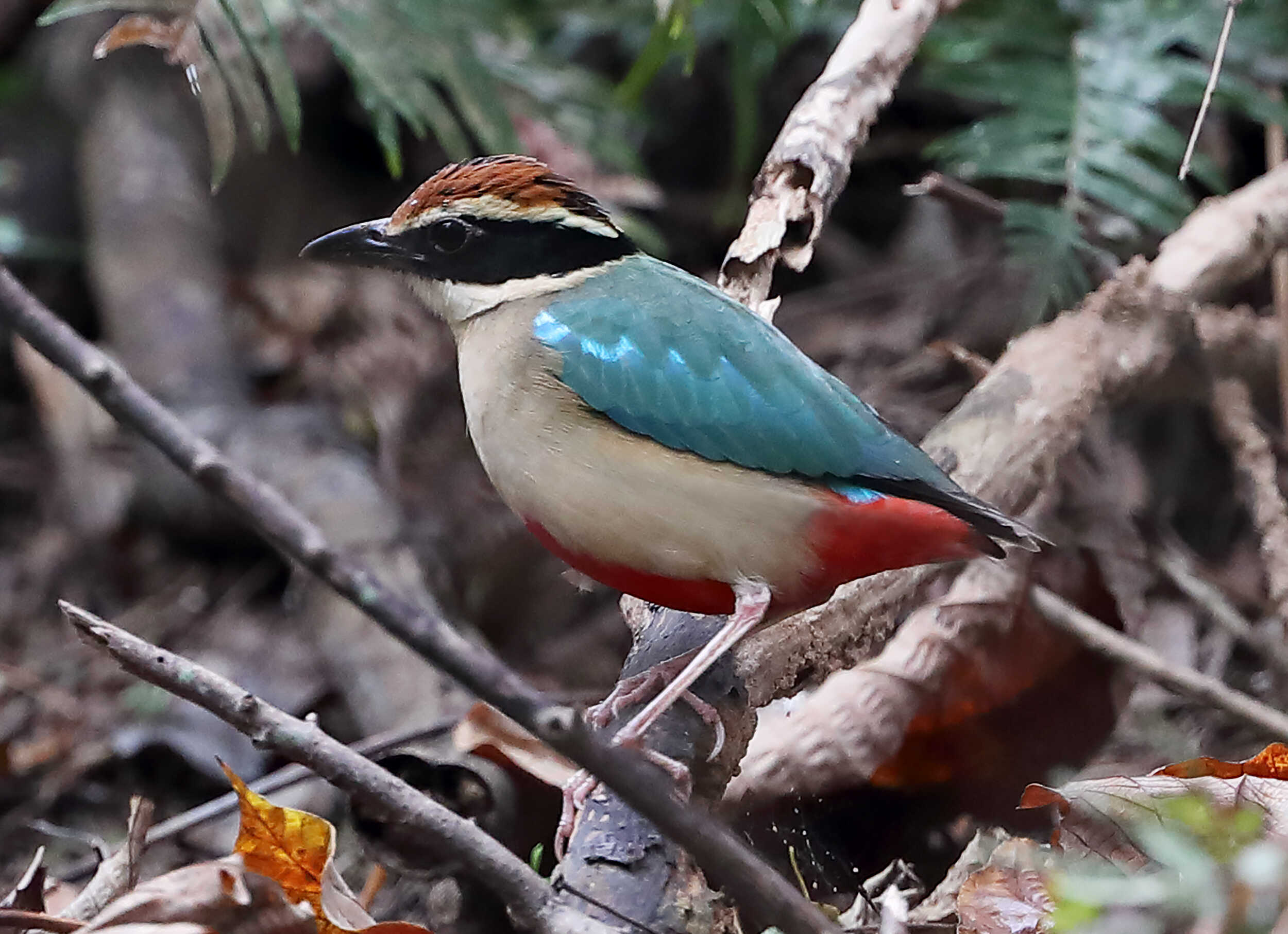
Passing through: the rarely seen Fairy Pitta (Pitta nympha) appears in the residential district in spring or autumn. Photo: Michelle & Peter Wong
Many birds heading into Hong Kong on a stopover or winter basis have found a surprising haven in the heart of the city.
Ho Man Tin, a mainly residential area in Kowloon, has become a popular birdwatching destination to catch sight of these migrants, thanks to a combination of a favourable woodland habitat bordering its reservoir and pioneering observations by citizen scientist John Chow.
Chow works as a school science laboratory technician in the Ho Man Tin district. In 2012, a friend introduced him to birdwatching, a turning point in his life. He had taken students on outings to learn about astronomy, but found birds living so close to humans could be a greater inspiration for them.
He began learning more, including taking a course with the Hong Kong Bird Watching Society (HKBWS).
To Chow, even well-known birds can be intriguing, such as the mysterious meanings of the calls of the Cinereous Tit. He also began finding migrants that were uncommon or extremely rare in Hong Kong, including Narcissus Flycatchers with black upperparts and brilliant orange-yellow underparts.
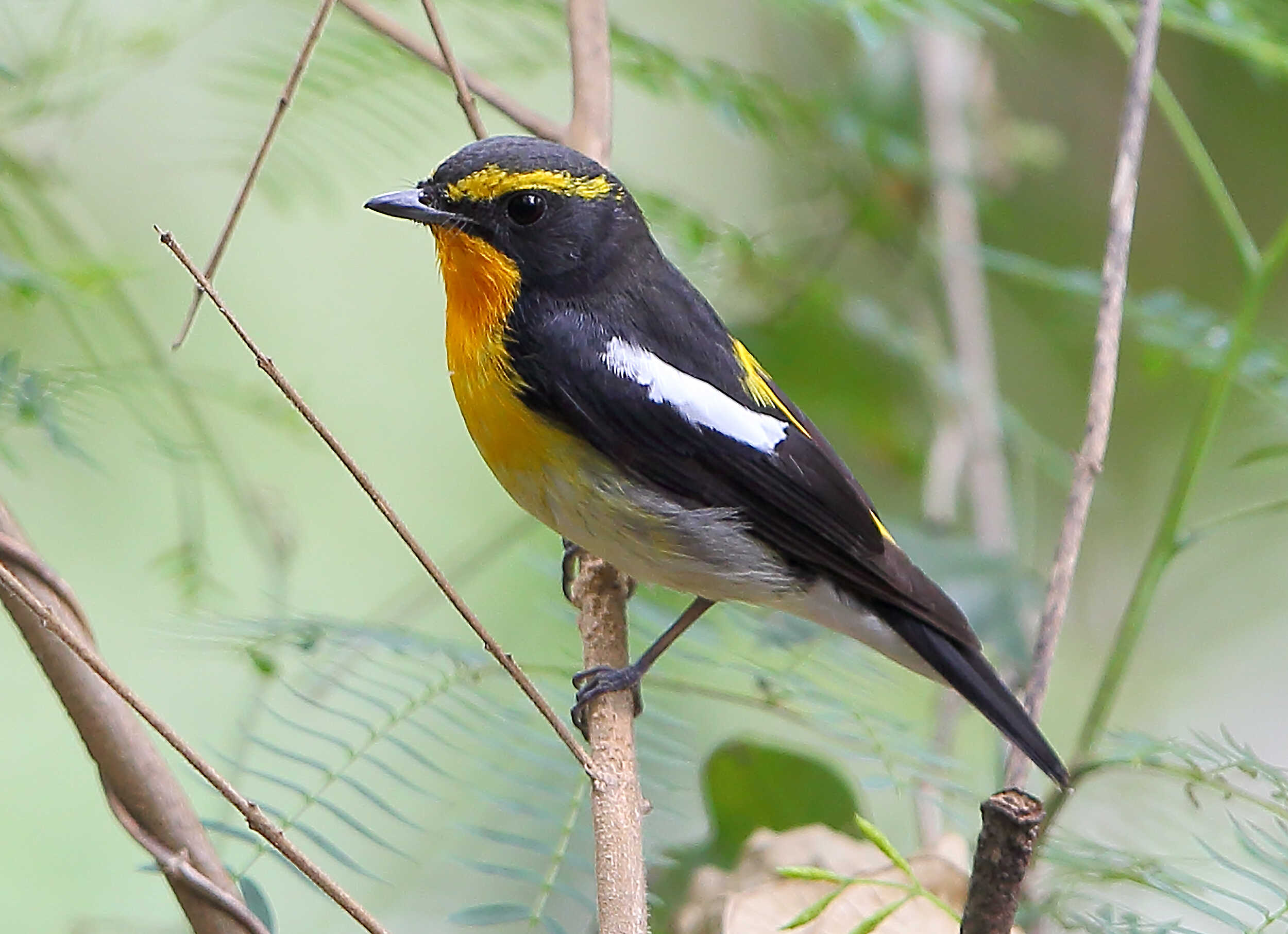 Colourful addition: the Narcissus Flycatcher (Ficedula narcissina) is another notable short-term visitor. Photo:
Michelle & Peter Wong
Colourful addition: the Narcissus Flycatcher (Ficedula narcissina) is another notable short-term visitor. Photo:
Michelle & Peter Wong
News of his sightings spread among the birdwatching and bird photography community, and Ho Man Tin soon rose up the ranks of Hong Kong birdwatching sites.
Chow voluntarily contributes to knowledge of Hong Kong’s birdlife through fieldwork and submitting observations to the HKBWS, along with taking students on outings to inform and encourage them to learn about the natural world.
“There are many special records from Ho Man Tin,” he said. “The first spring Black-headed Bunting; the first Tiger Shrike with its breeding plumage; the latest spring Yellow-browed Warbler.”
Some birds, such as Tiger Shrikes, rest up in Ho Man Tin more than other areas of Hong Kong, Chow said. Others, such as the Brown-chested Jungle Flycatcher (another Hong Kong rarity, which Birdlife International ranks vulnerable to extinction), always visit the same tree in the area at the same time of year.
From 10 to 50 birdwatchers may visit Ho Man Tin each day during the peak autumn period. Even more might gather when there is a notable rarity, such as when a Fairy Pitta – a relative of thrushes with plumage that would make a kingfisher proud – stops over during a spring or autumn migration.
However, Chow added that his records show that fewer birds are now wintering in the area, which he believes may be due to climate disruption and loss of habitats beyond Hong Kong.
As such, while Hong Kong may stand out in having so many birds in and close to the city. these creatures are also a reminder that such biodiversity requires not only local care and conservation, but is interconnected to the regional and global challenges facing nature.
Forest and grassland of global significance for flyers
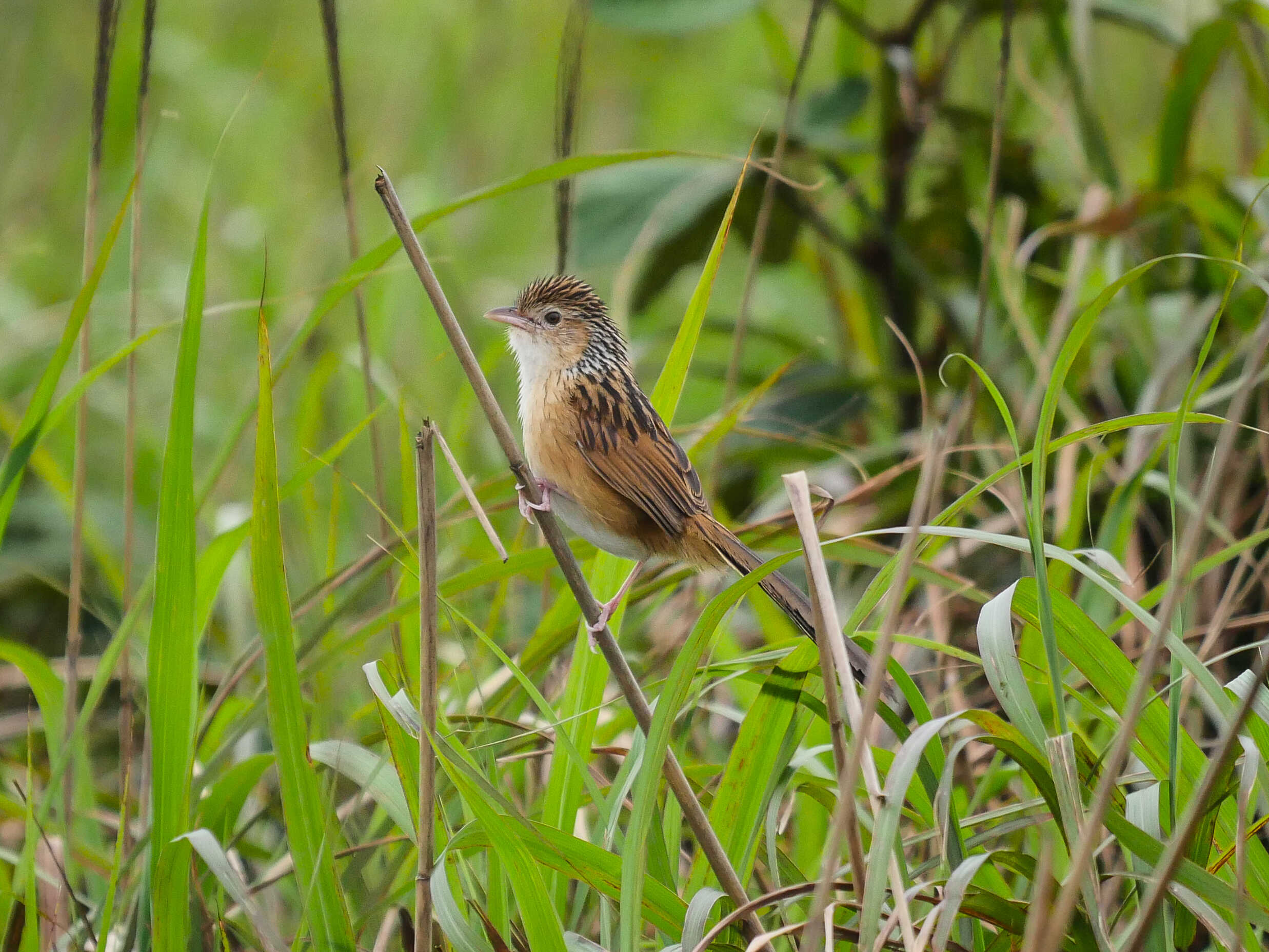
Individual characteristics: a 2010 study found the Chinese Grassbird (Graminicola striatus), pictured here, to be a separate species not a sub-species of the Rufous-rumped Grassbird (Graminicola bengalensis). Photo: Tim Boucher
Global conservation organisation Birdlife International has established a system of Important Bird Areas (IBAs), places of international significance for the conservation of birds and other biodiversity. To date, there are over 13,000 IBAs, two of which are in Hong Kong.
One covers Deep Bay in the northwest New Territories, and the second encompasses the conservation area of the forests and grassy slopes of Tai Po Kau, Shing Mun, and Tai Mo Shan in the central New Territories.
The forests in this second area were mainly planted after 1946. While the reforestation efforts included a handful of non-native tree species, such as Brisbane Box, there was also some emphasis on native tree species, particularly within the Tai Po Kau Nature Reserve, on the lower, eastern slopes of the Tai Mo Shan massif into which the IBA extends.
As the secondary forests developed, they began attracting more wildlife, including mammals such as Barking Deer, Civet Cats, East Asian Porcupines, and even the Chinese Pangolin, according to the government’s Agriculture, Fisheries and Conservation Department (AFCD), which manages the area.
Among birds, some were winter visitors from Mainland China that began settling to breed, such as Chestnut Bulbuls and Scarlet and Grey-chinned Minivets. Over time, a bird community became established, which may be similar to the birdlife of the original Hong Kong forests, where large numbers of butterflies can also be seen in spring and autumn.
Regarded as a representative site of the wider South China Mountains stretching from Yunnan Province to Guangdong, the New Territories IBA-designated area is now important for scientific research and long-term monitoring for the region.
Since the area joined the IBA system in 2004, monitoring has been on-going. This is carried out by the AFCD’s Bird Working Group, which conducts surveys of birds to inform AFCD avifauna conservation efforts as part of the management of Hong Kong’s protected areas, and birdwatchers reporting their sightings to the HKBWS.
Beyond the Tai Po Kau Nature Reserve, the scrub and long grass of the IBA’s higher slopes of Tai Mo Shan offer habitats to more birds of scientific interest and conservation concern. They include a small streaky brown bird identified in a 2010 paper by Hong Kong ornithologists Paul Leader and Geoff Carey, among others, as a separate species new to science, based on their morphological, vocal, and genetic study.
The bird, now named the Chinese Grassbird, or Chinese Grass-babbler, had been considered a sub-species of the Rufous-rumped Grassbird (Graminicola bengalensis) until the 2010 study found it differed enough to be regarded as separate and recommended that the Rufous-rumped Grassbird be “split” into the Chinese Grassbird (Graminicola striatus) and Indian Grassbird (Graminicola bengalensis).
A 2012 report of a survey conducted by the AFCD’s Bird Working Group estimated there were 490 Chinese Grassbirds in Hong Kong, and highlighted the importance of maintaining the grassland habitat, with some woody vegetation, for its conservation.
The Chinese Grassbird is listed as vulnerable in the International Union for Conservation of Nature (IUCN) Red List of Threatened Species, though a 2021 study involving researchers from Kadoorie Farm and Botanic Garden and HKBWS found it more widespread in Mainland China than records had previously indicated and recommended it should be classed as near-threatened.
This latest study estimated there were between 80 and 490 Chinese Grassbirds in Hong Kong, described as its “stronghold”.
As such, long grasses found across Hong Kong’s uplands – shrinking in some parts due to colonisation of shrubs and trees in the natural process of succession – have vital ecological importance for the Chinese Grassbird and other birds, such as Prinias, that rely on these areas for food, protection, and nesting sites.
Living with humans 1
The adapatable raptor
Natural high-flyer: as many as 2,000 Black Kites (Milvus migrans) reside at least part of the year in Hong Kong, one of Asia’s largest concentrations. Photo: Wei Shyy
Life in Hong Kong appears to suit the Black Kite, lord of the skies above the city. But its majestic presence should not be taken for granted
Black Kites, the most frequently sighted of 27 species of raptors found in and around the city, are an iconic sight as they circle high on the thermals in the sky, glide among high-rise office buildings, or stoop suddenly when eyeing food along coastlines.
Of the estimated six million Black Kites (Milvus migrans) worldwide, as many as 2,000 reside – at least part of the year – in the city and its rural landscapes, making Hong Kong and its environs host to one of the largest concentrations of the bird in Asia. These are the eastern form of this raptor, also known as the Black-eared Kite (Milvus migrans lineatus).
Believed by many experts to be the world's most abundant species of Accipitridae, which includes other birds of prey such as eagles, hawks, buzzards, and harriers, the Black Kite plays a vital role at the top of the food chain.
“Kites are top predators so are very important in terms of ecology. They will feed on rodents, reptiles, and other birds and also scavenge, removing dead animals from the environment,” said Dr Gary Ades, of Kadoorie Farm and Botanic Garden (KFBG) in the New Territories.
Ades is Head of Fauna Conservation at KFBG, which focuses on flora and fauna conservation, organic agriculture, environmental education and sustainability in Hong Kong and beyond. Among its many conservation endeavours, KFBG runs a raptor rescue centre and the Jim Ades Raptor Sanctuary, set up in 1994.
Ades’ father, Major Jim Ades, rescued and cared for birds of prey in Hong Kong’s first private authorised rehabilitation programme in the 1980s and 1990s. He also helped in the early development of KFBG’s Raptor Sanctuary and provided its first birds of prey.
Black Kites can live up to 24 years, with a large local population noted since at least the 19th century. However, their abundance and impressive ability to adapt to urban environments should not be taken for granted, with some bird-watching groups fearing that the ubiquity of these magnificent raptors – with wing spans typically as wide as 150cm – can instil complacency with regard to their conservation status.
The bird, which is brown rather than black despite its name and has a plaintive, whinnying call, is the focus of attention for the Hong Kong Bird Watching Society (HKBWS)’s Kite Research Group. The small team, currently numbering eight and a convenor, has been observing this raptor for two decades. They do so by studying and monitoring the local population and breeding conditions through monthly kite surveys and an annual breeding survey.
From the data gathered, the group can keep track of any changes in the population, and be ready to measure the impact of habitat destruction, whether through urban development or natural disaster.
“The numbers are more or less stable,” said Beta Yip Chi-lap, a longstanding group member. “There are about 200 individuals in the summer and about 2,000 by the spring, mostly divided between Stonecutters Island and Magazine Gap [on Hong Kong Island].”
No one is sure why the numbers fluctuate so much seasonally, or where many of the birds migrate to in the summer. “We still don’t know where they go. There has been no tagging or tracking undertaken on a large scale so we don’t have a lot of data,” Yip said.
But recent surveys in Taiwan indicate the Black Kite follows a coastal migratory route from northern China to Guangdong and the Pearl River Delta.
Karin Chin first became involved in the HKBWS group as a biology undergraduate at the University of Hong Kong. She said the shortage of high-level research data locally is due to the kite not being considered of strong enough conservation concern.
“Raptors like the Black Kite are an indicator species but the Black Kite is less affected by human development and loss of habitat because they are primarily scavengers rather than predators,” Chin said.
One of their major habitats is Yeung Chau, a five-hectare uninhabited island opposite Sai Kung Pier in the New Territories, where over 400 kites have been recorded. There, they share their space with the much rarer White-bellied Sea Eagles (Haliaeetus leucogaster).
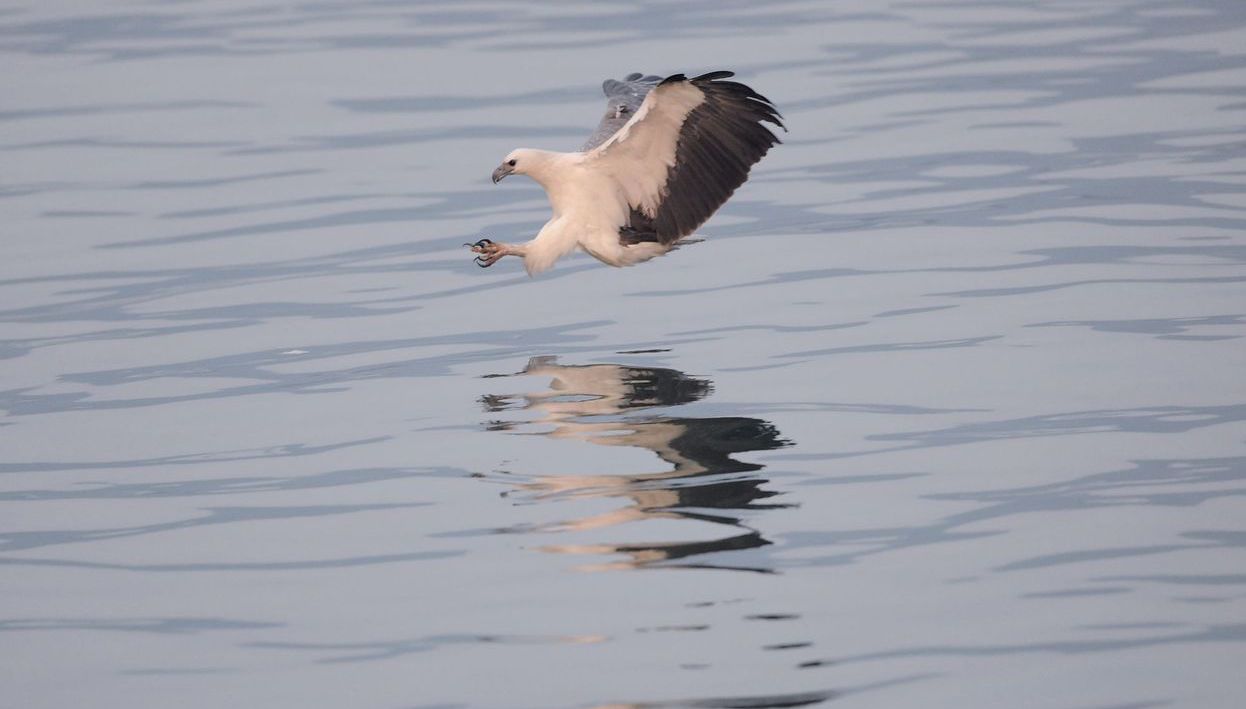
On the hunt: a White-bellied Sea Eagle (Haliaeetus leucogaster) flies low over water with talons outstretched, ready to grasp a fish. Photo: Wei Shyy
Up to 15 pairs of the sea eagles have been recorded in Hong Kong, the only place that hosts a regular population of the National Grade Class II protected species in China. Most of these birds are spotted in Yeung Chau and on Chau Kung To (Sunshine Island), off the coast of Lantau, where they soar above the island’s pink granite cliffs.
Kites also share the local environment with less readily seen raptors, such as the Crested Serpent Eagle (Spilornis cheela) and Oriental Honey Buzzard (Pernis ptilorhynchus), birds that the kites may be seen mobbing when they intrude their air space.
Meanwhile, in winter, Hong Kong’s Deep Bay area is visited by three giant birds of prey: the Greater Spotted Eagle (Clanga clanga), endangered Eastern Imperial Eagle (Aquila heliaca), and Cinereous or Black Vulture (Aegypius monachus). Hong Kong is also home to several species of owl, such as the Brown Fish Owl (Ketupa zeylonensis).
 Pause for thought: a Brown Fish Owl (Ketupa zeylonensis) on
Cheung Chau, one of the 27 species of raptors found in the
city and its environs. Photo: Martin Williams
Pause for thought: a Brown Fish Owl (Ketupa zeylonensis) on
Cheung Chau, one of the 27 species of raptors found in the
city and its environs. Photo: Martin Williams
But as scavengers, it is the Black Kite that has adapted particularly well to Hong Kong’s mix of urban, mountain, and marine environment. They are able to feed on dead fish in the harbour, but will also take young feral pigeons from tower block nests.
Black Kites still face challenges and threats, both in the natural and urban environment. Natural threats include Masked Palm Civets, snakes, and other birds of prey that might predate young birds and eggs in the nest. The man-made threats include overhead power lines and mirrored windows.
KFBG has run education programmes requesting that owners and tenants of high-rise office blocks place small black kite-shaped stickers in the windows of their offices to prevent kites from colliding with the glossy reflected images of the surrounding environment. Reflective glass may look attractive to architects but is a hazard for kites and other birds.
Ades also reported that some kites had been delivered to the KFBG raptor rescue centre after collisions with buses.
Despite being prevalent above the city, Black Kites are also threatened by loss of woodland habitat. Chin said: “They have adapted to urban life but they still need large mature trees to roost in.”
Both Chin and Yip point to the experience in Taiwan, which demonstrates that despite the adaptability and abundance of the Black Kite, its population remains vulnerable to change.
The bird had been widely distributed in the low-altitude plains and hills across Taiwan, and categorised as “common” when the first systematic bird survey for the island was conducted in 1973.
However, by 1991, ornithologists had noted that the Black Kite had rapidly disappeared during the 1980s, reduced to only 175 individuals inhabiting only 39 per cent of its previous range. The bird still has only limited distribution within Taiwan due to that dramatic population decrease.
For this reason, Yip and Chin say Hong Kong’s Black Kites and their needs must be appreciated and should be the subject of more research interest.
The group would like to do more tracking projects, and Chin suggested this could include tagging the birds with miniature cameras so their behaviour can be more closely observed.
Until more detailed research is done, the exact habits and migratory journeys of these most adaptable of raptors will remain a mystery. But on almost any day in Hong Kong we have the chance to look up and see them circling on high, and wonder.
Aerospace lessons from natural flyers
As a mechanical and aerospace engineer, Professor Wei Shyy, President of Hong Kong University of Science and Technology, finds inspiration in nature’s flyers.
The keen bird photographer is fascinated by what science can learn from birds, bats, and insects, which outperform man-made aircraft in aerobatics and handling unpredictable environments, as he points out in the introduction to his collection of photographs, Flight in Sight.
For example, the roll rate of an aerobatic plane is about 720 degrees per second compared with an excess of 5,000 for the Barn Swallow. Meanwhile, raptors can often accelerate and turn at faster rates than the most advanced military aircraft.
“More insight can be gained from understanding natural flyers for the development of micro-scale flight vehicles, which can significantly benefit from flapping wing aerodynamics,” Shyy said.
Meanwhile, he hopes his photographs will also inspire an appreciation of their natural beauty, and of their presence around us.
Living with humans 2
A campus for swifts to call home
Frequent flyer: a member of Hong Kong’s House Swift (Apus nipalensis) population, many of whom reside at the Chinese University of Hong Kong. The swift group of birds typically never land on the ground, eat on the wing, can attain super-high flight speeds, and are capable of travelling huge distances. Photo: John Holmes
It is not just students who congregate at Chinese University of Hong Kong (CUHK)’s University Square on the Shatin campus in the New Territories. Above them, young people can marvel at the sight and sound of hundreds of House Swifts (Apus nipalnensis) that they share their space with – the largest colony of these birds in Hong Kong.
It was soon after CUHK’s Main Library was built in the 1960s, adjacent to the square, that swifts took up residence, finding small bare concrete spaces within the eaves of the library roof to be particularly suitable for their nests.
House Swifts spend much of the day soaring on the wing, dining in mid-air on a range of flying insects. Only when they return to their elevated nesting sites, do they pause. They do not land on the ground, with their claws and short legs adapted for clinging to rock and launching back into flight from on high.
These birds, a member of the Apodidae family, and Barn Swallows, of the Hirundinidae family, traditionally nest under eaves, beams, and balconies in older village houses and tenement blocks in Hong Kong.
Unlike Common Swifts (Apus apus) in Europe that are present only in summer, they can be seen in Hong Kong throughout the year. However, some migrate and, along with the Barn Swallow (Hirundo rustica), can be spotted in large flocks of as many as 1,000 birds gliding over the fish ponds in the Deep Bay area of the New Territories during the spring and autumn migration periods.
While the House Swift population across Hong Kong appears to be stable, they face many challenges, most notably from redevelopment and building renovation works, new materials used in construction, as well as from insecticides that diminish their food supplies.
Hygiene concerns have also threatened the population. “Droppings from nests are often considered as a nuisance and disease-causing, especially after outbreaks of avian flu, which caused deliberate and illegal destruction of House Swifts’ nests in old urban districts,” said John Chung Chun-ting, whose MPhil research at CUHK on birds’ diets involved a DNA investigation of those droppings.
However, the Hong Kong Bird Watching Society (HKBWS) explains in its public education that swifts and swallows pose no serious threat. Of 74,000 dead birds of all species collected by the Hong Kong government’s Agriculture, Fisheries and Conservation Department between 2009 and 2014, only 41 were confirmed to have avian flu. At the time of writing, no instances of House Swifts with the disease have been recorded since then.
Against such modern-day concerns, there is a traditional belief in Chinese culture that the presence of a swift or swallow nest under the eaves of a building brings good fortune to the owner. “Therefore many property owners show sympathy towards the nest-building swallow and swift,” Chung said.
One example of how far such respect can go and how nature can be successfully accommodated in urban design was the redevelopment of CUHK’s Main Library, where the swifts lived.
Their homes could have been in jeopardy when the university needed to extend the library, a project it completed in 2012. Instead, their wellbeing was built into the plans from the start. This involved an elaborate scheme to “migrate” the birds from one side of the building to the other.
Fung Siu-man, director of the Campus Development Office, and Thomas Yuen, its project manager, explained that on advice from ecologists, nylon canvas was used in stages to block their old homes, while artificial nest boxes were offered and accepted as interim alternatives, giving them time to build new nests.
The operation, overseen by the Estate Management Office, was successfully conducted two years in advance of the works.
The project not only provided the birds with new homes, but was also designed to assure their safety when glass walls were chosen for the extension. Glazing with a dotted pattern was tested over several months to make sure the swifts did not fly into it, with nets erected below the test area to catch any injured bird. None were found.
“We call it bird-friendly glazing,” Yuen said. “Up to today, there has been no incident of birds flying into the glass walls.” The glass chosen was also comfortable for library users, by providing shade from glaring sunlight.
Yuen estimates that there are now around 200 swifts at home in the library’s eaves, and with no noticeable decline since the redevelopment.
Fung said: “They are very spectacular. The birds come out of their nests in the morning. In the late afternoon, at about 4pm, the sky is full of them, coming home. It is a fabulous sound.”
He explained that taking care of the swifts reflected the university’s vision and mission. Masterplans for development include the principle of conserving places and landmarks of historical value, and maintaining a sustainable campus with strong biodiversity. The swifts qualified on both counts.
“The history of the swift is an important part of the plaza and library building, and collective memory of students and alumni,” he said. The project to save the birds cost around HK$200,000, which Fung and Yuen regard as modest for the benefits gained for the birds, the biodiversity of the campus, and its human users.
While swifts have only chosen the library for their nests, nature is taken into consideration across the planning of all new buildings at the university. Sky gardens and vertical greening are now common features, with green spaces around the buildings designed as extensions of the existing natural landscape.
“We are very proud of the campus,” Fung said. “We have university education, and students living with nature and the landscape.”
In-flight meals with a difference
MPhil graduate John Chung Chun-ting was inspired by his special ties with the House Swift, developed as a Chinese University of Hong Kong (CUHK) student, to make it the subject of his research into what DNA tracing can tell us about the diets of the birds.
He was also able to take advantage of the ready supply of bird droppings around CUHK’s Main Library for his study, completed in mid-2020 with the School of Life Sciences.
The research, conducted with Dr Chan King Ming and published in 2021, revealed Hong Kong’s House Swifts enjoy a diet dominated by Hymenoptera (ants, bees and wasps), Hemiptera (for example, plant bugs) and Diptera (flies and mosquitoes), affirming the birds’ role in stabilising insect populations, including pests such as mosquitoes, wasps, and termites.
“House Swifts are aerial feeders so they rely on food available in the air,” said Chung, who majored in Environmental Science and is now a PhD student at the University of Hong Kong. “They chase their prey at speed and enjoy their meal by opening their mouths.”
The ants that Chung found had been caught during the insects’ breeding season when they perform their “nuptial flight”, during which winged queen and male ants fly from their nests for mating, before establishing a new colony.
More alarming was the fact that within the droppings they found the notorious invasive red imported fire ant (Solenopsis invicta), which has been present in Hong Kong since 2005. “The presence of this species implies nuptial flight could be a possible reason for the quick spread of this ant in Hong Kong,” he said.
Chung’s passion for the House Swift is echoed among members of the Swift and Swallow Research Group in the Hong Kong Bird Watching Society (HKBWS). The research group was established in 2003, and since then has conducted annual surveys of their nests.
Around 100 volunteers participated in the 2019 survey across all 18 districts in Hong Kong. About 2,000 active nests were found in more than 160 sites.
Chung believes the numbers of swifts to be stable, despite the need for more vigilance to protect them. More awareness that people and birds can live in harmony, as shown at CUHK, would also help.
For Chung, watching large flocks of swifts return to their nests before dusk was one of his most enjoyable memories of his alma mater. “They are among members of CUHK, thus have a special bond with me,” he said.
CROUCHER ECOLOGY
Issue Two: May 2021
Overview
This is the second of a series of Croucher Foundation publications to explore and celebrate the biodiversity of Hong Kong. Last month we examined how the terrestrial ecology of Hong Kong has changed over time. In the current issue you are invited to plunge into the deep and to find out more about the remarkable ecology of the region’s coastal waters.
Over the years, the Foundation has supported many of the scientists who have contributed to our understanding of the local ecosystem. Much remains to be discovered, from the characteristics and lifestyles of numerous species of flora and fauna, to questions about the ecological impact of, and mitigations against, urban development, air and water pollution, and climate change.
COMING SOON: Get ready to put on your waders for Issue Three of the Croucher Foundation Ecology series which will explore Hong Kong’s ecologically important wetland and mangrove areas with a special focus on the Mai Po Nature Reserve. Ready for publication in June 2021.
SUSTAINABILITY
Hong Kong’s rich marine world
Bronze sweeper (Pempheris oualensis) fish at Wong Mau Chau, off Sai Kung. Photo: Apple Chui
The city’s 1,600 kilometres of open waters and over 1,100 kilometres of shorelines host a wide range of ecosystems where a mix of tropical and temperate organisms can survive. The challenges they face are also extensive
One of the prime benefits Hong Kong has enjoyed – indeed its raison d’etre as a city – is being almost completely surrounded by water.
It was, after all, originally a fishing community, while the natural harbour between Hong Kong Island and Kowloon brought ships and international traders to its shores in the 19th century.
The city is still one of the busiest ports in the world, with as many as 322,600 sea-going and river-trade vessels plying its waters in 2019, according to the Hong Kong government’s Marine Department.
But it also remains remarkable for its vast stretches of open waters, encompassing 1,651 square kilometres, and 1,189 kilometres of shorelines that seemingly have everything – over 250 islands, craggy rocks and the UNESCO Geopark, sandy beaches, and shallow waters giving way to mudflats reaching as far as the eye can see towards neighbouring Shenzhen.
A recent comprehensive review of Hong Kong’s marine biodiversity, published in 2016 and led by Professor Gray A Williams of The Swire Institute of Marine Science (SWIMS) and School of Biological Sciences, The University of Hong Kong (HKU) and funded by the Environment and Conservation Fund, put the number of species recorded in Hong Kong at approximately 6,000.
This diversity is of regional and indeed global significance. The study showed Hong Kong’s waters account for less than 0.05 per cent of the South China Sea (3.4 million square kilometres) yet over one quarter (26 per cent) of all the species that have been found in Chinese waters.
Chinese White Dolphins, seahorses, and the small yet highly venomous blue-ringed octopus are among the many creatures in the area, with some taxonomic groups particularly well represented. For instance, Hong Kong accounts for around 29 per cent of the hermit crab species in the World Register of Marine Species, a global database.
In addition, ecological engineering species that once covered large expanses of the local marinescape, such as corals, oysters, and seaweeds still create their own unique ecosystems.
BIODIVERSITY HOTSPOT
This biodiversity is recorded in the Hong Kong Register of Marine Species, under the umbrella of the World Register of Marine Species, led by SWIMS and set up by Williams’ research team after completing their review.
“This is a bright hotspot for marine biodiversity, being on the edge of the coral triangle centred around the Philippines,” said Williams, who came to Hong Kong when SWIMS (then the Swire Marine Laboratory) was opened on the rocky outcrop of Cape d’Aguilar in the southeast of Hong Kong Island in 1989.
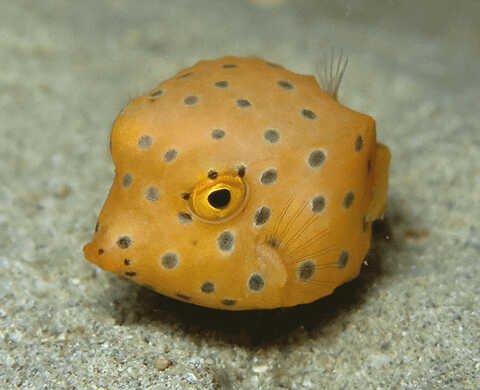
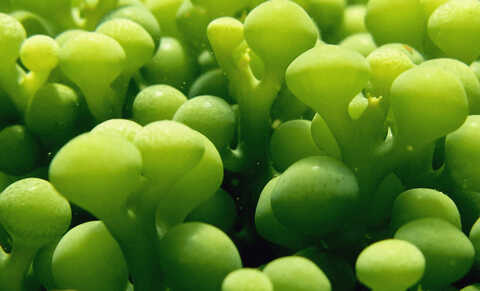

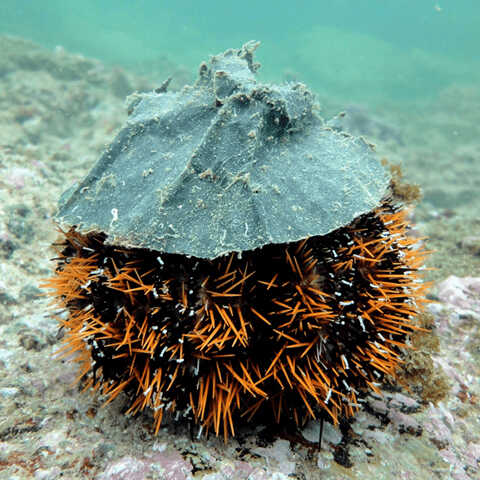
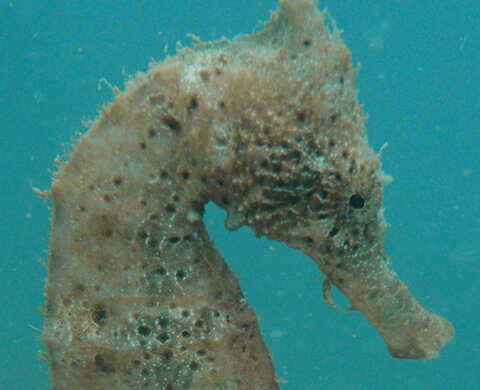
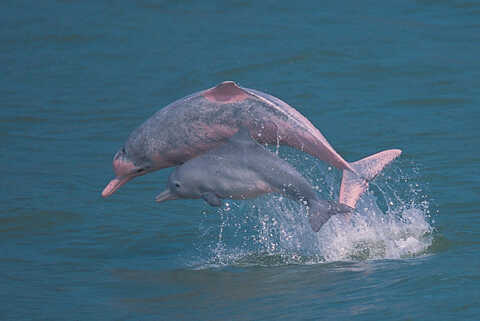
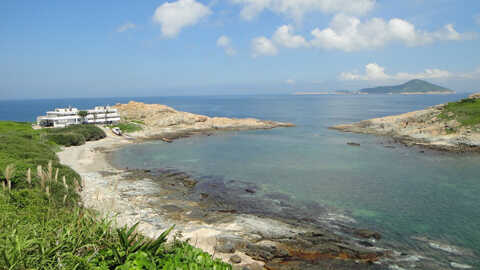
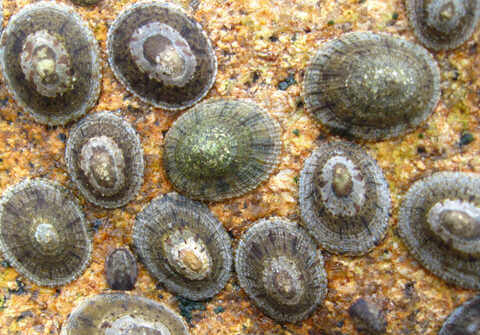
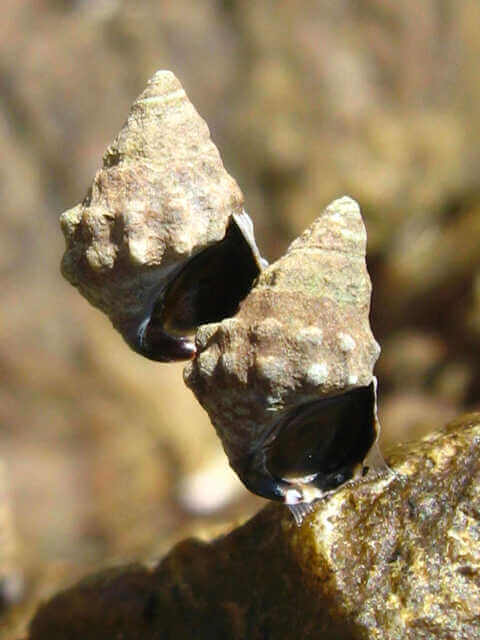
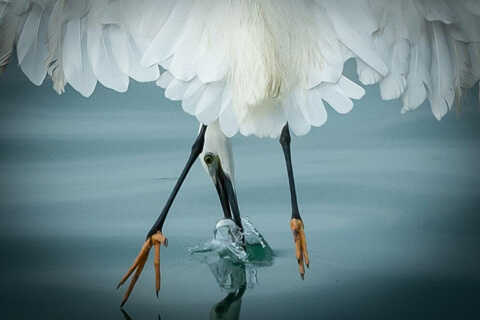
Interacting factors lie behind this rich biodiversity, Williams explained. Hong Kong’s location on the edge of tropical and northern temperate waters, with a monsoon climate bringing hot summers and cool winters, means it can support a mix of species from both zones.
It is also influenced by the Pearl River to the west and oceanic waters to the east, resulting in a gradient of different salinities. Finally, its geology has provided habitats for a wide range of species. “We have mangroves, soft and muddy shores, as well as hard rocky substrates,” Williams said.
There are two cetaceans, the Chinese White Dolphin (Sousa chinensis) and Finless Porpoise (Neophocaena phocaenoides), that can be seen in Hong Kong all year round. But their differing habitat requirements mean they rarely meet. The dolphins prefer the estuarine waters in the west while the porpoises are more inclined to the oceanic waters in the east and the transitional zone between.
Meanwhile, the estuary has enabled large wetlands, such as Mai Po Nature Reserve which, together with Inner Deep Bay, supports up to 60,000 birds from over 400 species, including one quarter of the world’s Black-faced Spoonbill (Platalea minor) population during their annual winter migration.
MARINE PROTECTION
In recent decades, protecting this environment has moved up the policy agenda. Since the Marine Parks Ordinance was enacted in 1996, six parks have been designated for the purposes of conservation, education, scientific studies, and recreation. These parks comprise Hoi Ha Wan in Sai Kung; Sha Chau and Lung Kwu Chau; The Brothers; Southwest Lantau; and Tung Ping Chau and Yan Chau Tong in the northeast. Cape d’Aguilar on the southeastern coast of Hong Kong Island is the sole marine reserve. Together, they cover around 4,050 hectares.
New sites at the Soko Islands and the Three Runway System Marine Park are also scheduled. The latter will effectively connect up with Sha Chau and Lung Kwu Chau, and The Brothers, becoming Hong Kong’s largest marine park to date, with an area of around 4,500 hectares.
Even so, Hong Kong has not yet reached the international Convention on Biodiversity’s goal, set in 2010, to protect 10 per cent of the planet’s seas. The city’s total marine protected areas currently stands at 2.5 per cent, excluding proposed and to-be-launched protected areas, according to the Agriculture, Fisheries and Conservation Department (AFCD).
The city has already lost 16 per cent of its shorelines to reclamation and urban development, and the marine environment is set to be reshaped further with the Lantau Tomorrow Vision project and plans to reclaim 1,700 hectares of land from the sea, ready to house up to 1.1 million people.
While visitors to Hong Kong can marvel at the best of its marinescape – from Inner Deep Bay in the west to the UNESCO Geopark in the east, Williams points out that city-scale development in two harbour areas – Victoria Harbour and Tolo Harbour – have already resulted in the removal of “massive areas of natural habitat”.
DEVELOPMENT BALANCING ACT
Hong Kong has developed into a precursor of what other cities could become, making its experiences relevant elsewhere. “There is always a dilemma between development and conservation. In reality, people need houses and places to live, and yet we also need to conserve our marine ecosystems,” Williams said.
The baseline of perceptions regarding marine ecosystems have shifted over time, he noted, citing Starfish Bay (Hoi Sing Wan) as an example. Today, this bay, located in inner Tolo Harbour, is surrounded by the high-rise apartments of Ma On Shan, but it can still be enjoyed for its glorious views across the harbour towards Plover Cove Country Park, and its sandy beach, supporting an array of crabs, worms, and bivalves, such as mussels and clams.
However, previous generations of visitors were impressed by a bay far from urban development, with even more diverse species, including numerous starfish that covered the beach. That was before pollution had taken its toll, following the building of Sha Tin and growth of Tai Po.
LIVING ON THE EDGE
Other creatures that once thrived in Hong Kong, such as the Chinese Horseshoe Crab (Tachypleus tridentatus) and Mangrove Horseshoe Crab (Carcinoscorpius rotundicauda), have seen their populations plummet over the past 20 years. A published study, by City University of Hong Kong co-authors Paul KS Shin, Li Hiu-yan, and Cheung Siu-gin, recorded the wild population of Hong Kong’s juvenile horseshoe crabs at 17 shores in Hong Kong had decreased by over 90 per cent between 2002 and 2009.
These crabs are known as living fossils as they have existed since the early Ordovician Period (475 million years ago), about 230 million before dinosaurs appeared on Earth. They are now the subject of a collaboration between CityU and the Ocean Park Conservation Foundation, which has so far enlisted more than 2,700 school students to rear juveniles, as part of an effort to save the species in Hong Kong.
Meanwhile, AFCD last recorded nesting of the endangered Green Turtle (Chelonia mydas), the only sea turtle species known to do so in Hong Kong, on Sham Wan beach on southern Lamma Island in 2012.
Other threatened species include Hong Kong’s seahorses, the Japanese Seahorse (Hippocampus mohnikei) and Spotted Seahorse (Hippocampus kuda), which have been recorded at Pak Lap Tsai, Yan Chau Tong and Tung Ping Chau Marine Parks. Both are listed as vulnerable in the International Union for Conservation of Nature’s Red List of Threatened Species.
The 2016 marine biodiversity study, Williams pointed out, is based on historical records from 1912 to 2011. In many areas, the same range of species would not now be found. “We have lost a lot, but without baseline surveys, it is difficult to quantify,” he said.
HABITAT PRESSURES
However, as marine ecologists extend their research, they are also finding new species. From surveys carried out between October 2015 to September 2018 as part of the Ting Kok+ megaproject, 294 new records of marine taxa (recorded as species, genus, or family level) were added to the Hong Kong Register of Marine Species. Highlights included two species new to science: a tree-climbing micro-crab (Haberma tingkok); and a polychaete worm (Marphysa hongkongensa).
The Ting Kok+ project, commissioned by the Environment Bureau and supported by the Environment and Conservation Fund, involved a multidisciplinary team of researchers from six universities, led by Williams. The study was designed in tandem with the local Biodiversity Strategy and Action Plan under the Convention on Biological Diversity, to assess the status of marine coastal communities in Ting Kok Site of Special Scientific Interest, Tolo Harbour, and Tolo Channel.
The area supports highly diverse habitats and flora and fauna but has been heavily affected by human activity and water pollution.
Aims of the project included establishing a template of good practice, looking at scientifically sound methods for future biodiversity assessments, such as environmental impact assessments and ecological monitoring. Williams said: “We do need unbiased, hard quantitative science. That is the only way to make informed decisions.”
Community involvement and education are also important elements. The team trained 197 student and volunteer helpers from 24 local and overseas institutions, from NGOs to schools, who can now contribute to marine science studies of Hong Kong, and conservation. The final step has been to produce a GIS system, due for release in the coming months, available for the general public to explore this shoreline.
“It is an education tool, encouraging the general public to go to the shore and see for themselves what is there,” Williams said.
BUILDING KNOWLEDGE
He is now following up on the Ting Kok+ model with a three-year project to provide a baseline evaluation of Hong Kong’s rocky shore biodiversity, again supported by the government’s Environment and Conservation Fund. This will go further in mapping biodiversity hotspots and the distribution of ecologically important species.
Many local universities have taken advantage of Hong Kong’s maritime location to develop marine research expertise and facilities on the water’s edge. SWIMS is one example. The Hong Kong University of Science and Technology (HKUST) has its Department of Ocean Science and Coastal Marine Laboratory, the latter located on the shores of Port Shelter and focused on marine benthic, microbial and plankton ecology, and marine ecotoxicology and pollution, whereas Chinese University of Hong Kong (CUHK) has the Simon F S Li Marine Science Laboratory, where staff have been pursuing interests such as ecology and conservation of corals, mangroves, and crustaceans, as well as genomics and ecotoxicology.
CityU leads the State Key Laboratory of Marine Pollution Hong Kong, in partnership with teams at Hong Kong Baptist University, CUHK, Hong Kong Polytechnic University, HKUST, HKU, and Education University of Hong Kong, as well as partners in Xiamen and Shenzhen.
NEXT STEPS
While much has been achieved, more research needs to be done. “Research tends to focus on systems, such as mangroves, rocky shores and oyster reefs,” Williams said. “But as we know more about species and habitats we need to know how they function. What happens, for instance if we lose one species or habitat, what effect will that have in terms of how our natural systems function?”
He also remarked on the one facility that is missing – a natural history museum to record and display Hong Kong’s biodiversity, with the accompanying expertise in taxonomy that is concentrated in such institutions. The demands on taxonomists have increased globally, as ecologists extend their surveys and discover more species.
“If species are not named they do not formally exist, and therefore cannot be protected,” Williams said. “The science of naming and describing species is a continuous process as we learn more about how species are related and have evolved. I have worked on a tiny snail (Echinolittorian malaccana) found high on Hong Kong’s rocky shores that has had its name changed three times in the past 30 years.”
Reflecting the growing recognition in the university and wider community of the importance of marine biodiversity, SWIMS is undergoing an expansion, which will include new facilities for molecular biology, as well as a state of the art aquarium system. It will also have a biodiversity centre – a small museum dedicated to housing and documenting local species and also outreach to the Hong Kong public.
Combining forces – working with other universities, government and NGOs, and reaching out through education to engage the community – is the way forward, Williams said.
While significant challenges remain, he points to the growing awareness and enjoyment of the marine environment in the community – an essential step towards its better protection. “That is one major tick in the box for education, schools, universities, NGOs, and the government,” he said.
Trawling Ban Boosts Biodiversity
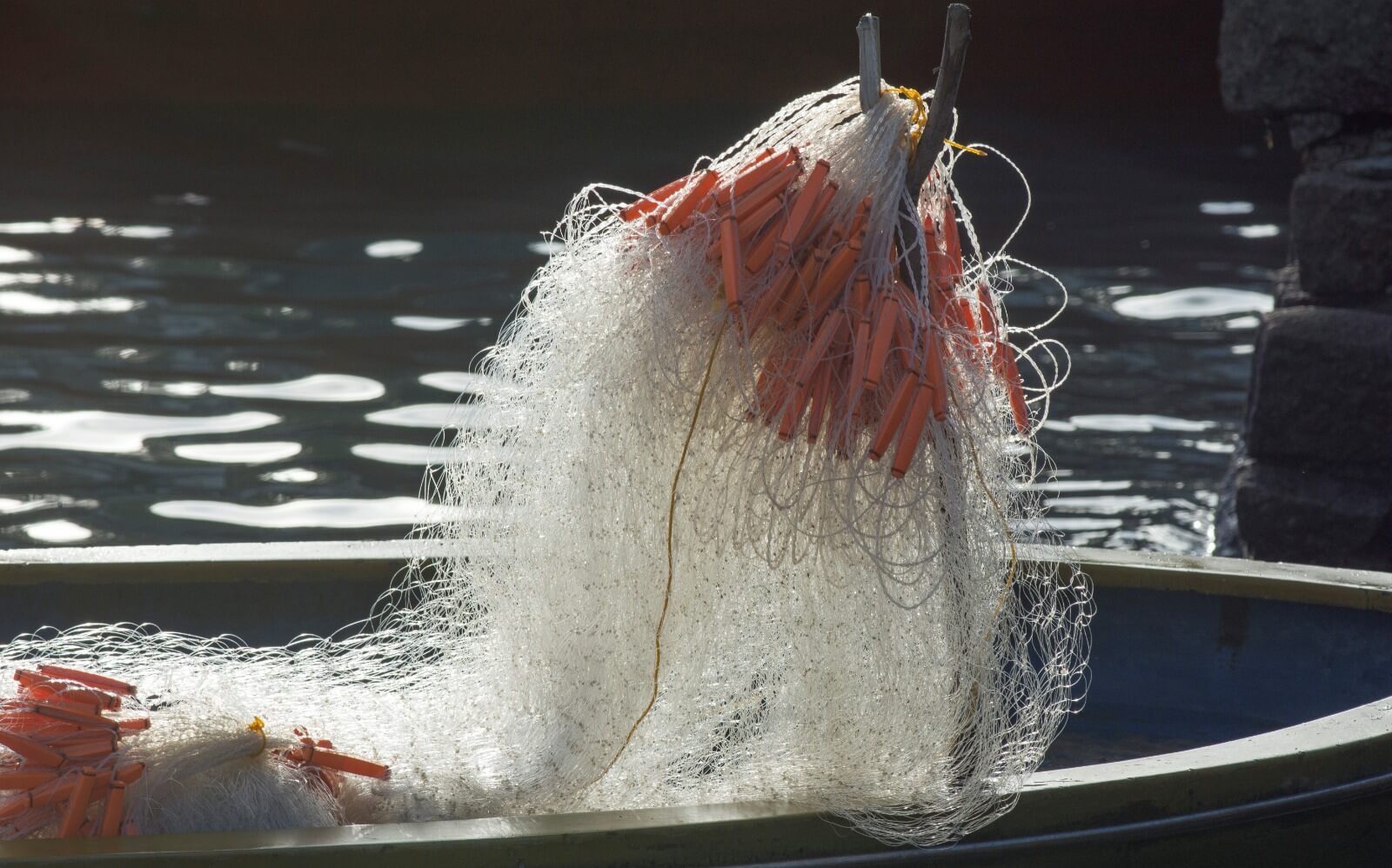
Since the ban on trawling, fishing in Hong Kong waters has mainly been on smaller craft, such as sampans, with fishing gear including gill nets. Photo: Katherine Forestier
Hong Kong has a large appetite for seafood, which over the decades has resulted in a serious depletion of its wild fish stock.
But the good news is that a ban on trawling in its waters, implemented in 2012, has boosted numbers, not only of fish but other marine life that had been disturbed by this form of fishing. As a conservation measure, it is regarded as one of Hong Kong’s success stories, and a model for other jurisdictions that need to switch to a more sustainable fisheries industry.
According to the Hong Kong government’s Agriculture, Fisheries and Conservation Department (AFCD) Marine Fauna Database, a total of 997 marine fish species of 135 families and 27 orders have been recorded in Hong Kong waters over the past 150 years. This is about 30 per cent of the total fish species that can be found in the South China Sea.
Government policy is to conserve local fisheries resources, and promote sustainable development of the fisheries industries. This is a challenge as the city has the second largest appetite in Asia for seafood – averaging 66.7 kilograms per person in 2017, according to WWF-Hong Kong. Fish locally caught or raised through aquaculture account for about 37 per cent of the market, the rest being imported, according to statistics from AFCD.
Since the ban on trawling, fishing in Hong Kong has been mainly conducted from sampans and other non-trawler vessels, such as gill netters and long liners. Trawlers and other larger vessels still operate from Hong Kong in adjacent waters of the South China Sea, though the industry has reduced in size over the past 50 years from over 10,000 boats to around 5,100 recorded by AFCD in 2019.
Recently published research by an inter-university team, led by Professor Kenneth Leung Mei-yee (Croucher Fellowship 2000), Director of the State Key Laboratory of Marine Pollution at City University of Hong Kong (CityU) and Chair Professor in the Department of Chemistry, CityU, has shown that the prohibition on trawling significantly improved biodiversity in just two and a half years from 2012 – and not just among fish.
As a result of the decreased disturbance of habitats, the average number of benthic species increased in that period by 335 per cent, most prominently among polychaete worms and bivalves. Meanwhile, the number of predatory crabs rose 600 per cent in eastern waters and by as much as 1,338 per cent in western waters.
Parallel studies have revealed that fish and crustacean stocks in eastern and western waters have also improved. “Our results are highly encouraging and supportive of the Hong Kong SAR government’s trawl ban policy,” said Leung, who hopes other economies, especially in the tropics, can learn from Hong Kong’s example in banning destructive trawling activities.
Dr David Baker, Associate Professor at the University of Hong Kong’s School of Biological Sciences and Swire Institute of Marine Science (SWIMS), described the trawling ban as a “huge conservation success”. But he added that it has not been enough to restore fish populations, including in the coral-rich waters in eastern Hong Kong, where he said relatively few fish are seen.
“Unfortunately even in our marine parks fishing is still allowed. Quite a number of fishing permits are issued for gill net fishing. These are pretty indiscriminate. They will catch anything that swims into those nets.”
The government could work with non-governmental organisations (NGOs) in helping fishermen move to other livelihoods, Baker said. Aquaculture, which includes mariculture that involves farming fish and other marine species in seawater, as well as the use of traditional fresh water ponds, should be developed faster, to meet the demand for seafood. “We have to do it in a positive and collaborative way,” he said.
Hong Kong has 26 fish culture zones for mariculture, covering a sea area of 209 hectares. Fry, mainly imported from Mainland China and elsewhere in the region, are raised to maturity in cages suspended by floating rafts.
However, according to AFCD, in 2020 the aquaculture sector – including mariculture, pond fish culture and oyster culture – accounted for just three per cent of the weight and four per cent of the value of total fisheries production, which totalled 116,000 tonnes that year.
AFCD’s Sustainable Fisheries Development Fund provides support for research and practical applications by local groups and university scientists. Among its October 2020 list of approved projects, the fund was assisting Hong Kong Organic Resource Centre Certification Ltd to help fish farmers to gain accreditation for organic aquaculture and to develop a high-end market for organic aquaculture products, and Hong Kong Productivity Council for a feasibility study and trial of more environmentally friendly and safer fish containers.
Meanwhile, the Education University of Hong Kong’s Department of Science and Environmental Studies has undertaken a project with AFCD, supported by this fund, to turn food waste to fish food pellets that can both recycle waste and reduce pollution from the traditional practice of feeding food scraps to fish. The CityU aquatic animal team, in the College of Veterinary Medicine and Life Sciences, has also received funding to enhance veterinary services, research, and education for the industry.
SPECIES FOCUS
SAVING THE CHINESE WHITE DOLPHIN
Indo-Pacific humpback dolphin (Sousa chinensis), or Chinese White Dolphin. Photo: Ricky Tang/Cetacea Research Institute
Despite intensive research, marine parks, and designation as an endangered species, one of Hong Kong’s most loved sea creatures is finding continual human development hard to survive
The Indo-Pacific Humpback Dolphin (Sousa chinensis) is arguably Hong Kong’s most charismatic megafauna, and even a fleeting glimpse of this playful pinkish creature in local waters is a cause for wonder and excitement.
The charm and widespread public appeal of the Chinese White Dolphin, as it is known locally, meant it was selected as the official mascot for the Hong Kong handover ceremony in 1997. Yet this popular status has not prevented the creature’s future from being put into jeopardy by the numerous human activities that have invaded its habitat.
Of the four known humpback dolphin species (genus Sousa) in the world, the Indo-Pacific variety inhabits waters of Southeast Asia, from Myanmar (and possibly eastern India) eastwards to the island of Borneo, and northwards to central China.
Along the Chinese coastline, the Chinese White Dolphin is known to occur in at least six to eight estuarine areas. The population in the Pearl River Estuary, including Hong Kong waters, is the largest known and most extensively studied. Hong Kong locations where they might be spotted include northern Lantau waters near Chek Lap Kok, Tai O, and Lung Ku Chau Marine Park, among others, and – especially – coastal waters off west and southwest Lantau.
Unlike oceanic dolphin species, the Chinese White Dolphins seldom gather in large numbers and are usually seen in small groups of three to five individuals, or even alone at times. The annual survey data for 2019-20 collected by Dr Samuel K Y Hung, founder of the Hong Kong Cetacean Research Project, and published by the Hong Kong government’s Agriculture, Fisheries and Conservation Department (AFCD), showed that 158 groups comprising a total of 524 Chinese White Dolphins were sighted during the 12-month study period.
By comparison, a similar scale survey by Hung and his group, published in 2010, reported sightings of 271 groups comprising 1,062 Chinese White Dolphins, an indication that the local occurrence and relative abundance appears to have almost halved in just nine years.
Intensive scientific observation began in the early 1990s when the Chinese White Dolphin’s increasingly perilous conservation status attracted worldwide attention. It has inspired numerous public education campaigns, and in 2001 AFCD introduced a dedicated government conservation programme.
In 2008, local and international experts, led by Dr Ben Wilson of the Scottish Association for Marine Sciences in Scotland, reviewed more than a decade’s research and monitoring studies. The report, funded by WWF Hong Kong, concluded that the anthropogenic activities that occur in the Hong Kong region, such as construction, dredging, sewage disposal, industrial effluent discharge, shipping, reclamation, and fishing, have considerable potential to affect the dolphin population in the Pearl River Estuary.
The panel also reported it knew of no other small cetacean population that faced the multitude of threats that existed within this estuary. In late 2017, the International Union for the Conservation of Nature (IUCN) reclassified the status of Chinese White Dolphins worldwide as “vulnerable”.
In addition, it is listed in the Convention on International Trade in Endangered Species of Wild Fauna and Flora (CITES) Appendix I, and as a Grade 1 National Key Protected Species in Mainland China.


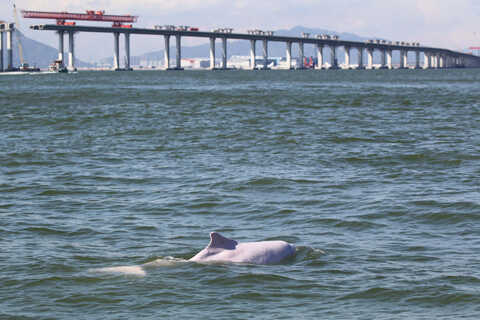

The Cetacean Research Project has been undertaking extensive research for over 25 years, helping to inform conservation measures locally and in other parts of the world.
“There are few areas with such long-term data as the ones in Hong Kong, so it’s a good reference for global trends,” said Taison Chang, Chairman of the Hong Kong Dolphin Conservation Society, a sister organisation to the Cetacean Research Project.
Research published in 2017, by Dr Leszek Karczmarski, Director of the Cetacea Research Institute (an independent inter-institutional research organisation, formerly the Cetacean Ecology Lab at The Swire Institute of Marine Science, University of Hong Kong), and Dr Stephen C Y Chan, now a post-doctoral fellow with the Institute, estimated that at least 368 dolphins use Hong Kong waters as part of their range in the estuary, findings based on a multi-year quantitative photo-ID mark-recapture study.
“The dolphins seen in Hong Kong are frequently travelling across the administrative border, with a notable seasonal pattern, and it should be noted that they are part of a larger regional population, not a separate demographic unit specific to Hong Kong, which is a common public misconception,” Chan said.
“They use Hong Kong waters regularly as part of their range. And some areas, such as the coastal habitats off west and southwest Lantau Island, are critical for their daily nutritional needs and are being used for foraging by many members of the dolphin population that inhabit the eastern Pearl River Estuary,” he explained.
Further research led by Karczmarski and Chan estimated a 2.5 per cent annual reduction in the Chinese White Dolphin population across the Pearl River Estuary. The latest evidence across the region suggests that the trend is likely worse than previously thought.
“Our demographic models suggest that over 80 per cent of the population may vanish within 60 to 70 years,” Chan said.
Karczmarski added: “Under current circumstances, if the dolphin habitats were not to deteriorate any further, the dolphin population would need at least 2,000 animals to sustain their long-term viability in the region. Our latest data indicate that the population currently numbers approximately 2,000 individuals, so we are basically sitting on a cliff edge.”
However, there has been a considerable reduction in dolphins’ critical habitat in recent years, and this pattern is likely to continue. A study by Dr Simon W H Wong, a PhD graduate under Karczmarski’s supervision at HKU, used satellite imagery and historical archives to quantify temporal change in the dolphins’ habitat over the past 40 years. This showed that the natural coastal habitat that provides critical ecological functions to Chinese White Dolphins in Hong Kong has been drastically reduced in the past two decades.
The observed pattern and computational models of habitat use in the years prior to major habitat alterations up to the present day indicate a major drop in dolphin occurrence in areas neighbouring reclamation sites. This pattern is even more striking when projected further into the years when all currently planned construction projects are to be completed.
All existing Marine Protected Areas (MPAs) designated for dolphin conservation are already affected by the on-going environmental change. In recent years, the dolphins have abandoned most of their degraded habitats in north and northwest Hong Kong and intensified their daily activities in waters off west-southwest Lantau.
“Unless decisive management and conservation decisions are made, this process is likely to continue into the coming years,” Karczmarski said.
Overfishing in local waters and the resulting decline in fish stocks are among the many significant anthropogenic threats faced by the species. Stomach content analyses performed in Hong Kong back in 2004 by Dr Nelio Barros from Mote Marine Laboratory in Florida, in the US, indicated that Chinese White Dolphins prey on at least 20 fish species, including Lion-head Croakers (Collichthys lucidus), Yellow Croakers (Larimichthys polyactis) and anchovies.
A recent study by Dr Wenzhi Lin, a former post-doctoral researcher at the Cetacea Research Institute and currently with the Chinese Academy of Sciences, took dietary analyses to a new level, identifying 6,043 prey items which represent 62 teleost fish taxa. A comparison with Barros’ findings indicates that the dolphins had by 2017 undergone a considerable dietary shift, from primarily demersal fish that occupy the seafloor to greater intake of neritic and pelagic fish found in the mid-level and shallower waters, including tiny gobies that the dolphins were never seen feeding on previously.
“The dolphins are left to take less favourable and less nutritious prey and have broadened their dietary spectrum to maintain their daily energy intake, while their foraging group size decreased in response to the altered behavioural constraints of group foraging,” said Karczmarski, the co-author of this research.
Fishing and other human activities in coastal waters also raise concerns for the health of the dolphins. Chan and Karczmarski have found that at least half of the dolphins seen in Hong Kong have various skin disorders, an indication of exposure to pathogens and a compromised immune system.
“On top of that, at least one in 10 dolphins seen in Hong Kong waters bears anthropogenic injuries, likely caused by fishing gear entanglements, boat collisions, and propeller cuts,” Chan said.
Why white may appear to be pink
Chinese White Dolphins experience dramatic changes in skin colour during the course of their lives, according to researchers’ observations.
In fact, a Chinese White Dolphin is never totally white. A new-born calf is about one metre in length, with dark grey skin but this will change gradually to pale grey. At the age of two to three years, they reach their juvenile stage with a body length of about 1.8 metres and a greyish pink skin with heavy spotting.
On attaining adulthood, the greyish spotted pattern gradually disappears, and their skin becomes the familiar white tone associated with the species. The pink appearance is the result of vasodilation, especially when the dolphins are engaging in energetic behaviours such as active foraging, socialising or mating, when more blood is pumped to the skin surface for thermoregulation. It also explains why they are sometimes referred to as Pink Dolphins.
Such changes make it possible for even amateur observers to accurately estimate an individual dolphin’s age and maturity, while more experienced conservationists can detect individuals by markings and colouring.
The urgent need for better scientific understanding of this marine species, and of the hazards it faces, is being addressed by the Cetacea Research Institute and other scientists in Hong Kong.
Researchers in City University of Hong Kong’s State Key Laboratory of Marine Pollution, for instance, are conducting three-dimensional modelling of the collisions and injuries that stranded Chinese White Dolphins and Finless Porpoises have had with marine vessels, to inform measures to prevent such accidents. Its Department of Computer Science is researching the use of machine learning and artificial intelligence for identifying White Dolphins during vessel-based surveys. Both projects are funded by the Marine Ecology Enhancement Fund (MEEF) set up by the Airport Authority – an outcome of the authority’s commitment to support marine ecology that it included in its Environmental Impact Assessment for its third runway.
Karczmarsk said: “Population range and structure and socio-behavioural dynamics have to be investigated, and the displacement of individuals over time needs to be quantified to evaluate the type and intensity of natural and human-induced pressures on individuals, groups, and the overall population.”
His team’s on-going multi-year research, also supported by MEEF, covers a large area from Hong Kong and Lingding Bay in the east to the westernmost reaches of the Pearl River Delta.
“Using quantitative population modelling techniques and other analytical tools adopted from the field of informatics and network analyses, we are now in the midst of unravelling a region-wide population structure, connectivity and eco-demographic viability, and identifying what represents their ecological, biological and demographic management units,” Karczmarski explained.
“It is the extent of these intra-population dynamics that is now of crucial importance to quantify, as these socio-spatial and demographic processes are among the key determinants of population long-term viability and its biological survival,” he added.
In addition, the team is investigating how both Chinese White Dolphins and Finless Porpoises cope with the human-induced noise of the heavily-developed Pearl River Estuary area – from shipping and port activities to construction near the water, a concern WWF-Hong Kong is also focusing on in research and advocacy work.
The Institute’s project involves mapping the soundscape of Hong Kong waters (the collection of environmental, biological, and anthropogenic sound) through on-board acoustic surveys and long-tern passive acoustic monitoring at several underwater recording stations, while the researchers continue their observations of the occurrence and activities of dolphins and porpoises.
“Long-term noise can alter the soundscape and disrupt the acoustic communication of soniferous organisms,” said Ho Yuen-wa, a PhD candidate under Karczmarski’s supervision at HKU. “As the Pearl River Estuary is among the world's most developed coastal regions, with massive construction projects spanning the entire estuary, which generate intense underwater noise, the resulting impacts on marine mammals inhabiting this shallow-water coastal habitat are vast and unceasing,” he added.
The implications are that local and regional conservation authorities may need to consider soundscape data when developing future conservation management strategies.
To protect Chinese White Dolphins in Hong Kong waters, marine parks have been designated to enable active management and statutory protection. The Brothers Marine Park in North Lantau and Southwest Lantau Marine Park were designated in 2016 and 2020, respectively. The proposed South Lantau Marine Park and marine park for the Three-Runway System project at Chek Lap Kok Airport, expected to be designated by 2022 and 2023 respectively, will add a further 4,470 hectares.
However, there are concerns that the locations for these areas render them “dead, or dysfunctional on arrival”. Karczmarski argues that the premises that led to the recent and proposed park designation were incomplete and outdated. “It may have been a good idea some 20 years ago, but it is not so anymore, as too much of the local habitats have been devastated in the past two decades,” he said.
The Institute’s data shows that north and northwest Hong Kong waters designated and proposed for marine parks, especially The Brothers and North Lantau Marine Parks, are hardly used by Chinese White Dolphins.
Instead, “a development-free MPA off west and southwest Lantau and the Soko Islands, with specific sites within the MPA designated as marine reserves, should be the top priority of dolphin conservation in Hong Kong”, Karczmarski said. This represents the largest continuous area with highest dolphin density in Hong Kong, where much of the coastline remains relatively unaltered.
“If designated as an MPA with several protected reserves, it could serve as a critical refuge for the dolphins as it is the last remaining such habitat in Hong Kong waters.”
The other cetacean species present year-round in Hong Kong waters is the Finless Porpoise, which has been under considerable pressure for many years due to fishery‐caused mortality but seems to be faring better lately. A recent collaborative study by the teams of Lin, of the Chinese Academy of Sciences, and Karczmarski quantified the porpoises’ demographic trajectory in the past 25 years. The research showed that between 1996 and 2005 there was a declining trend of 3.6 per cent loss per annum. The decline gradually levelled off and showed first signs of recovery with a 0.76 per cent increase per annum during 2006 to 2014.
This temporal demographic change was due to changes in the fishing industry, which has been declining locally since the late 1990s. Regulated management of coastal fisheries can serve as an effective tool in securing the long‐term persistence of Finless Porpoises in this region, the researchers said.
Similarly, it is still not too late for Chinese White Dolphins, albeit the time left is increasingly tight. Researchers and NGOs, including Hong Kong Dolphin Conservation Society and WWF-Hong Kong, are leading the call for more enhanced protective measures, such as better connected and appropriately located marine parks, site-specific speed-limits for water craft, and the redirection of fast ferry routes, which are urgently needed if the population of this truly iconic species is to have any chance of recovery.
CONSERVATION AT WORK
GEOPARK HAVEN
Po Pin Chau, part of the Hong Kong UNESCO Global Geopark. Photo: Martin Williams
The marinescape in the east and northeast of the New Territories is one of Hong Kong’s natural marvels, featuring dramatic geological formations and remarkable ecology, above and below the waters.
A land area of 150 square kilometres was designated as a national geopark in 2009, and renamed the Hong Kong UNESCO Global Geopark in 2011 when it achieved recognition as part of the Global Geopark Network, with the aim of promoting conservation, education and sustainable development – including eco-tourism in some areas.
Some of the islands, such as the Ung Kong Group – famed for the hexagonal rock columns, sea arches, and caves of Wang Chau, Basalt Island, and Bluff Island – remain largely inaccessible, due to ocean waves that pound their rocky shores and cliffs, and can only be experienced from boats on calm days.
How these extraordinary rocks were created was only fully understood about a decade ago, after many years of geological survey work involving detailed mapping, geochemical and geochronological analyses, and geophysical surveys, carried out by the Hong Kong Geological Survey (HKGS), under the Geotechnical Engineering Office, Civil Engineering and Development Department (CEDD).
In 2012, geologists confirmed their discovery of the ancient High Island supervolcano, and that the spectacular, columnar-jointed High Island Tuff – porous rock formed from the consolidation of volcanic – was produced by a single, cataclysmic, caldera-forming eruption about 140 million years ago. The volume of volcanic ash produced was estimated to be 1,300 cubic kilometres. This has been described by the HKGS as Hong Kong’s Big Bang and would have been devastating for life in the area.
As the ash condensed and contracted, it formed the rhyolite hexagonal columns of High Island, among other volcanic rock features of the southern area of the geopark.
The park that now protects these rocks from human disruption comprises two areas. The Sai Kung Volcanic Rock Region includes High Island, Sharp Island, the Ninepin Group, and Ung Kong Group. The Northeast New Territories Sedimentary Rock Region, bordering Mirs Bay and the Tolo Channel, features much older rocks – as many as 400 million years old, which can be found from Bluff Head to Port Island, Double Haven, and Tung Ping Chau.
Marine scientists ply and dive in these waters for research, centring on corals, macroalgae, and other organisms.
“Our focus is on what is underneath the water, and the unique interaction between that geology and life below the surface,” said Dr David Baker, Associate Professor at the University of Hong Kong’s School of Biological Sciences and The Swire Institute of Marine Science (SWIMS).
“Beneath the surface is a rich marine life, where there are incredible seasonal changes. It looks completely different in winter and summer.” In winter, a diver can encounter large macroalgae, including three-metre high sargassum forests, which die back in the heat of summer.
“Summer reveals what was hidden by the algae in the winter, our benthic communities of corals and bivalves. The experience of winter diving is like swimming through a forest whereas summer is like a swimming pool with an open vista!
“There are seasonal changes in fauna as well. For instance, giant eight-legged Sea Stars (Luidia), the infamous Blue-ringed Octopus (Hapalochlaena), and large amorous cuttlefish can be seen in winter. In summer, divers can see more tropical fish species, such as Butterflyfish (Chaetodontidae) pairs, coral spawning, and the luckiest water enthusiasts might catch a glimpse of marine mammals (such as a recent sighting of Bottlenose Dolphins (Tursiops) or the occasional Whale Shark (Rhincodon typus) cruising through.”
The geological wonders are found under the water as well as above. “On the southwest shore of Tung Ping Chau is a remarkable staircase of rock, each a metre in height. As you dive down the staircase, at the bottom – 15 metres – it is almost like night,” Baker said.
“Along the stairs you can see how marine life changes. Closer to the surface the steps are populated by sparse hard coral colonies, then their close cousins the zoanthids, corallimorphs, and anemones. In the deepest water a community of gorgonians and black corals awaits the boldest divers near the bottom in what I call ‘the moonscape’.”
At the mid-depth, the diver can encounter a number of soft corals, including a beautiful Xenia, which sways to circulate the water they filter. These corals can look like “a flower that is opening and closing rapidly”, Baker said.. “Individual polyps have their own rhythm.”
Tung Ping Chau, the easternmost outlying island of Hong Kong, is made up of the youngest sedentary rocks in the SAR, a mere 65 to 50 million years old, according to CEDD. Known as the Ping Chau Formation, these rocks have been weathered into a strange book-like strata made up of siltstone, dolomitic siltstone, mudstone and chert, deposited from the rise and fall of lake water.
Aquatic life in these eastern waters now benefits from complementary protections of the marine, geo and country parks in the area, and forest on the northern Shenzhen shore of Mirs Bay.
“It is a fantastic marriage of measures on land and sea, and that is really where we can have the biggest conservation gains. What happens on land is intimately associated with what goes on in the ocean: the ocean is the sink for everything we do on land,” Baker said.
TERNS’ ROCKY RETREATS
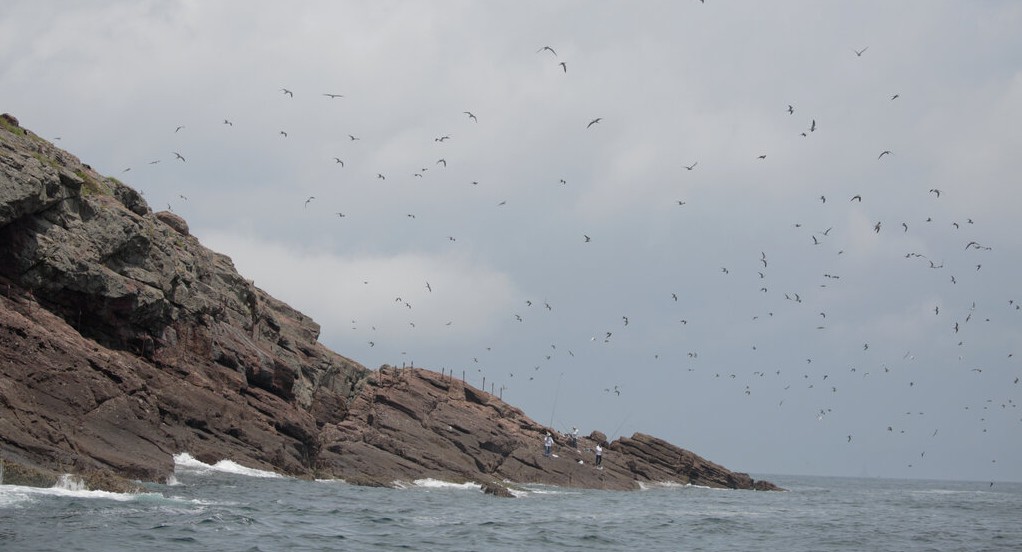
Terns gather over the Geopark. Photo: John Holmes
Among the most noteworthy avifauna in the area are the colonies of terns that find safe havens on rocky outcrops of Port Island, Kung Chau, and Shek Ngau Chau for their breeding grounds.
Hundreds of these aerobatic seabirds, mainly Bridled Terns (Onychoprion anaethetus), Black-naped Terns (Sterna sumatrana), and Roseate Terns (Sterna dougall), arrive in early summer from the tropics to raise their young. Their breeding sites are monitored by the Hong Kong government’s Agriculture, Fisheries and Conservation Department and the Hong Kong Bird Watching Society (HKBWS), while the birds have been given a helping hand with the installation of artificial nests that have boosted their breeding success on the “tern islands” within the Geopark area.
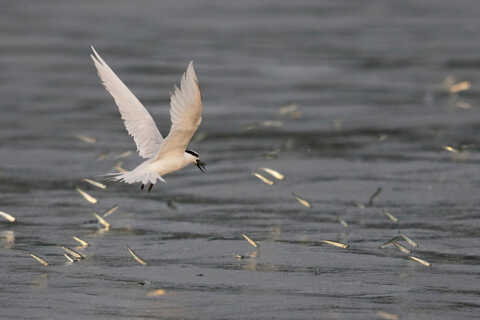
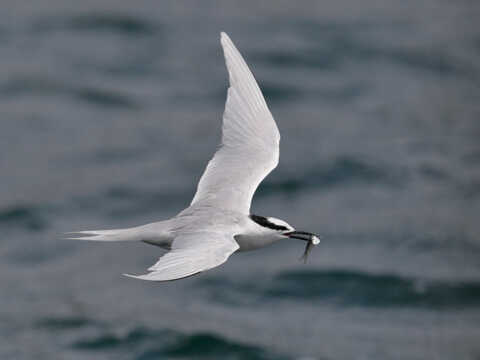
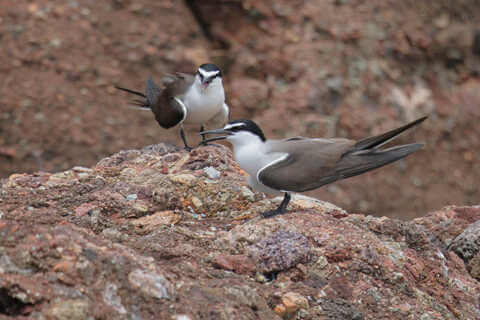
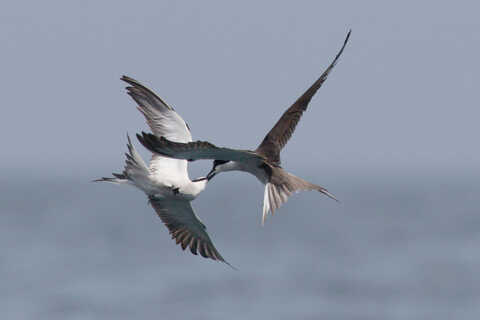

Little has been known about the migration routes and wintering grounds of these birds. But in 2019, the birdwatching society captured and tagged 110 adult and juvenile Bridled Terns, two fitted with satellite tracking transmitters. One captured for ringing had been first ringed on the Great Barrier Reef off the coast of Australia.
From this research, the society’s researchers have observed that a single bird ventured for food from the breeding site in Mirs Bay to south of Lamma and Lantau islands.
John Holmes, who has been photographing terns in Hong Kong for more than 30 years and is a member of HKBWS, said that their numbers were stable.
Bridled and Black-naped Terns are present from late April through to August, he explained. “Both are tropical species, which range from the Indian Ocean through to the Western Pacific, and from south China to tropical northern Australia.”
“They are challenging to photograph from a boat, as both boat and bird are moving.” Photographing on the islands is strongly discouraged, to avoid disturbing the birds.
Islands with their dramatic rocks and cliffs that render them uninhabitable for humans, and protected through the Geopark status, mean that in this area of Hong Kong many marine creatures, from corals to terns, can thrive.
HABITAT PRESSURES – 1
CORAL SURVIVAL TACTICS
Scientists are exploring how some coral communities in Hong Kong waters seem able to manage the stress of living around one of the world's most densely populated cities. Photo: Apple Chui
Despite their delicate appearance, some coral species in Hong Kong waters are proving remarkably resilient to human disruption
Beyond the city’s busy shipping lanes, in the waters of Port Shelter in Sai Kung and Mirs Bay, a marine kaleidoscope awaits below the waves.
Hong Kong may not be famous for its corals, with its waters less clear than more well-known diving destinations in Thailand, the Philippines, and other parts of Asia. But the city does have a long-interlocked history with these intriguing skeletal and soft-structured organisms, and a surprising diversity today that is greater than the Caribbean Sea.
Over 80 types of hard coral have been recorded in Hong Kong waters – one tenth of the global total. This compares with 70 found in the Caribbean. The city also has 29 species of soft corals, 38 types of gorgonians, and six of black corals.
Corals play a vital role in marine ecosystems. Worldwide, such reefs take up less than 0.1 per cent of sea and ocean floors but support around 25 per cent of all marine creatures. Hard corals can form calcified skeletons that fuse together, forming communities and potentially reefs. Soft corals, gorgonians, and black corals are typically found in deeper waters and do not produce such skeletons.
RESILIENT COMMUNITIES
Dr David Baker, Associate Professor at the University of Hong Kong’s School of Biological Sciences and The Swire Institute of Marine Science (SWIMS), has described Hong Kong as “the city that coral built”. Baker and his biogeochemistry research lab team have been studying coral reef ecosystems and local coral issues since 2013, with research sites in the major coral hotspots such as Port Island, Bluff Island, and Sharp Island, among others.
One of their goals is to explore the resilience of corals that not only survive but thrive around one of the world’s most densely populated cities. This is despite Hong Kong’s corals previously being a resource for the construction industry, being chipped and dredged from the sea floor as a source of lime and sediment from the 19th century up to the 1990s.
Further research by marine biologists and other scientists across the universities in Hong Kong is adding insights to coral behaviours, which may assist ecologists and policy-makers in designing better coral protection measures locally and globally. They are also developing novel ways to restore coral populations that have been decimated in recent decades, particularly by water pollution and the eutrophication and hypoxia associated with it.
Among these specialists is Dr Apple Chui, Research Assistant Professor in the School of Life Sciences, Chinese University of Hong Kong (CUHK), and known as “coral mum” for her work in rearing baby and juvenile corals as the first step for restoration.
She explained how Hong Kong “is interesting because it has a marginal environment for coral”. “That means the coral communities we have are living close to one or more of their survival thresholds.”
Water temperature that drops to 14 degrees Centigrade in winter is one example. “That is very cold for corals, which like the warm,” she said. Fluctuations in salinity, due to water run-off into the shallow waters they inhabit, are another.
Yet the corals survive despite sub-optimal conditions. This has led to the hypothesis that Hong Kong corals have adapted to the stressful conditions, and that resilience could stand them in good stead when they face the greater challenge of climate change. “In Hong Kong they may survive because they are tough,” Chui said.
Moreover, understanding that resilience could benefit other areas, with Chui seeing potential for sharing genetic strains from Hong Kong populations with areas that have less resilient communities.






GAINS AND LOSSES
It is in the waters around Kat O and Chek Chau islands, Sharp Island and Shelter Island and the marine reserves of Tung Ping Chau and Hoi Ha Wan that coral coverage and species diversity are at their best.
Baker said: “The coral communities in the northeast have been in pretty good condition. And that is a huge testament to the protection they are afforded. I would argue that some of those sites are proper coral reefs, with coral growing on other coral.”
Sea urchins, sea cucumbers, and cowries may also be spotted in the sites covered by the annual Hong Kong Reef Check, along with fish such as groupers, wrasses, sweetlips, and snappers, though Baker said that continued fishing in the area means fish numbers remain depleted.
In addition, in some areas, many of the corals have been lost. Increasing bioerosion by creatures such as sea urchins, mussels, and Bristle Worms (Polychaeta) is one problem. Eutrophication events are another risk, despite large-scale government sewage treatment schemes to protect Victoria and Tolo harbours, which have improved water quality.
Hoi Ha Wan Marine Reserve was also severely affected by an outbreak of coral disease in 2015, which resulted in substantial coral mortality when an estimated 20.6 to 51.4 per cent of the corals in Tolo Harbour and Channel died.
“We have places that have good coverage and those that used to have coverage but not now,” Chui said. The latter includes Knob Reef and Bush Reef in the Tolo Channel. “There are records that they had very high coral coverage – 70 to 80 per cent, which is even higher than the marine parks. But due to pollution that dropped to almost nothing, over six to eight years in the 1980s. This was largely due to the sewage outflows from the new towns. Tolo Harbour was one of the most polluted areas.”
It is now more than two decades since the Tolo Harbour Action Plan was implemented to reduce and control the polluting inputs, including the development of Sha Tin Sewage Treatment Works. But corals have shown no signs of returning. “The whole coral system was damaged beyond repair,” said Chui, who decided she had to give nature a hand through her restoration work.
MONITORING AND RAISING AWARENESS
She is also one of the team of scientists leading the survey activities of the Hong Kong Reef Check. This was first carried out in 1997 as part of a global Reef Check Foundation initiative that started the same year to promote the sustainable management of coral reefs. It has been coordinated locally by the Hong Kong government’s Agriculture, Fisheries and Conservation Department (AFCD) since 2000 and has seen growing numbers of volunteer divers – now up to 900 – surveying over 30 sites to record the coverage and health of corals and the 20 indicator fauna that these organisms support.
“It is a very good programme,” Chui said. “It is important to have long-term monitoring data, and for enhancing community awareness of coral cover.”
The 2019 Reef Check, a four-month investigation, reported the good news that corals overall in the 33 sites surveyed were “stable and healthy”, according to an AFCD news release.
STRESS TESTS
Deep-sea and shallow-water biodiversity and ecology specialist Professor Jianwen Qiu, of the Department of Biology, Hong Kong Baptist University (HKBU), is studying the effects of stresses that corals face. This work complements studies by Chui and her former supervisor, Professor Ang Put, who has recently retired from the CUHK School of Life Sciences.
By collecting common species such as Acropora and Platygyra, and testing stress factors, including salinity, temperature, turbidity, nutrient levels, and heavy metals, these researchers have found that corals are highly resistant to an individual stress. However, multiple stressors, such as temperature (too high) and salinity (too low), can lead to coral bleaching. For example, in 2017, an El Nino year, particularly heavy rain in the summer led to wide-scale bleaching.
“These tests can help to identify which coral species are more resilient than others and would do better in Hong Kong waters if propagated, as well as which areas need protecting,” Qiu said. Typically, brain corals are more resilient than more sensitive branching corals, such as Acropora. But branching corals support more life, and without them biodiversity would suffer.
To assist greater understanding, Qiu has also been working on biomarkers for coral bleaching. By exposing corals to different levels of stresses, the researchers can detect molecular signs, such as elevated protein levels, which could potentially be used to predict bleaching events.
In terms of the loss of diversity, it has been hard for researchers to fathom the extent of coral in Hong Kong waters before extraction began. However, a study in 2020, conducted by doctoral candidate Jonathan Cybulski in Baker’s lab, has looked at fossil records from 11 sites around Hong Kong, finding that in southern waters, an area that includes Po Toi, Lamma Island, and Cheung Chau, the diversity of corals has decreased by approximately 40 per cent.
The HKU team also collaborated with Qiu and HKBU research fellow Dr James Xie to compare the fossil data with contemporary records. The research found that the reach of sensitive Acropora across Hong Kong waters has been reduced by around 50 per cent compared with its historical range.
CORAL REPRODUCTION
Meanwhile, Chui leads the research at CUHK that is helping corals in the Tolo Channel area by cultivating the juvenile corals in a laboratory before reintroducing them into their natural habitat – thus increasing their survival chances.
This is being done through asexual and sexual propagation. The former involves collecting pieces of broken coral, normally after storms. These are called “corals of opportunity”.
“We fragment them in our marine science laboratory in Tolo Harbour, culture them until they recover, and then outplant them at Bush and Knob reefs. Since 2019 we have outplanted more than 200 corals.
“First we want to test if they can survive, and so far they are doing well, with over 93 per cent survival.” However, they only grow slowly, with an average coral extension rate of around five millimetres per year for massive coral (Porites). This means it will take 100 years for them to reach the mature scales lost to pollution. More will be outplanted, with the hope of restoring their ecosystem services.
The sexual approach involves collecting gametes from the wild and cultivating them into larvae in the coral lab of the F.S Li Marine Science Laboratory at CUHK, ready for outplanting to the field. Today, the first baby Acropora – the fastest growing species – returned to the Tung Ping Chau Marine Park are now 15 centimetres in diameter and sexually viable. “This is the first time in Hong Kong we have completed the lifecycle,” Chui said. “After five years, they are able to produce their own eggs and sperm. This is really exciting.”
Post-settlement survival from this approach, though, is low. To enhance this, they are being kept longer in the nursery. One crop was left for two years, and has achieved a 95 per cent survival. “I am fascinated by the early stages of the coral lifecycle – fertilisation, early development, settlement and post-settlement. The early stage may be the bottleneck in their persistence,” Chui said.
She now plans to extend her research to another innovative technique known as coral chimerism. This involves the fusing of corals of different genotypes, with the aim of extending their resilience. The young corals are identified through screening and tested for their different tolerances.
“We don’t just want to restore corals to survive now, but for the future,” said Chui, who in 2019 was selected for a prestigious Pew Marine Fellowship for this work. Only eight Fellowships are awarded per year around the world.
ECO-HOME INNOVATION
SWIMS, supported by AFCD, has also launched various projects in the past five years to explore coral restoration methodologies, testing internationally established techniques for their applicability to Hong Kong as well as innovative initiatives, such as the Reformative Coral Habitats biomimicry project in 2019. The latter, led by doctoral student Vriko Yu and joining forces with the university’s Faculty of Architecture, used a robotic 3D clay printing method to create panels that provide corals with a raised platform in which to establish themselves away from predators. The environmentally friendly panels, being tested on a 40-square metre area of seabed, have grooves to mimic the shape of brain coral and allow them to easily attach themselves to the structures.
Coral restoration is not without its difficulties, given the larger problem of climate change and warming seas that threaten coral survival globally. Baker describes the panels as “a stop-gap or oasis for coral during challenging times”, but not a solution for all their problems. “Climate change poses the greatest risk by far to coral,” he noted.
More radical approaches may be needed to save corals, such as assisted migration out of the tropics to subtropical waters, Baker said. Such action could one day see corals moved from tropical Hainan Island in Mainland China to Hong Kong and subsequently to Xiamen to preserve them and the myriad life that depends on them.
He still sees cause for optimism for Hong Kong’s corals. “My hope is that with improved conditions – thanks to better management – we might actually see new corals arriving from more tropical locales. Slight warming will make the growing period better for corals here, and given our latitude, extreme warming never lasts very long. Time is a key component for coral bleaching. Indeed, Hong Kong is a special place in this regard.”
Diving Into a Dream Career
Marine biologist Dr Apple Chui developed her passion for underwater photography to share the wonders she experiences from the diving she does in her work.
“When we did our research, and the more I dived, the more I witnessed the beauty of Hong Kong corals. I always want to share my experiences, my interesting stories – for example, the fish that once followed me all day.” That was a filefish, eating the detritus and worms left behind as the team cleaned their research apparatus.


She has also found her students are particularly engaged by her images and the stories behind them. She now uses a TG5 camera to capture underwater life in macro detail.
Chui learnt to dive in her final year of undergraduate study, which led her to choose coral spawning as the topic of her postgraduate research. “It is not just passion, but purpose. I want people to know we have corals, and corals have great potential in the future. They are something to cherish and are worth protecting.”
Community outreach is an important part of her work. Chui leads the Coral Academy for this purpose. She is not just nurturing corals but the enthusiasm of the next generation. She collaborates with 15 secondary schools that host tanks of coral fragments tended by teams of their students and teachers, ready for release back to the wild.
Chui’s own passion for the marine world began with family visits to Wu Kai Sha and Lung Ha Wan. “If my family hadn’t brought me to the beach, I would not be the person I am now. My nicest childhood memories are related to the sea. It has been my dream job to be a marine scientist.”
As others discover the wonders of the marine environment, whether through family outings or education, they too may join the drive for its conservation, she hopes.
HABITATS UNDER PRESSURE – 2
UNDERWATER MEADOWS
Sea lettuce (Ulva lactuca), an edible green algae. Photo: Yiu Wai-hong
Seaweeds play a major role in the oceanic food web and as habitats for other marine life, with over 260 different species recorded in Hong Kong
Stretching from Hong Kong Island’s southern waters, around Cape D’Aguilar Marine Reserve, to northeastern Tung Ping Chau Marine Park, there is a striking natural sight to behold: underwater forests – some as high as three metres – and meadows supporting an array of marine life.
In these two marine protected sites, and areas such as Bluff Island, Lung Ha Wan, and Stanley, seaweed coverage can range from 40 to 60 per cent in the high season of spring.
In Tung Ping Chau Marine Park, the Hong Kong government’s Agriculture, Fisheries and Conservation Department (AFCD) has recorded 65 species. At Lung Lok Shui, on the west coast of Tung Ping Chau, large forests of Sargassum, a genus of brown seaweed and the most common in Hong Kong, flourish in the winter and all but disappear in the summer.
 Sargassum may grow into forests beneath the waves.
Photo: Yiu Wai-hong
Sargassum may grow into forests beneath the waves.
Photo: Yiu Wai-hong
“Seaweeds don't get the same amount of attention as corals but in ecological terms, they are just as important,” said marine algae specialist Dr Cheang Chi-chiu, Associate Professor, Department of Science and Environmental Studies, The Education University of Hong Kong.
He recently led a team that undertook a two-year study on subtidal seaweed diversity and its distribution, conducted with AFCD. This documented 264 species of seaweed in Hong Kong, now compiled into the Field Guide to Seaweeds of Hong Kong, published by the AFCD in 2020.
Seaweed, the generic name for a group of macroalgae, plays an important role in the intertidal and subtidal marine world around Hong Kong, though they typically prefer the more saline waters in the east. As primary producers using sunlight to photosynthesise, seaweeds, together with microalgae (phytoplankton), form the basis of the food web in the ocean. Urchins and herbivorous fish, such as rabbitfish, feed on them and, in turn, may be consumed by crabs and other fish.
Seaweed beds also provide shelter for many juvenile fish species, larvae, crustaceans, molluscs and echinoderms. In a similar way to coral and oyster reefs, they engineer their own ecosystems.
Typically, seaweeds are classified into three major groups based on their photosynthetic pigments: green algae (Chlorophyceae), red algae (Rhodophyceae) and brown (Phaeophyceae).
Cheang notes that it can be hard to determine whether some species are endemic or not. His team’s study included past records of shoreline collections of washed-up seaweed, but it can be difficult to specify if these species drifted into Hong Kong or are local to its waters.
However, his team was able to positively identify 86 species growing in Hong Kong’s sub-tidal marine environment, comprising 24 brown, 40 red, and 22 green algae species through a series of intensive dive surveys, conducted as part of the study.
Globally, there have been reports of a huge decline. For example, in recent years, it has been reported that Northern California’s kelp forests have declined by 93 per cent. Off the east coast of Tasmania, more than 95 per cent have disappeared.
Some phycologists have suggested that climate change may be a cause. Increased seawater temperatures limit seaweeds’ ability to retain carbon and can cause damage on a cellular level, resulting in slower growth, delayed development, and potentially death.
Cheang said that some would survive as temperatures warm, resulting in a reassembly of species present.
Seaweeds are not only important to the ecosystem, but may have future uses in mitigating pollution, Cheang noted seaweeds can absorb various kind of pollutants, he said, while studies have shown that they are a good bioremediation candidate for cleaning waters.
REEF RESTORATION
THE BENEFITS OF OYSTER ENGINEERING
Planting old oyster shells can increase biodiversity by up to 80 per cent, as they provide the perfect shelter for young oysters and for larvae of barnacles and tunicates, among others, to attach themselves and grow. Photo: Harry Few
These bivalves once thrived in Hong Kong waters, serving as ecological engineers that boosted water quality and marine ecosystems. Now endeavours are underway to help them re-establish this role
Oysters have a long history in Hong Kong’s waters, being both found in the wild as well as farmed for more than 700 years.
Oyster reefs once covered the seabed in major estuaries and bays, such as Deep Bay in the west and Tolo Harbour in the east, with Crassostrea hongkongensis, a type of oyster long cultured in the Pearl River Delta, named after the city after being first documented in Hong Kong.
However, for centuries Hong Kong’s oyster reefs have been utilised as a source of seafood and to fuel the production of lime that was used for construction, textiles, and as a preservative. Add to that a loss of habitat and waters polluted by bacteria and heavy metals, and it becomes clearer why oysters – even cultivated ones in Lau Fau Shan in the northwest New Territories – have struggled in more recent times.
Globally, oyster reefs are one of most endangered marine habitats, with an estimated 85 per cent already gone (just over 50 per cent of all coral reefs are estimated to have been destroyed).
In Hong Kong, it is hard to put a figure on oysters’ decline as their exploitation predates the first records made of areas that they used to cover. Yet today, they are returning, with the help of Hong Kong marine environmental scientists.
One such team, led by Professor Kenneth Leung Mei-yee (Croucher Fellowship 2000), aims to restore the reefs to their former numbers to boost marine ecology and improve water quality.
Leung is Chair Professor of Environmental Toxicology and Chemistry in the Department of Chemistry and Director of the State Key Laboratory of Marine Pollution, City University of Hong Kong. The importance of oysters, he said, lies in the fact “they are ecological engineers”.
“Like coral, they create reefs that provide food and shelter for a large variety of marine life,” he explained.
From bacteria and other bivalves (such as mussels and gastropods) to crabs and fish, oysters help bind ecosystems together, building biodiversity. “The reefs also help provide a natural defence against coastal erosion and flooding. So, by helping oysters re-establish [themselves], we can provide multiple benefits,” he said.
In addition to creating and strengthening marine ecosystems, oysters are effective at improving water quality. Like many other bivalves, they pump large volumes of water through their bodies to obtain the nutrients they need to live. An adult oyster can filter between 96 to 216 litres of water a day. In the process, they remove microscopic algae and suspended organic matter from the water and so act as natural purifiers.
By Leung’s estimate, Tolo Harbour could support two billion oysters, which would be able to filter the entire water column once every two days.
The value of oysters for improving water quality has been further affirmed in research carried out for the OCEAN-HK project, focused on ocean circulation, ecosystems, and hypoxia and led by Professor Gan Jianping, Chair Professor, Department of Ocean Science and Department of Mathematics, at Hong Kong University of Science and Technology.
In a forthcoming paper, the Gan team’s three-dimensional physical-biogeochemical modelling shows that oyster aquaculture can effectively alleviate eutrophication-driven hypoxia in the Pearl River Delta estuary – an oyster farming area of 200 square kilometres could reduce the volume of hypoxia by as much as 78 per cent, equal to the impact of reducing river nutrient input by as much as 60 per cent.
Oysters decrease sediment oxygen consumption, and thus hypoxia, by reducing both particulate organic matter directly and regenerating nutrients that support new production of organic matter, Gan explained.
However, the effectiveness depends on the location and size of the farming area, and density of oysters. For instance, the impact is greater if the oysters are farmed downstream of the hypoxic area because nutrients released from a farm can increase downstream organic matter. “Circulation and the biogeochemical characteristics of a specific ecosystem need to be taken into account in planning farming areas,” he said.
While the COVID-19 pandemic has hindered Leung’s team, they have continued trials with oyster cages in three locations, at Sai Kung, Ma Liu Shui in Tolo Harbour, and Tuen Mun, which are already showing promising results in terms of biodiversity enhancement and biofiltration.
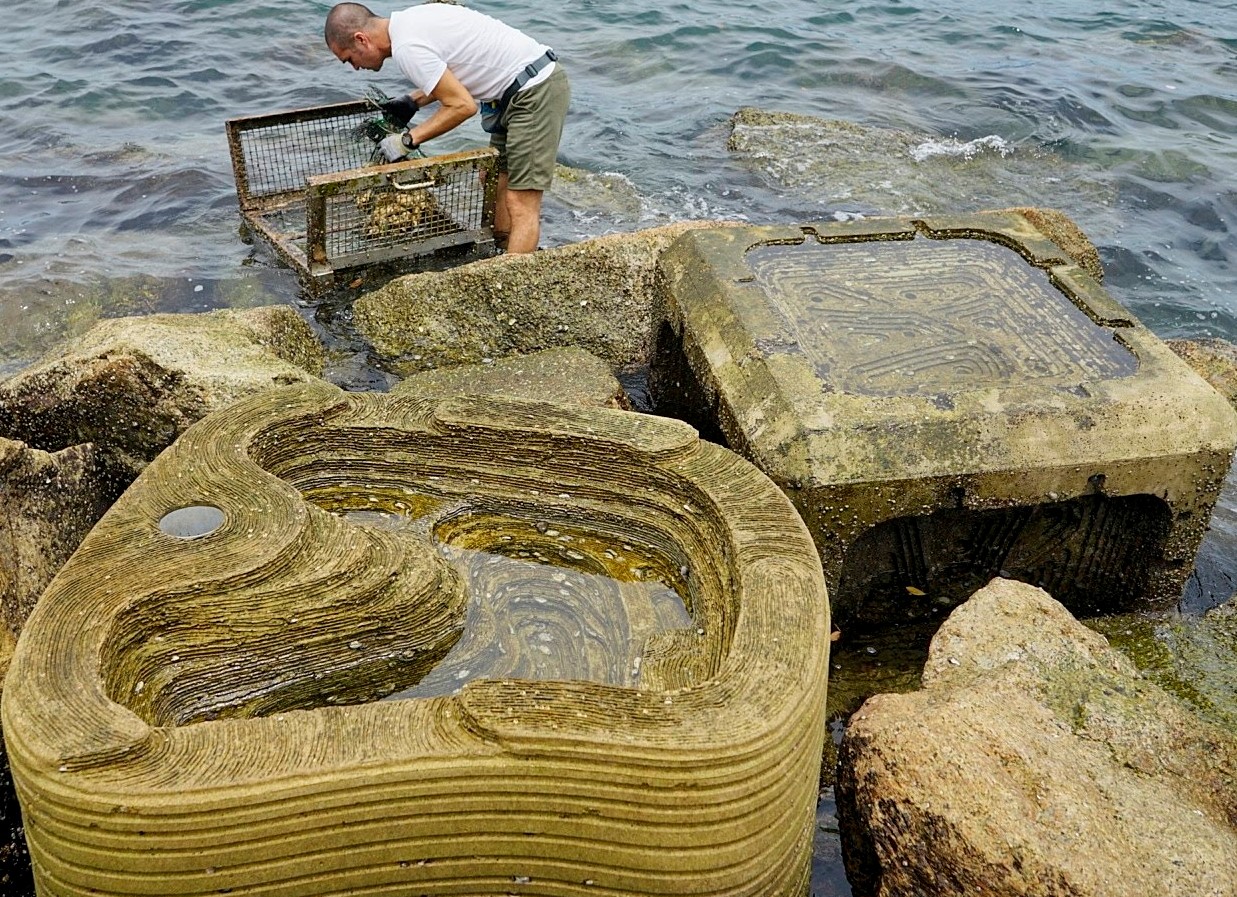 Checking an oyster cage at the Sai Kung test site, next to
eco-shoreline blocks that mimic the natural conditions of
intertidal zones, creating tidal pools and providing shade.
Photo: Harry Few
Checking an oyster cage at the Sai Kung test site, next to
eco-shoreline blocks that mimic the natural conditions of
intertidal zones, creating tidal pools and providing shade.
Photo: Harry Few
Their studies take into account multiple variables, including water salinity. The water on the eastern side of Hong Kong is more saline than the water on the western side, which is diluted by the Pearl River. Given this, it has been suggested that the native Pearl Oyster (Pinctada fucata) and another native oyster species, the Portuguese Oyster (Crassostrea angulata), may do particularly well if introduced to sites in the east, as they thrive in saltier water.
Another aspect being monitored is the effectiveness of planting empty oyster shells. “Even empty shells have been found to increase biodiversity by 80 per cent,” Leung said.
Oyster shells are made up of calcium carbonate and their grooves and layers provide the perfect base for new oysters and other marine larvae, such as barnacles, tunicates, and tubeworms, to latch on to and grow within the shelter they provide.
At the test sites, empty shells are already playing host to a large number of recruits: young oysters that have arrived naturally with the tides and current.
Leung’s team has now set up the non-profit Hong Kong Marine Ecological Association, which has a vision to promote “a biologically diverse and sustainable marine environment for life to flourish and people to appreciate”. Its first project is Oysters Save Our Seas (OysterSOS).
Inspired by New York’s Billion Oyster Project, this is part of a growing number of initiatives helping to re-establish ecological engineering species. Operation Crayweed, which is replacing an underwater forest along Sydney’s coastline in Australia, is another example.
OysterSOS will build on the work that Leung’s team has already been doing. It has four objectives: to restore ecosystems and increase biodiversity; continue scientific research and monitoring; educate younger generations so they can better understand marine environments and how to conserve them; and engage communities who can make changes happen.
Such initiatives include adapting the local practice of “mercy release”, during which Buddhist and Taoist groups in Hong Kong release animals back into the wild. The groups now see the benefit of releasing native oysters rather than fish that could be invasive species, and of working with OysterSOS.
Reclaiming the Shorelines
Today, 16 per cent of Hong Kong’s shoreline has been developed. In 2017, Mainland China passed a law to protect 35 per cent of its natural shoreline. But as Professor Kenneth Leung (Croucher Fellowship 2000), Chair Professor of Environmental Toxicology and Chemistry in the Department of Chemistry and Director of State Key Laboratory of Marine Pollution, City University of Hong Kong, points out, the Hong Kong government has yet to define a “wet line” and a plan on how to protect it.
However, some mitigation efforts are underway to give marine life a better chance along the new man-made coastlines. One project that Leung is involved with deals with the creation of “eco-shorelines”, in cooperation with the Hong Kong government’s Civil Engineering and Development Department. These are blocks and seawall panels designed to mimic the natural conditions of intertidal zones, create tidal pools, provide a surface that marine life can take hold on, and provide the shade that species need to avoid heat stress at low tide.
The benefits are already being seen. Fifteen months after their installation at their Tolo Harbour test site, the eco-shoreline blocks are now covered in marine life, including oysters, mussels, crabs, and blennies, among others.
On the smooth sea defence boulders, monitored as a control, there is significantly less growth. Leung estimates that it would take at least 10 years for these smooth rocks to accumulate the same amount of life currently seen on the eco-shoreline blocks.
IN THE BALANCE
The Clean-Up Challenge
Greater Sand Plover (Charadrius leschenaultii) and Sanderling (Calidris alba), with tidal shoreline rubbish at Fan Lau, Lantau. Photo: Martin Williams
Scientists across Hong Kong’s universities are spearheading research to understand and combat the threats to its marine ecosystems, ranging from piles of refuse to legacy toxins from antifouling paints on ships’ hulls
Living With Our Leftovers
Rubbish floating in water and washed on to shorelines is one highly visible blight and public concern. However, for creatures that consume or get caught in it, the results can be devastating.
In 2020, two green turtles washed up dead on Hong Kong beaches and were later found by researchers at the State Key Laboratory of Marine Pollution at City University of Hong Kong (CityU) to have consumed considerable quantities of plastics, from yoghurt wrappings to discarded fishing tackle and a surgical glove that may have been mistaken for a jellyfish.
A study by Greenpeace East Asia and the Education University of Hong Kong (EdUHK), published in 2019, found that plastic pollution in Hong Kong’s waters had increased 11-fold in three years. These plastics not only break down very slowly but also absorb toxins, and can find their way into marine, and subsequently human, food webs.
The research, led by Dr Lincoln Fok, of the Department of Science and Environmental Studies at EdUHK, suggested most of the plastic rubbish was sourced locally, being found in greater concentrations in eastern waters around Mirs Bay, Sai Kung, and Tolo Harbour than Lantau Island to the west. Food packaging was a major source.
Of 18,123 pieces of plastic collected from waters in 20 sampling sites, 41 per cent was polystyrene foam, 20.9 per cent was plastic type fragments, 17.4 per cent was film, and 20.5 per cent was fibres, the researchers found.
Looking at the overall rubbish that enters Hong Kong waters, an Audit Commission report published in October 2020, noted that from 2010 to 2019 an average of 15,354 tonnes of marine refuse was collected by Hong Kong government departments annually.
Among such waste, about 70 per cent was floating refuse gathered by the Marine Department, and the remaining 30 per cent was retrieved from shorelines by the Leisure and Cultural Services Department, Agriculture, Fisheries and Conservation Department, and Food and Environmental Hygiene Department, depending on the locations the different departments are responsible for – efforts joined by community groups and NGOs in annual beach clean-ups.
The commission also called for improvements in the government’s monitoring and management of clean-up efforts, and enforcement against marine littering.
In addition to large items of waste in marine environments, microplastic fibres and beads pose a global problem. A recent study by Commonwealth Scientific and Industrial Research Organisation, an Australian science agency, estimated there were 14 million tonnes of microplastics on the ocean floor.
This issue is a focus for the State Key Laboratory of Marine Pollution at CityU and is being addressed by a number of other local universities as well.
Most recently, Dr Sylvia Yang Liu, of the Department of Applied Biology and Chemical Technology, Hong Kong Polytechnic University, and her colleagues attracted international attention through their invention of a method using bacteria in “sticky” biofilm to trap microplastics during waste treatment.
In proof-of-concept lab tests, the team used the bacterium Pseudomonas aeruginosa to capture microplastics in a bioreactor. This species of bacteria is found in all environments and has previously been shown to colonise microplastics in the environment. Their next step is to find natural biofilm bacteria that can perform this role.
“It is imperative to develop effective solutions that trap, collect, and even recycle these microplastics to stop the ‘plastification’ of our natural environments,” she told the 2021 Microbiology Society's Annual Conference.
Dr Tsang Yiu-fai, of the Department of Science and Environmental Studies, EdUHK, is also working on this issue, with funding from the Environment and Conservation Fund. He said that discharge from sewage treatment works was a major source of this pollution, and that microfibres – such as polyesters – from washing machine effluent accounted for as much as 35 per cent.
Tsang is investigating the impact of microplastics on treatment system performance in Hong Kong, including microbial community dynamics, and seeking solutions for more efficient removal. “We will propose modified designs of the existing treatment system,” he said.
This complements on-going work by other EdUHK members of the State Key Laboratory on Marine Pollution to address the growing problem of water being contaminated by endocrine disrupting chemicals (EDCs) and pharmaceutical and personal care products (PPCPs) seeping from sewage systems, which can also be absorbed by microplastics.
“After entering the environment, EDCs and PPCPs can be found in the surface water and sediment, and then go into the food chain. They have been detected in tissues of several different aquatic species and frequently reported in fish tissues,” Tsang said.
“Even in very low concentration in the environment and food, they can disturb hormonal balance, leading to major consequences including reproductive impairment, abnormal development, and growth retardation in animals – including humans.”
He developed biochar-enhanced treatment systems that can remove them, in a collaboration with HKU members of the State Key Laboratory and University of Wuppertal, Germany. These are undergoing trials in sewage treatment works in Guizhou Province, working with Guizhou University.
Tackling Water Pollution
As a city of 7.5 million people, Hong Kong faces the continuous challenge of how to minimise the impact of its waste on the marine environment, including human waste, with up to 2.8 million metric tonnes of sewage processed to varying levels of treatment annually.
One major initiative undertaken by the Hong Kong government has been the Harbour Treatment Scheme (HATS), initiated in 2001 and fully operational in 2015. HATS treats sewage that was previously discharged into Victoria Harbour with only preliminary treatment. “Before the scheme, this largely untreated sewage meant that not only was the harbour very smelly but also very unhealthy,” Professor Kenneth Leung Mei-yee (Croucher Fellowship 2000), Director of the State Key Laboratory of Marine Pollution at City University of Hong Kong (CityU) and Chair Professor in the Department of Chemistry, CityU, said.
Leung noted that the sewage conveyance system of nearly 45 kilometres of underground tunnels means that “the waters of Victoria Harbour are now clean enough to swim in”. Indeed the annual swimming race across the harbour resumed in 2011, after being halted in 1979.
The clean-up is also important for restoration of marine ecosystems. In 2020, a team led by Leung used robots to survey the harbour bed, which found soft and hard corals growing.
However, since the implementation of HATS, more sewage has been pumped into western waters from the Stonecutters Island Sewage Treatment Works, which Dr David Baker, Assistant Professor at The Swire Institute of Marine Science (SWIMS), University of Hong Kong, has identified as a potential new seasonal dead zone in Hong Kong waters.
Other research highlights that Hong Kong’s water pollution challenges also need to be understood and addressed within a regional context.
This is the focus of a cross-university project investigating ocean circulation, ecosystems, and hypoxia around Hong Kong waters, known as OCEAN-HK. It is funded under the Hong Kong Research Grants Council’s Theme-based Research Scheme, and combines field observations and hydrography, with atmospheric and physical modelling of ocean circulation and tides, and biochemical modelling of the ecosystem.
 Exploring the linked physical and biogeochemical dynamics in
the Pearl River Estuary aboard a research vessel.
Photo: OCEAN-HK
Exploring the linked physical and biogeochemical dynamics in
the Pearl River Estuary aboard a research vessel.
Photo: OCEAN-HK
The project is coordinated by Professor Gan Jiangping, of Hong Kong University of Science and Technology (HKUST), its co-principal investigator, and includes researchers from CityU, its State Key Laboratory on Marine Pollution, and HKU, and collaborators in Xiamen, Beijing, Taiwan, and the US.
Hypoxia is associated with “dead zones” in seas, oceans, rivers, and lakes – when oxygen saturation falls below two milligrams per litre and life can no longer be sustained. It is closely linked to eutrophication, caused by excessive nutrients from pollution that feeds oxygen-hungry algal blooms and other micro-organisms until there is no oxygen left, and excessive dissolved inorganic nitrogen.
OCEAN-HK builds on Gan’s previous work on the ocean dynamics in the area, which has shown the problem of hypoxia extends well beyond pollution from local sewage. “The hypoxia is formed in the coastal transition zone between the Pearl River Estuary and adjacent continental shelf, where a favourable hydrodynamic condition accumulates organic matters produced by rich nutrient input from the river and provides a long residence time for hypoxia to occur,” he explained.
“We have made substantial progress in identifying the characteristics and formation mechanism of eutrophication and hypoxia, to provide a potential mitigation strategy,” he said. This includes reducing nutrient source inputs from different anthropogenic activities and economic sectors; sharing knowledge of future trends of hypoxia intensity and location, as impacted by climate change; and mitigating through the development of oyster farming in the hypoxia zone.
Information has been shared with government for policy planning for the marine environment, new water treatment schemes, better pollution monitoring and impact assessment, and to inform planning for the Lantau Tomorrow Vision reclamation.
“The islands to be built are located along the pathway of nutrient and organic matters discharged from the Pearl River to Hong Kong waters,” Gan said. “The design of reclamation should avoid blocking the pathway that could accumulate the nutrient and organic matters and cause eutrophication and hypoxia around the newly built islands.”
Gan, who emphasises the connections between multiple forces that shape the marine environment, sees the need for “long-term, frequent and broad monitoring and study”, and to extend research talent to tackle the complex biogeochemical processes, particularly the quantitative assessment of the processes. “Ocean science, particularly coastal ocean science needs to be studied under the regional earth system that links river basin (land)-atmosphere-ocean together as a system.”
Toxins Below the Waterline
Another significant pollution threat to the marine environment comes from antifouling paints used to protect marine vessels and structures from barnacles and other benthos. These have led to major contamination of organotins, such as tributyltin (TBT) and triphenyltin (TPT), which can cause endocrine disruption and death in marine organisms.
TPT has been banned in Hong Kong since 2008, but has recently been found in increasing concentrations in creatures such as Chinese White Dolphins (Sousa chinensis) and Finless Porpoises (Neophocaena phocaenoides) due to its accumulation in other marine organisms in the food chain. The research, led by Professor Kenneth Leung before he left HKU’s Swire Institute for Marine Science (SWIMS) and joined City University of Hong Kong, was published in 2020.
Antifouling is also implicated in large concentrations of heavy metals. Samples of marine water and soil gathered from waters near local shipyards by Professor Michael Leung Kwok-hi, of the School of Energy and Environment at CityU, was found to exceed the standard for copper by up to 60 times, according to a university news release. He has teamed up with Professor Dennis Leung Yiu-cheong from the Department of Mechanical Engineering, HKU, to develop an eco-friendly nanophotocatalytic alternative which, upon activation by sunlight, can disrupt the cell wall of micro-organisms that foul marine structures.
Professor Qian Pei-yuan, Chair Professor in the Division of Life Sciences, Hong Kong University of Science and Technology, has been addressing the same issue, but with a different solution. He has spent more than a decade developing non-toxic butanolide compounds created by bacteria that can repel marine benthos.
This is derived from his research into the dynamics of biofilm – found on slimy surfaces – and the chemical responses within it, as revealed through gene sequencing technology used to recognise new microbes that can join the battle to protect our waters.
CROUCHER ECOLOGY
Issue Three: June 2021
Overview
This third issue of Croucher Ecology focuses on coastal wetlands and their role in supporting the annual migration of as many as 50 million birds along the East Asian-Australasian Flyway. The route stretches thousands of kilometres from New Zealand and Australia in the south to the Arctic Circle in the north.
Hong Kong has 6,640 hectares of wetlands, including the protected Mai Po Inner Deep Bay Ramsar Site. Hong Kong’s subtropical climate and geographical position of its wetlands make it a vital stopover and wintering site for many migrating birds.
COMING SOON: Climate change poses a growing challenge to the ecology and biodiversity of Hong Kong. Our final issue in this series will look to that future, and how Hong Kong is preparing for the changing weather patterns that are already underway. Ready for publication in July 2021.
PROTECTION AND DEVELOPMENT
Whither Hong Kong's Wetlands?
View across the Mai Po Nature Reserve and Inner Deep Bay in the northwest New Territories. Photo: Andrew Sun
Marshes, mangrove stands, and mudflats are among the most biodiverse terrains of the local landscape. However, such bountiful lowland ecosystems are facing more pressures than higher land in maintaining their presence
Wetlands are like sponges, lying between land and water. According to the inter-governmental Ramsar Convention on Wetlands of International Importance, they store twice as much carbon as forests and through their ecosystem services are among the most productive environments for flora and fauna.
However, their flat terrains mean that they face the greatest competition with human needs for space, for housing, industry, agriculture and port infrastructure, particularly where they fringe large and expanding coastal cities, such as Hong Kong and its neighbours in the Greater Bay Area.
Hong Kong’s best-known wetlands are located in the northwest New Territories. Here lies an international marvel – Mai Po Marshes and Inner Deep Bay, which together host up to 80,000 birds, along with mammals such as the endangered Eurasian Otter (Lutra lutra), and numerous reptiles, amphibians, insects, and aquatic species, as well as the largest stand of mangroves remaining in Hong Kong.
Wetlands also encompass other areas under the definition of the Hong Kong government’s Agriculture, Fisheries and Conservation Department (AFCD). These include reservoirs (around 2,480 hectares), such as Plover Cove Reservoir, followed by aquaculture ponds (1,590 hectares), marsh (1,100 hectares), artificial drainage channels (720 hectares), rivers and streams (460 hectares), and wet agricultural land, the latter now covering only around 290 hectares.
There are, for example, extensive fish ponds in Lok Ma Chau; Lantau Island has the ecologically important Pui O River and mangroves – among others; and Long Valley near Sheung Shui has its fresh water wetlands now being converted to a nature park.
Unlike the mountainous terrain of Hong Kong’s country parks, wetlands can be drained and easily built upon, and are also subject to pollution purveyed through the waters that sustain them.
In the New Territories they have been used by humans for centuries, for living space, agriculture, aquaculture, and salt production, with land use rights and ownerships that complicate their management and control. More recently they have had to give way to new towns such as Tin Shui Wai, and transport infrastructure, such as the Sheung Shui to Lok Ma Chau Spur Line.
In its Biodiversity Strategy and Action Plan 2016-2021, the Hong Kong government acknowledges the importance of the wetlands that remain, as buffers for coastal protection, for the human communities that depend on them, and their ecological value. While they cover only five per cent of the city’s land area, they support more than 70 per cent of the bird species recorded in Hong Kong, it states.
“ Wetlands produce the richest communities of living organisms”
- Professor Wong Ming-hung
But there are tensions as to how much should be saved from urban development, and whether the protection of sites important to wildlife goes far enough.
Professor Wong Ming-hung (Croucher Senior Research Fellowship 1997), Adviser to the Department of Science and Environmental Studies, Education University of Hong Kong (EdUHK), specialises in ecological restoration and ecotoxicology. Despite wetlands occupying only six per cent of the earth’s surface, he said, they support approximately 20 per cent of all living organisms. “Wetlands produce the richest communities of living organisms.”
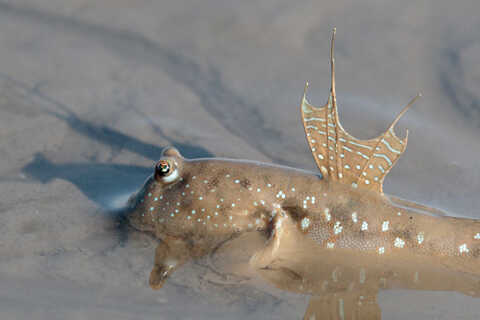
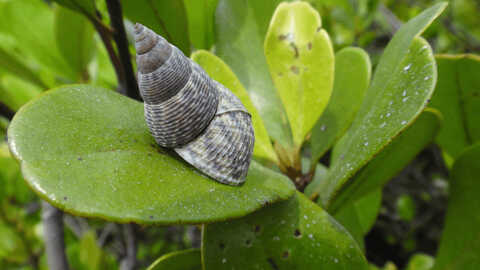
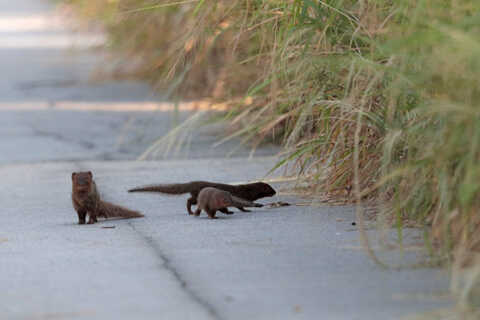
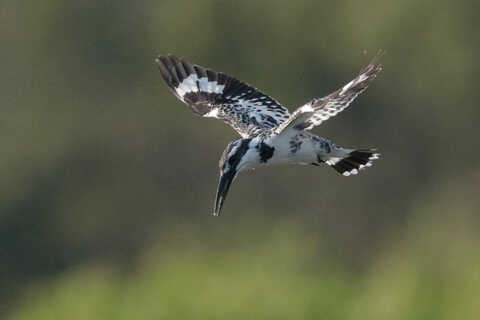
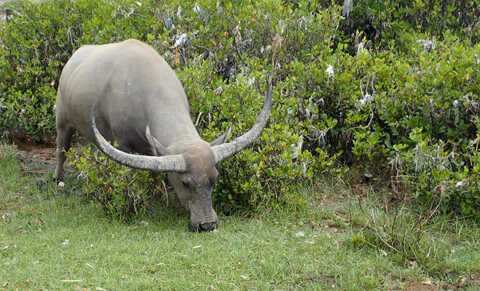
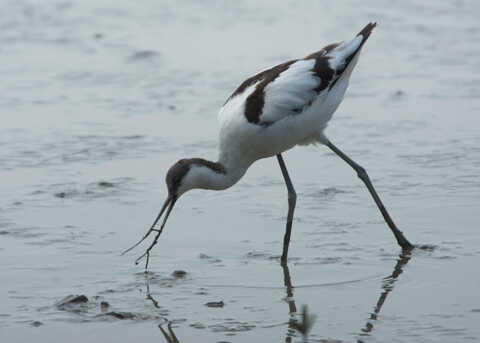
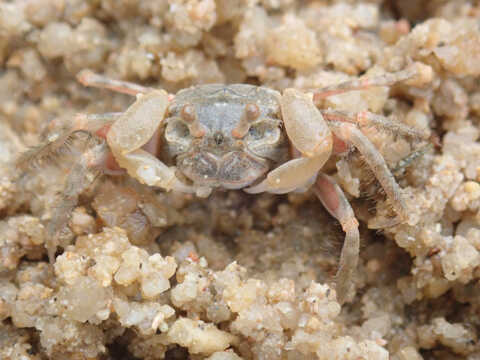
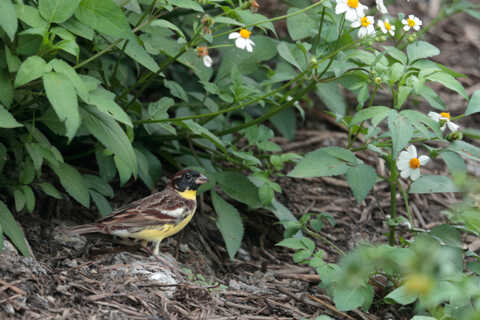
Despite their importance, between 64 per cent and 71 per cent of these wetland areas were lost globally during the last century, according to the Ramsar Convention which provides a framework for action and international co-operation for wetland conservation. Further destruction of ecosystems is evident from the extensive coastal development since then.
Mai Po and Inner Deep Bay, encompassing a total area of 1,500 hectares, were designated a Ramsar site in 1995. The area is overseen by AFCD, with the Mai Po Nature Reserve managed by wildlife conservation organisation WWF-Hong Kong.
Wong, a former chairman of the Mai Po Management Committee, said: “Mai Po is one of the largest wetlands in southern China. The Hong Kong side is doing better than the Shenzhen side of Deep Bay. It is very important as a shelter and feeding area for migratory birds, including several endangered species, such as the Black-faced Spoonbill [Platalea minor].”
The Hong Kong government protects Mai Po, with access restricted to the nature reserve and seaward “core” of the Ramsar site, and development limited in the wider area. In addition, the Ramsar site includes five Sites of Special Scientific Interest.
The Town Planning Board has also designated a Wetland Conservation Area – covering the landward area of the Ramsar site – and Wetland Buffer Area for the Deep Bay area, with special guidelines to control development in the area, and a “no-net-loss” policy for wetlands.
New development in the buffer area is only allowed if it has an insignificant impact on the conservation area, in terms of ecology, drainage, sewage, and traffic.
To the south of Mai Po, the 60-hectare Hong Kong Wetland Park opened in 2006 as a consolation for the extensive wetlands lost to Tin Shui Wai. The park gives the public easier access to some of the wonders of Inner Deep Bay.
Migratory birds find their way to other coastal wetlands, such as Shui Hau, which has the largest mudflat on Lantau Island, as well as marshes, mangroves, intertidal sand, and rocky shores.
However, the 180-plus species that the area supports – including the endangered Horseshoe Crab (Limulidae) and birds such as the Rufous-necked Stint, (Calidris ruficollis) – have had to compete with the popularity of Shui Hau for clam digging, the focus of a WWF-Hong Kong conservation education campaign.
Emeritus Professor David Dudgeon, Chair Professor of Ecology and Biodiversity, University of Hong Kong, and current Chairman of the Mai Po Management Committee, said: “The latest data indicate that we lost one-third of all wetland areas between 1996 and 2020.” With the reservoir areas remaining unchanged, the proportion of marshes beyond Mai Po that have been lost “is very high indeed”. “There is no evidence that the rates of loss are declining,” he said.
Except for Mai Po, wetlands were poorly represented in protected areas, compared with the higher land in the country parks, he added.
For example, wetlands at Pui O had been degraded step by step, by illegal dumping and other human activities, he said. “This was a particularly interesting site because it was large and the buffaloes maintained wallows which seemed to enhance diversity of beetles, amphibians, and [others].
“But this type of progressive degradation has occurred across Hong Kong. For smaller sites, it leads to the loss of the entire site.”
Dudgeon and his former student Dr Ken So Ying-kin published research in 2020 in the journal Aquatic Conservation showing that Hong Kong’s abandoned paddy fields, now semi-natural marshes, had a greater biodiversity when grazed at low intensity by bovines, such as feral cattle and water buffaloes, than ungrazed sites. By keeping plants checked, bovines could play a greater role in conservation management, they advised.
So, now a post-doctoral fellow at HKU’s School of Biological Sciences, has conducted further research on the changing wetland areas. “The key issue is that most of the wetlands in Hong Kong are located on private land and do not receive any form of protection,” he said. “This is also the major cause of the rapid decline.
“For example, a marsh located in Lung Tsai [in the northwest New Territories] was filled and converted into a parking space in 2016 because it was not covered by any zoning plan.”
Lung Tsai marsh was only the tip of the iceberg. “Cases of wetland loss and destruction have been reported recurrently over the past few decades.”
WWF-Hong Kong has launched a project to map all of Hong Kong’s wetlands to inform their future protection. Andrew Chan Chung-ming, its Senior Conservation Officer, Policy, and Tobi Lau Siu-keung, Manager, Conservation Policy, will analyse satellite images of surviving coastal, inland, and man-made wetlands, and review how they have changed over a 30-year period.
Chan said: “The no-net-loss planning policy is only applied to Mai Po.” This had resulted in the massive loss to date.
Dr Sung Yik-hei, Assistant Professor of the Science Unit, Lingnan University, has undertaken such a comparison for wetlands in the Ramsar area. This showed intertidal mudflats had been encroached on by mangroves, and a recent decline in aquaculture. “In general, the habitat change is not that great compared with other areas,” he said. “But the coverage of fish ponds outside the area has declined a lot.”
EdUHK adviser Wong said: “We have wetlands in different parts of Hong Kong that are not so well preserved. But they are also very important.”
He is among those who have focused their research not only on strategies to preserve existing wetlands and safeguard them from pollution, but to add to them by pioneering the use of constructed wetlands. He has used this approach for the Hong Kong government’s Drainage Services Department in Ta Kwu Ling, near the Ping Yuen River in the New Territories, to purify wastewater for villages not connected to main sewage treatment plants, and create habitats for different flora and fauna.
One area that has been saved is Long Valley, near Sheung Shui, the largest contiguous freshwater wetland of high ecological value in Hong Kong, according to Michael Wong Wai-lun, Secretary for Development, who wrote on the area in his April 2021 blog.
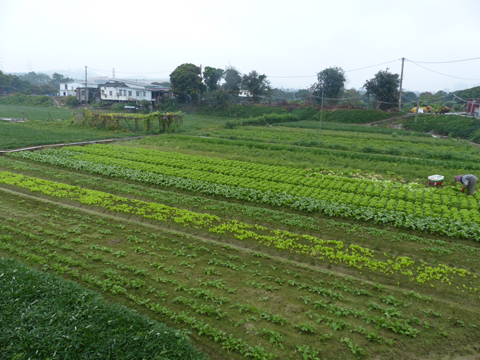 Long Valley farmland. Photo: Thomas Gomersall
Long Valley farmland. Photo: Thomas Gomersall
Two decades ago, the valley faced destruction to make way for the MTR’s Lok Ma Chau spur railway line. However, conservationists successfully blocked the plan. A tunnel now runs under the wetland instead.
Since 2005, the Conservancy Association and Hong Kong Bird Watching Society (HKBWS) have been contracted to manage the site as an agricultural conservation area, helping farmers switch to organic farming, and safeguarding habitats for birds. Its rice paddies are a popular feeding ground for the Black-winged Stilt (Himantopus Himantopus) and Yellow-breasted Bunting (Emberiza aureola), while elusive Painted Snipe (Rostratulidae) are occasionally seen, emerging from its reed beds.
Now this wetland, which was resumed by the government in 2019, is in the process of being remodelled as a 37-hectare nature park and green space for the Kwu Tung North and Fanling North New Development Area. The park, due to be completed in 2023, will include a biodiversity zone of about 21 hectares, agriculture zone of 11 hectares, and visitor zone of five hectares.
Development Secretary Wong wrote of the plan: “The Government has been committed to striking the right balance between development and conservation with a view to providing a large green space in a new town to create a quality living environment.”
He stressed that the construction team was taking care to protect the ecology during the works, for example, by avoiding the use of heavy machinery that would disturb roosting birds, based on advice from the Conservancy Association.
Yu Yat-tung, Senior Research Manager of HKBWS, welcomed the decision to conserve Long Valley as a wetland. “It is definitely a good thing. It is better than doing nothing,” he said. But he is worried that too much emphasis would be placed on creating a “very clean environment”, as many city-dwellers have come to expect.
WWF-Hong Kong’s Chan, who also vets planning applications and Environmental Impact Assessments and handles reports from the public of illegal land uses, said that despite the management agreement that had protected Long Valley, too many wetlands outside the area had been destroyed, commonly being turned into open storage areas, container parks, or building plots for small houses.
Freshwater marshes on Lantau Island, which are a habitat for Romer’s Tree Frogs (Liuixalus romeri) and wetland birds, had also fared badly. “This is another spot we are concerned about. Wetlands have been destroyed by land filling and dumping of construction waste that cannot be controlled,” he said.
Yu and other conservationists see the need for more awareness of the importance of these sites. “People think wetlands are just pieces of mud, and dirty,” Yu said. “They don’t like [them]. But these habitats are always important.”
“We need to promote the outdoor life,” he said, adding that more discipline was also needed in the way people observed nature and enjoyed these wetlands, with the interests of birds and other wildlife put first.
Conservation Management
The Magic of Mai Po
Dunlins (Calidris alpina) in flight with Eurasian Wigeons (Mareca penelope) below, taken from a Mai Po boardwalk hide overlooking Deep Bay. Photo: John Holmes
The 380-hectare nature reserve and larger Inner Deep Bay Ramsar site it sits within have proved a biodiversity beacon for wildlife and the human managers who seek to sustain wetland areas in Hong Kong and the wider region
Even along the short walk from a car park to the gate at the entrance to the Mai Po Nature Reserve, wildlife is more readily seen than elsewhere in Hong Kong.
Perhaps a Little Grebe (Tachybaptus ruficollis) – like a tiny duck – swims and dives on a roadside fish pond, Grey Herons (Ardea cinereal) fly overhead, Great Egrets (Ardea alba) give raucous calls and fly off as humans approach, and Great Cormorants (Phalacrocorax carbo) – large, black birds that also feed on fish – are perched on wires and trees.
Within the reserve, hundreds more egrets and herons, including an occasional Purple Heron (Ardea purpurea), hunt in shallow ponds, which in winter also attract flocks of ducks, and in spring host thousands of shorebirds in transit to breeding grounds as far north as the Arctic Circle.
The 380-hectare area is a key component of the larger Mai Po Inner Deep Bay Ramsar Site that extends to 1,500 hectares comprising a shallow bay, mudflats, intertidal mangroves, and gei wais (traditionally managed shrimp ponds).
Approaching the bay, the visitor leaves the nature reserve and crosses to the rest of the Ramsar site in the border control zone between Hong Kong and Shenzhen, forested by semi-submerged mangroves.
Towards the end of the 540-metre floating boardwalk, a cacophony of bird calls – Whimbrels (Numenius phaeopus) and Eurasian Curlews (Numenius arquata) among the most distinctive – signal arrival at the mudflats. At low tide, thousands of waterbirds will be foraging on mudskippers, crustaceans, bivalves, and worms, taking wing en masse when startled by a predator, or to move with the changing tide.
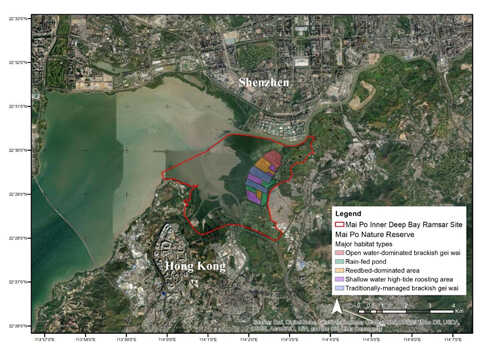 Aerial illustration indicating the location and reach of
the Mai Po Inner Deep Bay Ramsar Site.
Source: WWF-Hong Kong
Aerial illustration indicating the location and reach of
the Mai Po Inner Deep Bay Ramsar Site.
Source: WWF-Hong Kong
The Ramsar site is a place of incredible biodiversity. The Mai Po Nature Reserve alone is home to 25 different types of mammals, including Eurasian Otters (Lutra lutra), Small Asian Mongooses (Herpestes javanicus), and Leopard Cats (Prionailurus bengalensis), 21 species of reptiles, and over 1,000 kinds of invertebrates.
But by far the most numerous and easily seen taxa are the birds, representing over 415 species and supported by a diverse mix of habitats: mudflats, reedbeds, brackish-water gei wais, and mangroves.
It is Inner Deep Bay and Mai Po’s importance for these birds that has helped spur measures to protect the wetlands. The Ramsar site supports up to 80,000 wintering waterbirds and another 20,000-30,000 that pass through during their annual migration along what is known as the East Asian-Australasian Flyway in spring and autumn, to feed and rest within the area, according to WWF-Hong Kong.
Some, such as the Black-faced Spoonbill (Platalea minor), spend all winter there. Others, for example, the critically endangered Spoon-billed Sandpiper (Calidris pygmaea), only rest en route to other destinations.
Ramsar Recognition
The Mai Po Inner Deep Bay Ramsar Site was designated in 1995 and is now one of more than 2,400 such areas worldwide. They also include 63 in Mainland China, which has added as many as seven new sites in the past two years, indicative of increased awareness of the need to protect major wetlands.
The Ramsar Convention on Wetlands of International Importance was signed at Ramsar, Iran, in 1971. Its mission is: “The conservation and wise use of all wetlands through local and national actions and international cooperation, as a contribution towards achieving sustainable development throughout the world.”
The Convention enables the designation of important wetlands – often known simply as Ramsar sites – providing they meet certain criteria. These include regularly supporting 20,000 or more waterbirds; or regularly supporting at least one per cent of the regional population of a waterbird species.
At the Mai Po Inner Deep Bay Ramsar Site, not one but 27 bird species annually occur in numbers exceeding one per cent of their populations in East Asia. Thirteen of these species are classified as globally threatened, including Saunder’s Gull (Chroicocephalus saundersi) and Nordmann's Greenshank (Ringa guttife).
China is due to host the 14th Meeting of the Conference of the Contracting Parties to the Ramsar Convention on Wetlands (COP14) in Wuhan this November.
Protecting Hong Kong’s Ramsar site habitats for maximum ecological value are its two main managers: the Hong Kong government’s Agriculture, Fisheries and Conservation Department (AFCD), which has overall responsibility, and WWF-Hong Kong, which manages the Mai Po Nature Reserve and an area of the Inner Deep Bay mudflats.
“Wetlands are very dynamic ecosystems. If you leave them on their own, they will eventually succeed into marshland and then dry land. So they have to be managed,” Dr Eric Wikramanayake, Director of Wildlife and Wetlands at WWF-Hong Kong, said of the natural process of succession of wet to dry land.
The history of the area is rooted in how the wetlands have been managed over the centuries, with agriculture, aquaculture, algae collection, and salt production among their major uses.
The gei wais – the signature habitat of the wetlands – were in fact not built until after the Second World War, when mainland immigrants brought with them their traditional techniques for rearing shrimps. Sluice gates were installed to allow seawater from the bay to flow into the ponds with the tide, bringing in shrimp and fish fry, which were raised to maturity in the enclosed areas.
As the mangrove-fringed gei wais attracted more birds, this remote area became a location for birdwatchers seeking species that were hard to find elsewhere.
In the 1970s, fears that the planned construction of the Fairview Park housing estate could threaten the marshes prompted birdwatchers Mike Webster and Fred Hechtel to petition the government to protect the area, which was declared a Site of Special Scientific Interest.
Soon afterwards, conservationists joined together to establish a local office of what was then named the World Wildlife Fund. That office, now WWF-Hong Kong, decided that rather than raise funds for the headquarters in Switzerland, they should assist projects in Hong Kong, the first of which was managing Mai Po Wildlife Education Centre and Nature Reserve, with the support of AFCD.
In autumn 1983, with initial funding from the Hong Kong Jockey Club, WWF-Hong Kong started to develop and manage the Mai Po reserve, including the building of a visitor information centre and concrete footpath. The first guided visits for schools and the public were organised in 1985. Other early developments encompassed the innovative floating boardwalk, leading along a creek through a belt of mangroves to a viewing hide overlooking mudflats along the southern shore of Deep Bay, outside the reserve but also now looked after by WWF-Hong Kong.
In addition to the Hong Kong government’s listing of Inner Deep Bay under the Ramsar Convention in 1995, it was designated internationally as an Important Bird Area in 2004.
Under the Convention, Hong Kong must strive for wise use of the wetlands, defined as “the maintenance of their ecological character, achieved through the implementation of ecosystem approaches, within the context of sustainable development”.
As such, fish ponds around Mai Po could continue operating, while making it harder for developers to obtain permission to transform areas into housing developments. But in itself, the Ramsar listing does not secure the future of the wetlands, which are always changing, and require small-scale and large-scale management.
On a day-to-day level, management involves a raft of maintenance measures to retain favourable habitats for birds and other wildlife, as Fion Cheung, Flyway Planning and Training Manager of WWF-Hong Kong’s Mai Po team, noted.
Such activities can range from controlling vegetation by enlisting the help of buffalos to keep reeds and grass under control to the provision of feed to attract more wild ducks, when the numbers flying in for the winter inexplicably declined in recent years, as well as monitoring the numbers of birds.
The reserve also has some of the last of Hong Kong’s functioning gei wais. These ponds are drained and cleaned, and water levels managed, for the benefit of the birds that enjoy rich pickings as water is lowered and sediment revealed.
Meanwhile, the nature reserve overall is guided by the Mai Po Management Committee. This includes government officials, wetland management experts, environmental scientists across Hong Kong’s universities, and members of other conservation NGOs, and is chaired by Emeritus Professor David Dudgeon, of the University of Hong Kong’s School of Biological Sciences.
“The foresight of the founders was very considerable, especially given the extent of coastal development elsewhere in southern and eastern China,” Dudgeon said.
Today, as well as its role as a wildlife haven, the Mai Po Nature Reserve and Ramsar site play a significant role in conservation education for visiting students and the public.
Further afield, the areas serve as beacons for wetland management practice and training for the wider region, enabling Hong Kong to soar in promoting better conservation practices beyond its shores.
The Mai Po team faces a continuous challenge to protect the wetlands, from short-term risks such as feral dogs and even drones that disturb and endanger birds, to the longer term impact of climate change, expected to prompt radical shifts in the ecosystems as sea levels and storm surges rise.
“We need to think about how to build an adaptation strategy to ensure that the wetlands in Mai Po and [Deep Bay] are conserved for the future. We need to be much more proactive and forward looking in our approach,” Wikramanayake said.
“If you look at the climate change trajectories and what’s happening in the push for land conversion, it does paint a pessimistic picture. But we have to be optimistic.”
Reactivated Fish Ponds Feed Into Sustainability
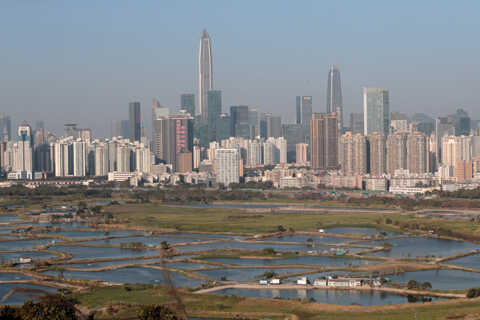 Fish ponds at Ma Tso Lung, with a backdrop of Shenzhen.
Photo: John Holmes
Fish ponds at Ma Tso Lung, with a backdrop of Shenzhen.
Photo: John Holmes
The birds of Mai Po know no borders and venture frequently to nearby fish ponds and wetland areas for their food. How these areas are managed is hence of critical importance to them.
The Hong Kong Bird Watching Society (HKBWS), WWF-Hong Kong, and ecologists are promoting the reactivation of abandoned fish ponds and use of traditional and sustainable aquaculture methods, with government support. “Fish ponds have functions for the conservation of waterbirds, especially in the winter when the water level is drained down and they can feed on the fish,” Wen Xianji, Director of Mai Po Nature Reserve and Flyway Programme, said.
However, many farms in the northwestern New Territories have been abandoned, due to growing competition from Mainland China fish imports. This creates the prospect that they will cease to be productive feeding grounds for migratory birds, and eventually become dry land, he said.
The transformation, in turn, would exempt them from the protections of Hong Kong’s no-net-loss-of-wetlands policy that largely restricts development in the Inner Deep Bay area, Wen explained.
Yu Yat-tung, Senior Research Manager of HKBWS, is also concerned by changes in fish farming, including some large ponds being changed into smaller ponds that are more easily managed but support fewer birds.
The society is trying to redress the situation through a fish pond project funded by the Hong Kong government’s Environment and Conservation Fund since 2012. The initiative involves management agreements with fish pond operators to adopt the traditional practice of draining ponds on an annual basis, leaving the water low for a period for the birds to feed from it. After sludge is removed, the ponds are refilled.
Yu said that as a result the number of breeding egrets has increased. It also benefits other wading birds, such as the Black-winged Stilts and plovers. “We tell the fish farmers ‘Don’t leave the big fish in the water – you want those for the market’,” he said. Then, birds can flock in for a feast of easily reached smaller fish.
“But even though they do drain down, there may be fewer fish in the pond, because of changes in fish farm practices,” he said. If predatory fish, such as groupers, were being raised, they would be the only fish left. Grey Mullet, which can be fed on fish pellets, leave other fish untouched.
In the first three or four years, fish farmers were reluctant to take on the extra work involved. However, views are now shifting, Yu said. “We are seeing people start to change their attitudes towards us, realising it’s not just either money, or conservation – they can do both. Some fish farmers know the landscape must be kept, the water must be clear, for good fish harvests.”
In addition, Professor Wong Ming-hung (Croucher Senior Research Fellowship 1997), Advisor to the Department of Science and Environmental Studies, Education University of Hong Kong, and his team have developed a polyculture approach to feeding fish, using pellets made from recycled food waste, in a separate project supported by the Environment and Conservation Fund and Agriculture, Fisheries and Conservation Department. This reduces the pollution of using untreated food waste and can help maintain the balance of species in the ponds, according to Wong.
Meanwhile, research conducted by WWF-Hong Kong indicates that maintaining healthy fish ponds is important for Mai Po’s resilience to climate change. Not only do wetlands sequester carbon, but according to projections, the intertidal mudflats and other near-shore habitats will eventually be flooded by rising sea levels, depriving shorebirds of their feeding and roosting places.
Inland fish ponds could be converted into replacement habitats for them, making their protection all the more important, according to the research team led by Dr Eric Wikramanayake, Director of Wildlife and Wetlands at WWF-Hong Kong.
The organisation is now exploring innovative ways to boost the economic value of fish ponds, such as installing floating solar panels or floating agriculture mats on about 20 per cent of their surface areas.
The hope is that doing so will encourage farmers and their descendants to maintain ownership of the ponds and to continue operating them in ways that are good for conservation, and migratory birds.
Taking the measure of pollution
One of the major challenges faced by the Mai Po Inner Deep Bay Ramsar Site and other Hong Kong wetlands is pollution.
While Inner Deep Bay is a water control zone, with high standards set for sewage treatment, and bans on discharges of livestock waste, pollution is still an issue, given the wetlands lie at the southern tip of the Pearl River and mouth of the Shenzhen River – leaving them at the receiving end of contaminants flowing from Shenzhen and other densely populated cities in the Pearl River Delta.
The mudflats and marshes, which act as a sink for heavy metals, are experiencing an increase in environmental contamination due to unauthorised development activities, illegal domestic wastewater, and livestock farming, according to Professor Wong Ming-hung (Croucher Senior Research Fellowship 1997).
Wong has led research for the Hong Kong government’s Drainage Services Department that involved toxicological testing and ecological risk assessment of the Ramsar site, with the assessment based on sampling of sediment, shrimp, and fish. The study was published in Science of the Total Environment in 2021.
As part of the research, two sewage treatment plants, at Yuen Long on the Shan Pui River and Shek Wu Hui on the Ng Tung River, were found to be effective in removing heavy metals before they reached Deep Bay, the latter via the Shenzhen River. They were not a risk to fish, crustaceans, and algae within the food web.
However, sediment remains contaminated from uncontrolled discharges from industries such as electroplating and electronics before waste disposal regulations came into effect in the early 1990s, and other sources today from the two rivers where industrial and other effluent may be illegally discharged.
The study reported that heavy metals were of particular concern for the Common Sandpiper (Actitis hypoleucos), based on analysis of the food it consumed.
The Common Sandpiper was more at risk than the Grey Heron (Ardea cinerea), for example, because of the former’s smaller body size and its habit of eating smaller organisms and sediment together, according to Dr Brian Man Yu-bon, Assistant Professor in the Department of Science and Environmental Studies at EdUHK, who worked with Wong on the project. “If they just ate the fish and shrimp, there would be less of a problem,” he said.
This was the case even though the sandpiper mainly feeds on shrimp in the gei wai ponds that were found to have less concentrations of the contaminants.
The Grey Heron, which feeds on fish and shrimps around the rivers, was assessed to be less affected. However, the team concluded that other juvenile and smaller birds could be at risk from health problems caused by copper and lead they found in the environment, and ingested with sediment.
The risks could be worse when other pollutants, such as polycyclic aromatic hydrocarbon (PAH) and dichloro-diphenyl-trichloroethane (DDT), are taken into account, according to the scientists. Such chemicals may have caused the greater capacity to induce mutations (mutagenicity) that were identified in sediment in the Ng Tung River near Shenzhen.
The researchers proposed tighter pollution monitoring and control of the rivers upstream of the Ramsar site as potential ways to mitigate the situation.
Local Decline
Where is this iconic wader headed?
Fewer Black-faced Spoonbills (Platalea minor) are now seen in Hong Kong even though numbers are increasing in other locations. Photo: John Holmes
It is a species that is an icon of Mai Po Nature Reserve and a testament to the conservation value of the Mai Po Inner Deep Bay Ramsar Site in the northwestern New Territories. Yet annual surveys show that many Black-faced Spoonbills (Platalea minor) are now shunning Hong Kong, despite significant increases in the numbers of this endangered wading bird elsewhere around the region.
Less than 30 years ago, nobody knew the Black-faced Spoonbill, which spends its winters around intertidal mudflats on the eastern fringes of Asia, was endangered. In the 1990s, it was assumed to be a common species, similar to other spoonbills.
But Hong Kong-based birdwatcher, Peter Kennerley, wasn’t so sure. On compiling records from across the bird’s range, he found there were only 288 left in the world, and Deep Bay was a vital wintering site for them.
This prompted the listing of the Black-faced Spoonbill as a globally endangered species by the International Union for Conservation of Nature (IUCN), and influenced the designation of Mai Po Inner Deep Bay as a protected Ramsar site in 1995, making it one of the only government-protected wetlands within the bird’s range at the time.
The listing also prompted greater research on spoonbills, which in turn helped to inform WWF-Hong Kong, the conservation group that manages Mai Po Nature Reserve, on how best to manage the habitat to encourage these birds.
In addition, international conservation efforts within the East Asian-Australasian Flyway Partnership, including key roles by WWF-Hong Kong and the Hong Kong Bird Watching Society (HKBWS), have paid off. The global population of the Black-faced Spoonbill has risen an average nine per cent annually since 1994 to a record 5,222 individuals, as revealed in the partnership’s 2021 survey across more than 100 sites in East Asia.
“The number of Black-faced Spoonbills worldwide has reached a new high,” said Yu Yat-tung, Senior Research Manager of HKBWS, which took the lead in organising the survey. “The numbers in Japan, Vietnam, and Taiwan have even broken records, indicating the success in regional conservation.
“However, we are concerned about the continuous decline in Hong Kong. The story behind this must be related to the health of the ecosystem,” he said, referring to the damaging impact of urban development and loss of mudflats and fish ponds in the wider Deep Bay area.
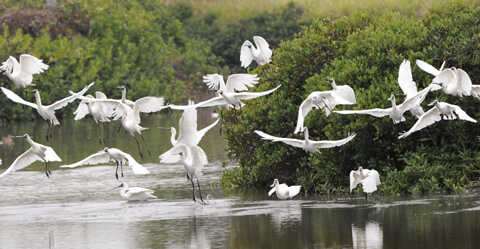 Coming home to roost in Mai Po.
Photo: Wei Shyy
Coming home to roost in Mai Po.
Photo: Wei Shyy
Taiwan is now the most popular wintering destination, with a total of 3,132 identified in the 2021 survey, 60 per cent of the global total. This involved an additional 347 individuals, a 12.5 per cent increase over 2020.
Yet the numbers in Deep Bay, including Hong Kong and the Shenzhen side, declined by almost seven per cent, to 336 individuals, and have dropped by 15 per cent in the last seven years. “Hong Kong set up an example for other wetland areas in the region,” Yu said. “Some followed and learned from our experience. Now they have better results than us.”
Yu, who also coordinates the Black-faced Spoonbill Working Group for the East Asian-Australasian Flyway Partnership, is proud of the success beyond Hong Kong, with Mai Po Nature Reserve doing much to support the spoonbills. “It is an important roosting site,” he said.
However, the birds also need to feed outside the reserve, including the mudflats – their natural feeding site that is replenished with shrimp and fish with each tide – and human-related wetlands, including fish ponds.
Dr Sung Yik-hei, Assistant Professor of the Science Unit, Lingnan University, has collaborated with Yu in analysing the population trends, in a paper published in Bird Conservation International in 2018.
Sung’s team found population increases were more pronounced in protected sites and areas with low levels of human disturbance, indicating that control of such disturbance is crucial for conservation of this species.
While the behaviour of the bird, which breeds on the west coast of North Korea, is well documented, Yu said, more research is needed to understand its interaction with the environment.
Dr Simon Sin Yung-wah (Oxford Croucher Scholarship 2008), Assistant Professor at the University of Hong Kong’s School of Biological Sciences, has provided some of this further understanding through an investigation of the diet of Black-faced Spoonbills.
The study was done through DNA analysis of about 100 spoonbill faecal samples gathered from different roosting groups, in Mai Po Nature Reserve and Lok Ma Chau.
The birds, which use their long spoon-shaped bills to scoop for prey, were found to enjoy a diverse diet of fish and crustaceans common in the different habitats they use – both mudflats and fish ponds.
Diet was found to vary between the groups, indicating that individuals within a roosting group tended to forage together. “We can provide baseline information on their foraging ecology, so we know the fish they feed on,” Sin said.
The forthcoming publication could inform future monitoring of the abundance and availability of their major prey, and comparison between habitats within and beyond Hong Kong.
Regional Reach
Maintaining The Flyway
On the move: shorebirds take off from Inner Deep Bay mudflats. Photo: Katherine Forestier
As coastal wetlands come under threat from human activities, Hong Kong’s role as a wintering ground or stopover for over 80,000 migratory birds each year is increasingly important.
Stretching 13,000 kilometres from the Arctic Circle to Australia and New Zealand, the East Asian-Australasian Flyway (EAAF) is a superhighway for migratory birds.
Each year, over 50 million avian travellers, mainly waterbirds, fly between a network of coastal wetlands where they rest, feed, and sometimes breed, with Hong Kong an important stopover or wintering ground mid-way.
This migration is one of nature’s great evolutionary wonders, with the EAAF one of nine major north-south flyways around the world.
Some birds, such as the Bar-tailed Godwit (Limosa lapponica), a wader that feeds in shallow waters, can fly all the way from their summer breeding grounds in Alaska to New Zealand with barely a rest, though some may be seen feeding in the Deep Bay mudflats on their way, particularly in spring.
But without an interconnected chain of wetlands, which includes the Mai Po Inner Deep Bay Ramsar Site and other destinations in Hong Kong, many would not be able to complete their journeys, or be seen in vast flocks filling the skies and mudflats between northwestern Hong Kong and Shenzhen.
While the Hong Kong stopover site is protected through WWF-Hong Kong and Agriculture, Fisheries and Conservation Department (AFCD) management of the Mai Po Nature Reserve and Ramsar site stretching into Inner Deep Bay, the interconnections are under threat as other coastal wetlands along the flyway are lost to urban development.
Hunting, pollution, and climate change are also taking their toll on bird species.
According to an International Union for Conservation of Nature (IUCN) report, published in 2012, more than 80 per cent of East and Southeast Asia’s wetlands were already classified as threatened from being converted, fragmented, and degraded by anthropogenic drivers. And this had resulted in population declines in 88 per cent of waterbird species using the flyway.
Governments along with intergovernmental agencies and NGOs and other organisations came together in 2006 to try to protect important habitats, through the voluntary East Asian-Australasian Flyway Partnership.
WWF-Hong Kong was among them, and in 2020 it launched the Asian Flyways Initiative to coordinate wetland conservation projects with its partners.
Why Fly?
Avian migration is among the most extraordinary feats of the natural world. Many birds will fly thousands of kilometres to find the best habitats and ecological conditions for feeding, breeding and raising their young.
Birds using the East Asian-Australasian Flyway usually breed in the northern hemisphere during its summer, taking advantage of more plentiful food and longer days for foraging for their young. When conditions at their breeding sites deteriorate – as days shorten and winter looms – they set out for warmer climes in the south to wintering sites such as Mai Po-Inner Deep Bay, or as far as Australia and New Zealand.
Migratory birds have evolved to fly fast and across long distances, and to push themselves to the limits of their endurance, according to the World Migratory Bird Day (WMBD) annual international awareness campaign, which normally takes place on the second Saturday of May and October.
The birds can navigate with pinpoint accuracy. How they find their way along migratory routes is not fully understood. Studies have suggested they orientate by the sun during the day, and stars at night, and by geomagnetic fields. Some species can detect polarised light, which many migrating birds may use for navigation at night, according to the awareness campaign.
Research by ecologists and networks of ornithologists plays an important role in broadening understanding of the EAAF, the behaviour of birds, and the threats they and their habitats face.
Hong Kong has contributed extensively to this knowledge. Systematic surveys by trained Hong Kong Bird Watching Society (HKBWS) members, along with WWF staff, have been conducted in Mai Po since 1998, with funding from the Hong Kong government. Monthly winter counts take place during high tide, when birds have retreated to their roosting sites in and around Mai Po’s network of fish ponds, or gei wais.
This is supplemented by bird-ringing programmes, and some satellite tracking, to learn more about their migrations and the habitats they rely on.
Xianji Wen, Director of Mai Po Nature Reserve and Flyway Programme, said: “Every year in the winter, HKBWS records around 60,000 to 80,000 wintering birds here, and every spring and autumn another 20,000 to 30,000 passage migrants will pass through Mai Po and Deep Bay.”
However, the composition of the birds in terms of numbers and species was changing, he said. “Some are more common than before but most of them are declining.”
The Hong Kong surveys, along with those carried out elsewhere along the China coast since 2005, have enabled researchers to analyse changing trends among birds in the Deep Bay area, and identify threats there and elsewhere along the flyway where conservation efforts are needed.
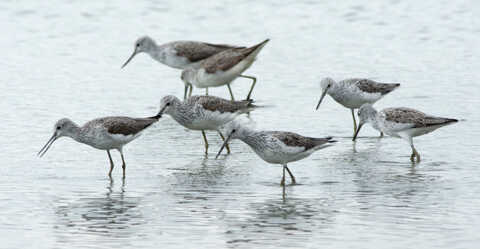 Research has shown Common Greenshank (Tringa nebularia) wintering in Deep Bay to be increasing.
Photo: Katherine Forestier
Research has shown Common Greenshank (Tringa nebularia) wintering in Deep Bay to be increasing.
Photo: Katherine Forestier
Research, published in 2021 and led by Dr Sung Yik-hei, Assistant Professor of the Science Unit, Lingnan University, found that of the 42 waterbird species wintering in the Deep Bay area between 1998 and 2017 and included in their study, 12 declined, while nine had increased significantly.
Declining birds, such as the Dalmatian Pelican (Pelecanus crispus), Common Sandpiper (Actitis hypoleucos), Green Sandpiper (Tringa ochropus), and four species of duck, were found to co-relate with flyers reliant on the Yellow Sea, and of larger size. Meanwhile, those that breed in southern Siberia decreased more than those breeding in East Asia.
“There is a consensus that species dependent on the Yellow Sea area are in greater trouble,” Sung said. “There is probably not a single cause – pollution, habitat loss and degradation, and invasive species, among them.” Shooting wildfowl for food is a further issue.
“Ducks have experienced a drastic decline,” he said. Thousands of the Common Shelduck (Tadorna tadorna), for instance, used to be seen in Mai Po. “Now it is one or two.”
Yu Yat-tung, Senior Research Manager at the Hong Kong Bird Watching Society, said that the EAAF Partnership was making a difference, through the exchange of information and practices. “We have information that the situation in the Yellow Sea has improved a little in the past few years,” he said. “We must acknowledge the efforts of governments. Many are working to save coastal wetlands.”
Sung and his co-authors point out that increases in birds such as the Common Greenshank (Tringa nebularia), Great Knot (Calidris tenuirostris), and Black-winged Stilt (Himantopus himantopus) in Deep Bay are not necessarily due to an overall rise but changing habitat use: more may come to Deep Bay as other wetland habitats in the area are being lost.
Wen and other conservationists are concerned about the birds that are now less frequently seen in Deep Bay. “The last record of Dalmatian Pelicans [Pelecanus crispus] was about 10 years ago. Every year, we would get about 10 individuals wintering in Deep Bay. But right now, it is very rare,” he said.
Recent research, based on field observation records of 57 species, found that less than 10 per cent of the inland and coastal areas used by waterbirds on the flyway are protected, and only five per cent of the areas with the highest 10 per cent in species richness.
This paper, first authored by Dr Li Jia, then a PhD student at the University of Hong Kong (HKU), with Dr Alice Hughes, Associate Professor, Centre for Integrative Conservation, Chinese Academy of Sciences, and Li’s supervisor, Emeritus Professor David Dudgeon, Chair Professor of Ecology and Biodiversity at HKU, concludes that the richness of the EAAF may have been underestimated, and identified a need to increase the protected areas. It was published in 2019 in the PLOS ONE science journal.
Dudgeon said: “Maybe the loss of sites to coastal development along the flyway has meant that birds are now using suboptimal sites that they might not have used before.” A better system of protecting sites that birds use along the flyway was needed.
“We also need to know how many of the sites being used will be lost to rising sea levels or planned coastal reclamation,” he added.
Hong Kong expertise is playing an important role not just in protecting Mai Po, but other wetland sites along the flyway. For example, WWF-Hong Kong has run the Wetland Management Training Programme since 1990 for wetland managers from across the flyway, including Mainland China. This covers techniques such as invasive plant removal, water level management for wading birds, and how to make target-based conservation plans, Wen explained. The programme also offers courses in environmental education and eco-tours, which are seen as crucial for gaining the community support needed for successful conservation.
To date, WWF-Hong Kong has trained over 5,000 people, some of whom have gone on to senior management positions. This has had real, tangible results for conservation, as several of these people have been inspired to help create new wetland reserves, Wen said.
For example, a group of Thai wetland managers who attended the WWF programme set up Bang Pu Nature Education Centre, a wetland conservation area near Bangkok that draws heavily from Mai Po’s example.
Several Mai Po-inspired reserves have also been established in the Greater China area, namely Quanzhou Bay Estuary Wetland Nature Reserve and Minjiang Estuary National Nature Reserve in Fujian Province, Hebei Luannan Nanpu Zuidong Provincial Wetland Park, as well as Guandu Nature Park in Taiwan, according to Wen.
Others have modified their strategies based on Mai Po’s approach, benefiting species such as the Black-faced Spoonbill (Platalea minor).
Wen said: “Other wetlands in the Greater Bay area also seem to have taken a cue from Mai Po for their management strategies and contributed to the recovery of the Black-faced Spoonbill. So in that way, Mai Po has contributed to conservation in other parts.”
WWF is leading further action to conserve wetlands, through its Asian Flyways Initiative. This aims to empower greater cooperation between all EAAF regions, through training and advice for wetland managers, and identifying important sites where greater protection for birds is needed.
Travel and funding restrictions due to the COVID-19 pandemic have limited the AFI’s impact in its first year. But that is not clipping their wings.
“We are regrouping now and adapting,” Dr Eric Wikramanayake, Director of Wildlife and Wetlands at WWF-Hong Kong, said. “We have been able to mobilise network support across AFI countries and are forming teams – both regional and national – to identify priority spaces and develop project proposals with innovative strategies such as nature-based solutions.
“So we are moving the needle, given the constraints, albeit slowly,” he said.
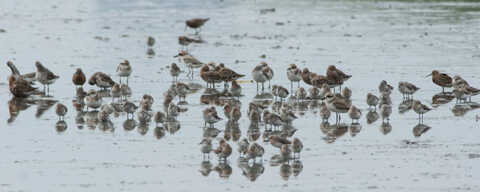 Common Greenshank, Eurasian Curlew, Greater Sand Plover,
Curlew Sandpiper, and Red-necked Stint gather on the Inner
Deep Bay mudflats. Photo: Katherine Forestier
Common Greenshank, Eurasian Curlew, Greater Sand Plover,
Curlew Sandpiper, and Red-necked Stint gather on the Inner
Deep Bay mudflats. Photo: Katherine Forestier
Tracking Waterbirds' Amazing Journey
Satellite tracking has been used to understand the migratory patterns of birds and where they stop, revealing some incredible long-haul flights, as well as where conservation efforts need to be focused.
WWF-Hong Kong and the Hong Kong Waterbirds Ringing Group (HKWRG) teamed up with researchers in Mainland China to undertake the first satellite tracking of migratory shore birds from Mai Po that were using the East Asian-Australasian Flyway. This is the route where birds travel from as far south as Australia and New Zealand to summer breeding grounds in Northeast Asia, and as far north as the Arctic Circle, and vice versa.
In a collaboration with the Chinese Academy of Sciences’ Research Centre for Eco-environmental Sciences, between November 2018 and January 2019, five Grey Plovers (Pluvialis squatarola) were tagged in the Mai Po Nature Reserve with satellite tracking devices and banded with unique leg flags, approved by the Hong Kong government’s Agriculture, Fisheries and Conservation Department.
Three of the birds – AU, BD and BA – from three different populations, successfully reached their Arctic breeding grounds in the summer of 2019.
The tracking revealed Grey Plover BA left Mai Po on 27 March 2019 and arrived in Shandong Province on 30 March 2019, where it stayed for nearly two months before reaching its breeding ground on the northeastern coast of Russia on 1 June 2019.
After breeding, the bird departed from Russia on 5 August 2019, arriving back in Mai Po on 19 November 2019. Its signal disappeared later that month.
Separately, the Hong Kong team participated in a project with the Ministry of Education (MOE) Key Laboratory for Biodiversity Science and Ecological Engineering at Fudan University in Shanghai. Trackers were deployed on eight Whimbrels (Numenius phaeopus) in Mai Po in October 2018.
The adult Whimbrel AM completed an astonishing journey. After departing Mai Po on 24 October 2018, it took about three days to fly to Brunei Bay and stayed there for a month before heading to Australia, spending about four months in its wintering site in Western Australia. It headed north on 28 April 2019, reaching its breeding ground in Siberia on 4 June 2019, after a brief stop in Fujian and on Chongming Island in Shanghai, and staging in Jilin.
After breeding, it started the southern migration on 6 August 2019, tracking a similar route as its northbound journey. It came back to Mai Po on 24 September 2019, heading south two days later. The signal was lost when it reached the island of Borneo in October.
Meanwhile, AN, a young Whimbrel hatched in Siberia in the summer of 2018, departed Mai Po in December 2018 and spent its first winter in the Inner Gulf of Thailand. As it was not yet sexually mature, it did not fly to the northern breeding ground that year but headed to the south to Sumatra to spend its second winter.
Normally Whimbrels become mature in the third year, but AN took a northward inland track in April 2020 to reach the breeding ground. It bred there until 6 August 2020, before heading to Laizhou Bay in Shandong Province.
Contact with that bird was lost in September 2020. The team does not know whether this was due to AN’s death or the demise of the tracking device.
One of the Whimbrels, R5, continues to be tracked on its journeys, passing through Mai Po in March 2021 and near Shanghai in late May.
“This is beyond my expectation,” said Katherine Leung, Volunteer Co-ordinator of HKWRG, referring to the longevity of the tracking device. The device, made in Mainland China and fitted via a leg-loop harness, was expected to work for two years and seven months, she said.
Whimbrels can live as long as 24 years, as recorded by the British Trust for Ornithology, based on the recapture of a ringed individual.
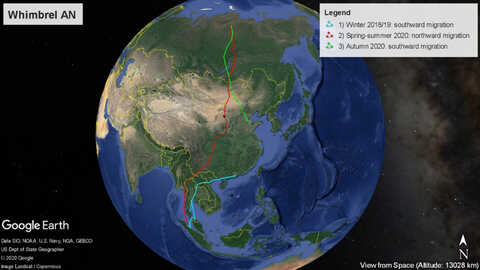 Flight paths of young Whimbrel AN. Source: WWF-Hong
Kong
Flight paths of young Whimbrel AN. Source: WWF-Hong
Kong
“These are the first migratory shorebirds ever tracked from Hong Kong,” she added. Over the past decade, knowledge about the migration of Hong Kong shorebirds had been gained from resighting records of leg flags elsewhere.
“But tracking revealed much more information, including behaviour and habitat use within Deep Bay, migration route, and strategies,” Leung said.
Dr Xianji Wen, Director of Mai Po Nature Reserve and Flyway Programme, said: “The project results reflected the fidelity of migratory waterbirds to a place. Our team must work hard in providing a suitable habitat in Mai Po for them so that they can winter here safely and comfortably or take a good rest here before continuing their long journeys.”
 Great Knot (Calidris tenuirostris), an endangered
shorebird, at Mai Po in 2014. Photo: John Holmes
Great Knot (Calidris tenuirostris), an endangered
shorebird, at Mai Po in 2014. Photo: John Holmes
Hong Kong researchers have been involved in another satellite tracking project, to identify coastal sites of conservation importance on the flyway routes.
Between 2015 and 2017 an international team, including former University of Hong Kong student Ginny Chan Ying-chi, tracked the migration of 32 Great Knots (Calidris tenuirostris), an endangered shorebird widely distributed along the flyway and dependent on intertidal habitats for foraging during the non‐breeding season.
The birds were captured in Roebuck Bay in northwest Australia, fitted with tiny transmitters, released and tracked on their journeys to the northeast coast of Russia, north of the Sea of Okhotsk, their summer breeding ground.
From tracking the Great Knots, 92 stopping sites along the Flyway were identified – many more than expected, with 63 per cent not known as important shorebird sites before the study, published in 2019 in the Journal of Applied Ecology. Chan, who is completing her PhD at the University of Groningen and based in the Royal Netherlands Institute for Sea Research (NIOZ), was the lead author, working with the Global Flyway Network.
One of the tracked Great Knots stopped at Mai Po, between 30 March 30 and 7 April 2016, and was identified among a flock of 278 of these birds counted by the HKBWS that year.
In April this year, HKBWS fitted satellite devices to two more Great Knots. By late May one had reached Russia, the other the Yellow Sea area.
Yu Yat-tung, Senior Research Manager at HKBWS, said: “From tracking, we learn much more about birds’ migrations. Observation on the ground is important, but one-dimensional. We need both.” More birds would be tracked in the autumn, he said.
Bird ringing was less expensive, but slow as a source of gathering data when birds were later spotted and recaptured.
Chan’s team explained that the satellite tracking could inform on‐the-ground surveys at lesser-known sites to collect information on bird numbers and habitat characteristics. This could help NGOs and governments recognise and protect the habitats, Chan said.
Biodiversity hotspot
Mangrove Ecosystems' Struggle to Remain
Kandelia obovata, one of the resilient species of mangrove remaining in Hong Kong. Photo: Stefano Cannicci
Research is highlighting the novel and numerous species that rely on Hong Kong’s last mangrove stands as the trees’ battle to survive the changes to their coastline habitats amid urban development and pollution
Not many decades ago the Pearl River Delta was fringed by mangroves, but today, most of these squat, salt-tolerant trees have been lost to human development.
Yet it is Hong Kong that is the refuge for the last major remaining functioning systems in the area, according to researchers.
Mangroves, found around sheltered tropical and subtropical coastlines, are sandwiched between land and sea, their roots bathed in tidal waters. And research on the many ecoservices they provide has highlighted the importance of stemming the tide of their destruction.
Dr Stefano Cannicci, Associate Director of the Swire Institute of Marine Science at the University of Hong Kong (HKU), has taken the measure of these ecological “sentinels”, having led the most comprehensive survey conducted in Hong Kong of their distribution and the fauna that lives among them.
This survey, completed in 2019, covered Hong Kong’s 59 surviving mangrove stands, distributed across 510 hectares in the coastal areas of Deep Bay, Sai Kung, Northeast New Territories, Tolo Harbour, Lantau Island, and Hong Kong Island. The Mai Po area hosts the largest of the forests.
While Hong Kong, like the rest of southern China, has lost most of its mangrove cover to reclamation and development, Cannicci describes what is left as “truly resilient”, despite the stresses and threats it faces from pollution and invasive species.
His team surveyed the distribution of the eight “true” mangrove species, that is halophytes that grow in water or soil of high salinity as opposed to “mangrove associates” that have some salt tolerance. They included the three most abundant – Kandelia obovata, Avicennia marina, and Aegiceras corniculatum – along with Acrostichum aureum, Excoecaria agallocha, Heritiera litoralis, Bruguiera gymnorrhiza, and Lumnitzera racemosa.
The two-year project, funded by the Hong Kong government’s Environment and Conservation Fund, found an exceptional range of creatures, including several species new to science.
The team identified 52 species of brachyuran crabs, one of the highest diversities of mangrove crabs in the world, and including six new records for Hong Kong. As many as 42 species of gastropods were found, including one new local record, and 329 species of insects, of which eight were new to science and 42 new to Hong Kong.
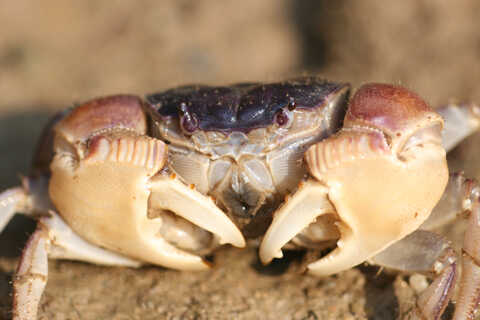
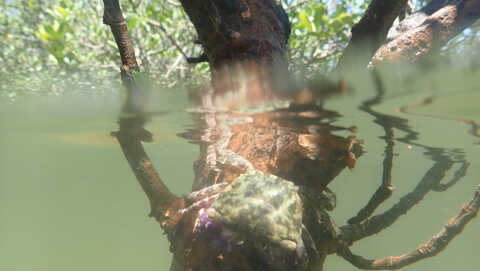
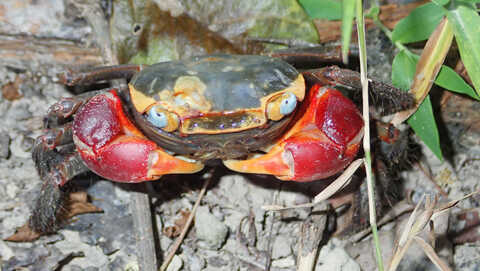
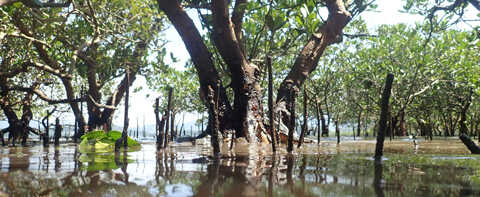
Among the crabs, the poorly known Sesarma (Holometopus) tangi found in Hong Kong was revealed to have unique features distinguishing it from the Neosarmatium genus, with which it had previously been identified. The team concluded it was worthy of a new genus, which in a paper published in 2020 in the Journal of Crustacean Biology they named Sinosesarma.
“The differences are linked to the sculptures and ridges found on the claws, which are of importance for reproduction, since males attract females rubbing those ridges to produce sounds,” Cannicci said.
Dr Benoit Guenard, Associate Professor at HKU’s School of Biological Sciences, led the insect investigations. Among the insects new to science were two new species of long-legged flies, one now named Raphium canniccii, after Cannicci, in a paper published in 2019 in the European Journal of Taxonomy.
So far, the team has DNA barcoded 58 and 43 species of brachyuran crabs and gastropods, respectively. “This is the most complete and updated list of DNA sequences ever obtained for Hong Kong mangrove fauna,” they wrote in their report.
The DNA is preserved in the laboratories of the School of Biological Sciences at HKU and the sequences will be shared online.
A collection of keystone mangrove invertebrates, such as micro-mangrove climbing crab Haberma tingkok, a climbing crab endemic to Hong Kong, and marsh crab Orisarma neglectum, which was known only from wetlands of East China and is important in terms of the bioturbation of sediment, will be added to the new Biodiversity Centre due to be opened by SWIMS this year as part of its expanded facilities.
While the mudflats, rather than mangroves, are the major feeding grounds for the flocks of wading birds seen in Inner Deep Bay, the trees still form a vital part of the ecosystem supporting the East Asian-Australasian Flyway migratory route, by nourishing the birds’ food supplies. In addition, they shelter egrets and herons, among others.
“The worms and bivalves live on these depositions – the nutrients and decaying leaves washed on to the mudflats,” Cannicci said. They also filter the water of pollutants.
“The good thing in Hong Kong is no one is exploiting them,” said Cannicci, who moved to Hong Kong in 2015. In some African countries, such as Mozambique and Kenya, where he had previously conducted research, many have been stripped for housebuilding and boats.
“The real problems in Hong Kong are pollution and coastal development,” he said. For example, plans to develop the north coast of Tolo Harbour for recreation, including a constructed beach, would change the currents and waterfront adjacent to the mangroves of Ting Kok, the second largest stand after Mai Po.
Hong Kong’s mangroves are heavily polluted, due to materials and substances ranging from construction waste and plastic bottles to microplastics and heavy metal contaminants.
Despite the protection afforded by its status as a Ramsar site (a wetland area designated to be of international importance under the Ramsar Convention), Mai Po’s mangroves are subjected to more cadmium pollution than other stands, from factories on the fringes of Deep Bay.
“The mangroves keep the heavy metal in the root so are not so affected. But the pollution is exploding in the sediment and fauna, which are also food for the birds on the flyway,” Cannicci said.
Research published in 2020 has investigated the impact of microplastics on mangrove ecosystems. From 49 crab specimens gathered from three mangrove sites, in Pak Tam Chung and Yung Shue O in the east, and Ha Pak Nai in the west, Cannicci and his team retrieved almost 3,000 microparticle pieces in the stomachs and gills of the creatures. These ranged from paint and cobalt to rayon fibres and polyethylene.
As microplastics accumulated in the food chain, birds such as plovers feeding on these crustaceans would have their feeding impaired by the quantity of the anthropomorphic debris they may consume, he said.
Cannicci works closely with fellow mangrove specialist Professor Joe Lee Shing-yip, of the Chinese University of Hong Kong’s Simon F.S. Li Marine Science Laboratory.
Lee has been visiting Mai Po since 1985, especially to study the mangroves that are the dominant feature of Inner Deep Bay, and he has witnessed increasing sedimentation within the bay area.
“The mangroves are becoming drier and drier, with less inundation by the tide,” he said. “I didn’t see a lot of understorey growth 35 years ago, but now Acanthus [Mangrove Holly] is common in the understorey, except the very seaward part.”
While sedimentation is natural, Lee said it has been exceptionally fast at Mai Po, and perhaps linked to high sediment loads as a result of urbanisation. He predicts the currently open expanse of mudflats in front of the boardwalk bird hides will be colonised soon.
The seaward edge of the mudflats won’t move, as there are navigation channels in the middle of the bay. “This means the area of inundated mudflats is becoming smaller, and smaller, and so too is the capacity of Mai Po mudflats to support shorebirds,” said Lee, who along with Cannicci is a member of the Mai Po Nature Reserve Management Committee and the International Union for Conservation of Nature (IUCN) mangrove specialist group.
Meanwhile, decades of development have been followed by some new planting of mangroves along the China coast, including Hong Kong, though these are yet to become fully functioning systems. “The mangrove area may have increased slightly in the past 10 to 20 years,” Lee said. “But the ecosystem functions of plantations with young trees are less than for more diverse, well established mangroves.”
Lee noted that as well as hosting birdlife, mangroves support offshore fisheries, as they are refuges where juvenile fish can grow, relatively safe from predation.
In Hong Kong’s mangrove communities, these ecosystem services are being reduced by the arrival of exotic mangroves such as Sonneratia, from South Asia, which was introduced in Shenzhen and elsewhere as it grows rapidly.
“Our research suggests that Sonneratia is not as beneficial as was thought,” Lee said, a concern he shares with Cannicci. “While above ground, it may grow to twice the height of our native species, if you look deeper, the native species have a lot more roots, which make them a lot better at carbon storage and protecting coastlines.”
Cannicci added that “huge efforts” were under way by government agencies such as the Agriculture, Fisheries and Conservation Department (AFCD) to remove the invasive species – a challenging task given how easy it is for the seed-carrying mangrove apples of Sonneratia to float from one area to another.
Mangroves are not only important for fauna, but humans. They are now recognised as allies in defending coastal areas from the impact of climate change, by protecting them from storm surges.
By storing carbon in their roots and sediment, they can also help reduce carbon in the atmosphere.
“They accumulate a lot of carbon in the soil. But it is dynamic storage. If you cut the forest, you release methane, which is 20 times worse than carbon in terms of greenhouse gas potential,” Cannicci said.
Sea level rise alone should not be a problem, as in theory they can re-establish themselves within the new intertidal zone. But if that space is already occupied by development such movement will not be possible.
“Mangroves are so threatened by so many things that they could be destroyed long before climate change affects them,” Cannicci said.
Croucher Ecology
Issue Four: July 2021
Overview
For Hong Kong, as elsewhere, the data is clear. Hong Kong experienced annual mean temperature increases of 0.13 degrees Celsius per decade from 1885 to 2020, with the rate speeding up from 1990, at an average 0.24 degrees Celsius a decade, according to the Hong Kong Observatory.
Under the Intergovernmental Panel on Climate Change’s most stringent trajectory, published in its Fifth Assessment Report, it was considered likely that temperature rise globally could be kept below two degrees Celsius by 2100. However, for that to be achieved, the atmospheric carbon dioxide concentration, built up mainly from the burning of fossil fuels, needed to decline from 2020. Instead, worldwide, it is continuing to rise.
In policy, Hong Kong and the Mainland have made commitments to decarbonise their economies, as agreed under the Paris Agreement on climate change, the legally binding international treaty adopted by 196 parties in December 2015 to address the crisis.
The Hong Kong Climate Action Plan 2030+, which in 2017 set a target to reduce carbon intensity by 65 to 70 per cent of 2005 levels by 2030, is being upgraded in advance of the 2021 United Nations Climate Change Conference, known as COP26, taking place in the UK in November this year with the aim to accelerate action to achieve the Paris goals.
Hong Kong’s target is now carbon neutrality by 2050, which many scientists and social scientists will be responding to in their research. With their international partners, these researchers are providing knowledge that is necessary for that ambition to be understood and achieved, mitigation implemented, and for the public to appreciate and respond to the gravity of the crisis.
The journey will not be easy but has begun, with human-induced CO2 emissions in Hong Kong having started to decline from their peak in 2014.
This final issue of the current series of the Croucher Ecology Newsletter explores some of the research, focused on the impacts of global warming, not only for human society, but other land and marine life forms that constitute an exceptional part of Hong Kong in their diversity.
Explore selected publications on climate-related risk in Hong Kong
The Croucher Foundation has been funding scientific research including research on climate change since 1979. Scientists are able to model the rapidly evolving physical risks associated with climate change with increasing accuracy and to link these physical risks with impacts including economic impact. As Hong Kong studies the risks associated with climate change, builds predictive models, and begins to identify science-based solutions, the Foundation is taking this opportunity to share some of the directly relevant research.
Land
TURNING UP THE HEAT ON HONG KONG'S BIODIVERSITY
Lightning strikes after one of Hong Kong’s increasingly hot days. Photo: Martin Williams
Scientists are striving to understand what climate change means to local ecosystems, with insects a critical element of such research
“Climate change is obvious. We’re breaking temperature records,” said meteorologist Lam Chiu-ying. The former director of the Hong Kong Observatory is among many locally based scientists and conservationists pointing to the impact this is already having on all forms of life on earth, including biodiversity in Hong Kong.
“We have plants moving upwards on slopes, and for high-altitude species, [for example], some birds, the vegetation they depend on may disappear,” said Lam, who retired in 2009 but is still highly active in conservation and environmental initiatives and advocacy, particularly related to climate change.
From March to May 2021, Hong Kong experienced the warmest spring on record, according to the Hong Kong Observatory. The first five months of the year were the second driest on record, with just over 163 millimetres of rain, 72 per cent less than the normal of around 590 millimetres. Meanwhile, extreme rainfall events have become more frequent, with the hourly rainfall record at the Hong Kong Observatory Headquarters broken several times in the past few decades, and rising from over 88 millimetres in 1886 to more than 145 millimetres in 2008.
 Annual mean temperature recorded at Hong Kong
Observatory Headquarters (1885-2020), which indicates the
overall trend of rising temperatures. No data available
from 1940 to 1946. Figure: Courtesy of the Hong Kong
Observatory of HKSAR
Annual mean temperature recorded at Hong Kong
Observatory Headquarters (1885-2020), which indicates the
overall trend of rising temperatures. No data available
from 1940 to 1946. Figure: Courtesy of the Hong Kong
Observatory of HKSAR
 Hourly rainfall record at Hong Kong Observatory
Headquarters (1885-2020), which shows the increasing
intensity and greater frequency of record-breaking
downpours in recent decades. Figure: Courtesy of the
Hong Kong Observatory of HKSAR
Hourly rainfall record at Hong Kong Observatory
Headquarters (1885-2020), which shows the increasing
intensity and greater frequency of record-breaking
downpours in recent decades. Figure: Courtesy of the
Hong Kong Observatory of HKSAR
There is also widespread concern about the impacts of sea level rises and storm surges, particularly in urban areas and the northwest New Territories. “According to the Observatory, surges that occurred once in 50 years at the beginning of this century will happen once a year by the end of this century,” Lam said.
Even without storm surges, the marshes at Deep Bay in northwest Hong Kong will be regularly inundated by tides from 2075 onwards, according to modelling by a team of researchers led by Dr Eric Wikramanayake, Director of Wildlife and Wetlands at WWF-Hong Kong.
This could severely impact the Mai Po Nature Reserve and the migratory birds of the East Asian-Australian Flyway that use it and the rest of the Mai Po Deep Bay Ramsar Site as a stopover or wintering site. The team advocates protecting nearby fish ponds from development to allow the current wetlands to recede inland, while also noting coastal wetlands are important to help protect land from sea-level rises and storm surges.
There will be winners and losers in global warming
Emeritus Professor David Dudgeon, Chair Professor of Ecology and Biodiversity at the University of Hong Kong (HKU), was part of an international collaboration of ecologists and conservation biologists that showed by 2016 global changes in climate had already impacted almost every aspect of life, from genes to entire ecosystems.
The research team, led by the University of Florida and with participation from HKU, the Chinese Academy of Sciences, and others, showed that of a total of 94 ecological processes evaluated globally, 82 per cent showed evidence of impact from climate change. Land, freshwater, and marine ecosystems and species have all been affected, and impacts on people could range from increased pests and disease outbreaks to unpredictable changes in fisheries and decreasing agriculture yields.
When the team’s paper was published in the journal Science, the lead author, Dr Brett Scheffers, of the University of Florida, summed up the effect of climate change on life on earth. “Genes are changing, species’ physiology and physical features such as body size are changing, species are moving, and we see clear signs of entire ecosystems under stress, all in response to changes in climate on land and in the ocean,” he stated.
Dudgeon said of this research: “The study was the first to document the extent of actual changes, not simply projected changes.” Subsequent studies have indicated the changes the team identified have become pervasive, he added.
Adapt or Perish
Dudgeon explained there will be winners and losers under global warming. The 2016 paper he co-authored with Scheffers showed that the geographic ranges of some species have expanded while others have contracted, and timing of breeding and other seasonal events has shifted.




“One of the things we should worry about is endemic species in Hong Kong,” said Dudgeon, of species such as Romer’s Frog (Liuixalus romeri), the Short-legged Toad (Megophrys brachykolos), and Hong Kong Paradise Fish (Macropodus hongkongensis). “We don’t know to what extent they will do well, or badly, under climate change.” They would need to make compensatory range shifts, but may not be able to do so due to intense urbanisation around their current habitats. It would then be a question of adapt or perish, he said.
Another species that Dudgeon believes could be particularly threatened by climate change is the Giant Spiny Frog (Quasipaa spinosa), which is the largest in Hong Kong, found only in south China and Vietnam, and globally endangered. “It’s a real upland species, found on Tai Mo Shan and on Sunset Peak [on Lantau],” he said. “With greater heat, they can’t move up and breed in cooler streams, so they will become extinct.”
Today, there is not yet enough information on the Giant Spiny Frog to indicate such an upwards shift, as has been found in research on amphibians in other parts of Asia.
Dudgeon is also concerned about the Hong Kong Newt (Paramesotriton hongkongensis), which was thought to be endemic but has also been found in Guangdong province. “It breeds during the colder months, and newts are temperate animals, with only one species found further south,” he said. “So it’s probably just hanging on here. If the climate becomes too warm, it may perish.”
Given the threat of extinction, Dudgeon thinks people should consider helping species that could become “trapped” in place, by translocating them to sites where they have more chance of survival. “This is pretty controversial with some conservation biologists,” he said. “But I take the view we are messing up the planet so much, we should do so. If we don’t do anything, these creatures will go extinct.”
HABITAT OR CLIMATE CHANGE
Unlike increasing temperatures or rising sea level, it is often difficult to link changes in plant and animal communities to climate change.
“Many people might judge climate change is often responsible for changes in species distributions,” said entomologist Dr Benoit Guenard, Associate Professor at HKU’s School of Biological Sciences. “I’m not as confident, especially in sub-tropical regions. Hong Kong was mostly deforested by the 1600s, and the forests are recovering, so more species can find suitable habitats.”
Dr Tim Bonebrake, who leads the Global Change and Tropical Conservation Lab at HKU’s School of Biological Sciences, is working on topics including habitats and climate interactions. He notes that Hong Kong presents a special challenge, given the many locations where forest is recovering.
“This means there are changes to ecological communities, including butterflies, moths, and birds,” he said, also pointing out that care needs to be taken in attributing observation of a new species to global warming as it might simply be because the habitat is changing.








INSECT INDICATORS
Among eco-health checks, insects are regarded as excellent indicators as they play critical roles in the functioning of terrestrial and freshwater ecosystems, from pollination and seed dispersal to nutrient recycling and aerating the soil.
Hong Kong land and waters support around 16,000 species of insects, including 240 species of butterflies, around 115 kinds of dragonflies and damselflies, 2,400 types of moths, 180 known species of ants, and 154 types of bees, wasps, and close relatives.
Such diversity reflects how insects have evolved over more than 450 million years to be the planet’s most diverse lineage of multicellular organisms, while in Hong Kong they constitute around 80 per cent of animal species, according to the Hong Kong government’s Agriculture, Fisheries and Conservation Department (AFCD).
Climate change is a stress contributing to reshaping the distribution and abundance of insect species, benefiting some that can extend their ranges, but threatening many.
BUTTERFLIES ON THE MOVE
One species that may have arrived in Hong Kong in response to warming temperatures is the black-and-white Courtesan Butterfly (Euripus nyctelius), which was first recorded in Hong Kong in 2007, and is now widespread. This butterfly is found across much of Southeast Asia, while a similar relative found in Hong Kong, the Red Ring Skirt (Hestina assimilis), has a more northerly distribution.
Bonebrake assigned student Tom Au Tsun-fung to study whether the two species are indeed adapted to different climes. Using a university laboratory environmental chamber, Au discovered that Red Ring Skirts are more tolerant of cold, remaining active at temperatures up to two degrees Centigrade lower than Courtesans.
“Maybe this is why Red Ring Skirt could withstand Hong Kong’s winter, and Courtesan has recently arrived because Hong Kong is more and more like the tropics,” Bonebrake said.
Guenard and Bonebrake, like Dudgeon, advocate safeguarding habitats as a key way to help species survive climate change – particularly if there are “corridors” such as strips of forest that allow them to move to more suitable places.
DRAGONFLIES UNDER PRESSURE
Meanwhile, Dr Ken So Ying-kin, Postdoctoral Fellow at HKU’s School of Biological Sciences, has conducted dragonfly surveys on behalf of several green groups, and noticed that in the streams that were far drier than usual, adults dragonflies from various species emerged about two weeks earlier than average.
In May 2021, So found that a significant proportion of a stream in Sha Lo Tung in the New Territories had dried out. This appeared to have left the males of dragonfly species Gomphidia Kelloggi – commonly known as the Chinese Tiger, and classified as endangered in the International Union for Conservation of Nature Red List of Threatened Species – exhausted from guarding their territories. In Hong Kong, the species is only found in the Sha Lo Tung/Hok Tau area.
“These sites are restricted to stream sections with open water, and the drying of the stream had reduced the territory area per individual and caused intensive fighting among individuals,” So said.
In Hong Kong, there are also indications of range expansions among dragonflies – and closely related damselflies. “Some species have apparently spread more widely in the past 10 years,” explained ecologist Graham Reels, formerly of HKU. Others have colonised, or re-colonised from Guangdong, he added.
Species increasing locally include the Ruby Darter (Rhodothemis rufa), which appears in Keith Wilson’s Field Guide to the Dragonflies of Hong Kong, published by the AFCD in 2004, based on just one specimen found at Sha Lo Tung in 1992, but is now widespread. However, this may not be due to climate change.
“Climate might be playing a role, but I think habitat change is a major factor,” said Reels, who conducted extensive dragonfly surveys while at HKU. “Many of the new dragonfly arrivals are forest species. I don’t think it’s a coincidence that as Hong Kong's secondary woodland has expanded and matured more woodland dragonfly and butterfly species are showing up.”
BURGEONING MOTHS
In the past decade, at least 10 species of moth have been newly recorded each year in Hong Kong, following a total of around 70 in the previous decade, as documented in the Hong Kong Moths Recording Project hosted by iNaturalist social network, according to moth specialist Dr Roger Kendrick. “Almost all these species are tropical or sub-tropical species expanding their distributions to erstwhile cooler climes,” he said.
Examples of species that have become well established include Acosmeryx anceus and Alex palparia. Meanwhile, Ambychia angeronaria was first recorded in 2020. “Several of these arrivals clearly boomed in population upon arrival for one to two years, then have had very much fewer observations as it is suspected their parasites catch up,” Kendrick said, the moth Titulcia confictella being an example.
In spring 2021, one moth species, Phauda flammans, exploded in numbers and visibility, perhaps in response to the unusual weather, reduced parasites and predators, or a combination of these factors. While the adult moths look attractive with their vermillion wings marked by black patches, the caterpillars feed on banyan tree leaves. In the ensuing weeks, there were so many of these caterpillars that banyans in a swathe of the New Territories were largely defoliated.
However, these red moths were not newcomers to Hong Kong, suddenly wreaking havoc. “Phauda flammans is part of our native fauna,” said Kendrick, whose PhD thesis at HKU focused on moths of Hong Kong and who now runs an ecological consultancy. “I haven’t seen such a boom in nearly 30 years.”
While it may be decades before another similar event takes place, a human factor related to climate change, or general pollution causing predators to decline, might also be responsible for this year’s event, he noted.
Freshwater Ecosystems
Dudgeon has primarily studied freshwater ecosystems, including the stream in Tai Po Kau Forest Reserve in the New Territories, where he has identified changes most likely caused by climate change over a 30-year period. The study was published in Global Change Biology in 2020.
He sampled insects for three years between 2013 and 2016, and compared them with samples collected using identical methods over one year in 1983-84. During the intervening period, mean temperatures rose by ~0.5 degrees Centigrade (0.17 degrees Centigrade per decade). The diversity of drifting insects was highest in 1983-84, and declined during the three-year contemporary period, being highest in 2013-14 and lowest 2015-16.
There was also considerable disparity in the composition of the insects between 1983-84 and 2013-16, and smaller between-year changes in the contemporary dataset.
“My impression is that both warming and the responses to it may be speeding up. In terms of compositional changes, many species in the historic data set had declined, and most of the species showing such reductions were mayflies – among them the species that had been the commonest [i.e. the dominant] in samples taken from the stream. In contrast, midges had become more abundant,” Dudgeon said.
Most significantly, the effects of warming were not influenced by other changes in Tai Po Kau as water quality and environmental conditions had not changed over the study period – and nor had rainfall.
“So the take-home message is that climate warming is real, it is happening in Hong Kong now, and it is causing shifts in communities of insects,” he said.
Cool Impact of Trees
 Mangroves (Kandelia obovata) at Mai Po. Such trees
can store carbon much more efficiently than land-based
forests. Photo: Stefano Cannicci
Mangroves (Kandelia obovata) at Mai Po. Such trees
can store carbon much more efficiently than land-based
forests. Photo: Stefano Cannicci
More trees may help to mitigate the impacts of climate change, by helping to boost carbon storage as well as cool areas, Hong Kong experts suggest.
Professor Joe Lee Shing-yip, of the Chinese University of Hong Kong (CUHK)’s Simon F.S. Li Marine Science Laboratory, has conducted research showing water-based mangroves are especially efficient at storing carbon, at a rate that may be three to five times that of typical terrestrial forests.
“They are productive systems, converting carbon to biomass in leaves, twigs and roots,” he said. “This is stored in sediment for a long time, as it’s low in oxygen so decomposition is very slow.”
Mangroves can safeguard coastal regions from extreme events, such as storm surges and tsunamis, as their complex structures, including trunks and roots, form protective barriers. Climate change may even benefit Hong Kong’s mangroves, with warmer winters affording them a longer growing season, providing it does not become too hot in summer.
Robert Gibson, Adjunct Professor in the Environment and Sustainability Division of the Hong Kong University of Science and Technology and a Fellow of Civic Exchange, a public policy think tank, suggests mangroves, in tandem with oyster beds, could be grown at the mouth of Deep Bay as a barrier to protect northwest Hong Kong and Shenzhen from flooding as sea levels rise.
“Mangroves efficiently absorb carbon, creating a nature-based solution that self-repairs and grows with sea level rise, so costs are much lower than a concrete barrier,” he said. “Starting to grow a mangrove barrier at the mouth of Deep Bay now will give the mangroves time to keep up with the sea level rise.”
Dr Amos Tai (Croucher Fellowship 2012), Associate Professor in the Earth System Science Programme and Graduate Division of Earth and Atmospheric Sciences at CUHK, also sees trees as useful.
“Hong Kong has sub-tropical vegetation, so the shade plus strong cooling effect resulting from transpiration means that, in general, urban greening with more trees is good for mitigating climate change,” he said.
However, trees can also become stressed by heat and other changes. “My research includes large-scale simulations of the impact of climate change on Hong Kong ecosystems,” Tai said. “While more CO2 may benefit plant growth, ozone levels will be higher, and the productivity of Hong Kong ecosystems will decline by up to 10 per cent, as warmer conditions make things tougher.”
SEA
SURVIVAL OF THE ADAPTABLE
Drone image of Sargassum forests, helping to map macroalgae in order to monitor changes. Photo: Rhyn Cheung
Marine life is facing a host of challenges as oceans grow warmer and habitats alter
Researchers in Hong Kong are investigating the threats that marine species face as their habitats change, and the mechanisms behind their varying levels of tolerance to heat, acidity, and salinity that will determine if they can survive global climate change, including ocean warming and acidification with which it is linked.
They are finding that as oceans warm and marine heatwaves increase in frequency and intensity, there will be winners and losers. This will be within and between different species, determined by factors such as their physiology and behaviour; genetic variation and natural selection; and biological adaptability, known as plasticity, that may allow them to adjust to the new environments.
As oceans absorb as much as 93 per cent of the excess heat generated from greenhouse gases, average global sea surface temperature has already risen by approximately 0.13 degrees Centigrade per decade over the last 100 years, according to data from the US National Oceanic and Atmospheric Administration. Meanwhile, the Intergovernmental Panel on Climate Change 2013 report predicted there is likely to be an increase in mean global ocean temperature of one to four degrees Centigrade by 2100.
The challenges posed by climate change and ocean acidification are magnified in southern China by other stresses facing marine life, such as rapid coastal development, overfishing, and pollution, explained Professor Gray A Williams, Director of the Swire Institute of Marine Science (SWIMS) at the University of Hong Kong.
Studies by marine biologists and ecologists at SWIMS affirm the consensus among their peers globally: that unless excess CO2 emissions are reduced, there will much less diversity of life in and on the fringes of the oceans.
“We may end up with simpler food chains,” said Williams, describing how ecosystem functioning could be disrupted.
“Changes in the environment and species’ physiological and behavioural responses to it will be far from uniform”
- Professor Gray A. Williams
In 2015, Williams and other SWIMS researchers, along with scientists from Mainland China, France, and the US, identified three pressing issues arising from climate change: its impact on biodiversity and ecosystem functioning; the intersection with more immediate habitat loss and shoreline development; and implications for food security and aquaculture.
These are still the key concerns, Williams said, exacerbated by knowledge gaps on species distribution, their functional roles within ecosystems, and the varying environmental conditions.
“Changes in the environment and species’ physiological and behavioural responses to it will be far from uniform, making predictions difficult without understanding basic information on species’ ecology,” Williams said. “We need to think about the functionality of species and what it means for subtidal and intertidal systems.”
The loss of some key species, such as bivalves – for example, mussels and oysters – that filter water, provide habitats, and act as a food supply for predators, would affect the wider diversity. Williams said: “We are trying to look at the capacity of these animals as well as algae to ask what is their thermal capacity, and tolerance of extremes? What are the safety margins for these species?”
The losers are likely to be species already living close to their maximum tolerances, he said.
Meanwhile, the arrival of new species into a habitat, either naturally or from human activity such as being transported in the ballast of ships, will also have an impact. “Invasive species can come in and change the functioning of a system,” Williams said.
Dr Bayden Russell, Associate Director of SWIMS, said: “Some species will survive and be resilient to change. Others will die. Others will come in. But we don’t have any idea what these future systems will look like, how they will function, and what the implications will be for humans.”
He added: “We do need to understand that. If we don’t know what is coming, we can’t do the adaptation planning, mitigation, and management.”
Researchers in Hong Kong are contributing to filling gaps in that understanding through field-based studies and investigations of the physiology and behaviour of animals, as well as genomic research. They are also taking stock of what Hong Kong currently has, as a baseline for monitoring and mitigating against future change.
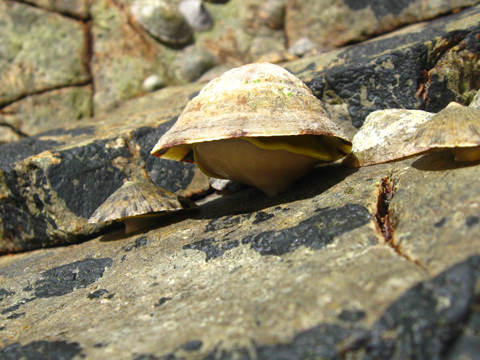

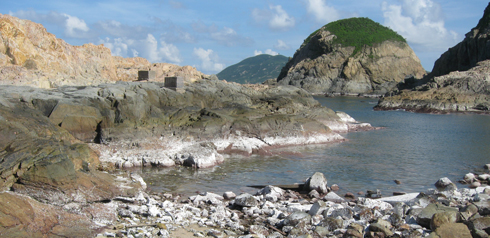
Parts of this work are focused on contrasting intertidal and subtidal species – the former spending most of their time out of water, the latter continuously submerged. Some organisms in these different habitats are being found to possess different tolerances to heat.
Williams has led the research involving gastropods such as snails – the latter including Echinolittorina malaccana and E. radiata as models – and how they survive extreme heat. These live near the top of the tideline, where they spend 90 per cent of their time out of water. Russell focuses on the subtidal zone.
Intertidal species in Hong Kong must already tolerate extreme heat of the rock surfaces they inhabit. These surfaces commonly reach as high as 50 degrees Centigrade, much hotter than air temperature, and Williams’ team has recorded as high as 60 degrees Centigrade when the tide is low. While species may avoid the extreme heat by crawling into shade, the SWIMS team identified physiological processes in their survival.
Williams said of the snails: “We have discovered they are incredibly tolerant. Ectotherms cannot regulate their body temperature. But as temperature increases, these snails can depress their metabolism to use less energy and oxygen, and survive longer.” Normally, under extreme heat, proteins begin to unfold, but collaborators in Qingdao have shown these snails have thermally tolerant enzymes, which allow them to function at high temperatures.
Subtidal gastropods may use a similar survival mechanism, Russell explained. But there is a difference. For intertidal species, exposure to the highest temperatures is temporary. They are cooled when the tide rises. Subtidal species – specifically the gastropods Astralium haematragum and Trochus maculatus in Russell’s research – exposed to moderate heatwave temperatures over long periods of time experience the negative consequences of depressed metabolism. The resulting physiological damage may lessen their ability to cope with subsequent stresses, while those exposed to extreme heat died within days.
“The reason I have been working on these two herbivorous taxa is that they eat algae, a key functional role in the ecosystem linking primary production from photosynthesis to higher trophic levels. It gives an understanding of how energy goes into the system and how this system breaks down under climate change,” he said.
 Ocean warming and acidification experiment with urchins and
gastropods.
Photo: Jay Minuti.
Ocean warming and acidification experiment with urchins and
gastropods.
Photo: Jay Minuti.
The team found the sea urchin Heliocidaris crassispina was able to acclimatise better to increased heat than the gastropods, but all three species grazed less under the combination of increased temperature and CO2 conditions, in research published in 2021 in Frontiers in Marine Science.
Russell has also been focusing on macroalgae, particularly developing a baseline of their populations and distribution in Hong Kong, so changes can be monitored. This has initially been through survey work of 12 locations in Hong Kong’s eastern waters, which is being followed by mapping from the air, using drones, and underwater through a citizen science project with divers.
As a next stage, the drone images can be compared with satellite images, giving the historical data and comparison for the future that is missing. “What is sad is that what we are capturing is so far from the pristine forests that used to be here,” Russell said.
Macroalgae, including the underwater forest-forming Sargassum, grow in Hong Kong’s cooler, winter months, so may be particularly vulnerable to warming waters. In research in press, Russell and his team have found the growing season is becoming shorter, which will reduce its system-wide productivity and biomass, and gradually simplify the ecosystem.
“What will do well are the fast-growing, low biomass ‘weedy’ species. But they don’t support ecosystems like the forests do,” said Russell.
Though not yet researched, there could also be an impact on juvenile fish that hide and shelter in the algal forests, affecting the productivity of fisheries.
 Juvenile fish on the edge of a Sargassum forest.
Photo: Bayden Russell
Juvenile fish on the edge of a Sargassum forest.
Photo: Bayden Russell
“A lot of these organisms are quite tough. Some will survive quite well. But we are getting more information about the sub-lethal effects. They may not die straight away, but they don’t grow or eat as well and may be more susceptible to other stresses,” he said.
The progression of climate change has thus increased the urgency of addressing the other human-induced stress factors. “If you have large areas of marine reserves, if you limit nutrient pollution and stop overfishing, ecosystems can have greater resilience to heatwaves and climate change,” Russell explained.
“The projections of warming are unequivocal. Waters are getting hotter”
- Dr Bayden Russell
There are multiple reasons to defend the marine environment in meeting the challenges of climate change. “Healthy marine ecosystems provide us with fisheries resources, shoreline protection, nutrient recycling and cleaning of waters. There are so many functions and services,” Russell said.
As a coastal city, Hong Kong includes a relatively large number of marine areas. “It is in the DNA of Hong Kong, which has such a strong cultural link to the ocean. So it is not just important from the perspective of the environment, but cultural heritage,” he pointed out. This included the aesthetic value. “There is an intrinsic value in going snorkelling on a healthy reef, or visiting a wetland and seeing thousands of birds. These can be transformative experiences and are important to human beings.”
Assisted restoration of ecosystems such as coral, oyster reefs, and wetlands has become increasingly important for undoing some of the damage caused by human activity. “If we don’t do it, I don’t think natural populations will survive,” Russell said. However, time for adaptation is not on the side of the marine world. “I am certain change has happened, and will continue to happen. The projections of warming are unequivocal. Waters are getting hotter.”
Fathoming Jellyfish Winners
 Amuska Jellyfish (Sanderia malayensis).
Photo: Ocean Park Hong Kong. Effects: Suety
Kwan
Amuska Jellyfish (Sanderia malayensis).
Photo: Ocean Park Hong Kong. Effects: Suety
Kwan
Jellyfish are expected to be among the winners in the race to survive in warming, oxygen-depleted waters, and a research team at the School of Life Sciences at the Chinese University of Hong Kong may have found a reason why, in their hormones.
While decoding the genomes of two jellyfish commonly found in Hong Kong and other Asian waters, Dr Jerome Hui Ho-lam, Associate Professor at the School, discovered they and other cnidarians contain juvenile hormones thought to belong only to arthropods, such as insects.
“Our study was the first to discover them in jellyfish and we have now also discovered them in other cnidarians, such as sea anemones, hydra, and corals,” he said.
Hui and his team are exploring the roles of these hormones, known as sesquiterpenoids, in the development and evolution of jellyfish, as well as on their growth during climate change. This is part of their work to understand the evolution of organisms and how they adapt to their changing environments.
The research team’s hypothesis is that production of the hormones may increase with global warming and eutrophication, causing the creatures to grow more quickly and resulting in jellyfish blooms.
Jellyfish are found in every major ocean in the world, from surface waters to the deep sea, and are extending their range as waters warm. Climate change and eutrophication are believed to have resulted in high frequencies of jellyfish blooms as, unlike many species, they can thrive in warmer, oxygen-depleted waters.
This can have destructive consequences for human activity, from clogging the cooling systems of power stations, forcing them to shut down on occasions, to stings that spoil tens of thousands of trips to the beach each year.
In excess quantities, these carnivorous creatures also have negative effects on marine ecosystems.
Hui and his team are now working with scientists at Ocean Park Hong Kong, a marine and animal theme park, to explore the causes and consequences of jellyfish blooming as waters warm.
Jellyfish have myriad characteristics and shapes. Some glitter, some can be reborn. Others can reproduce both asexually and sexually, according to Hui. Very little is known about the factors that regulate their transformation.
To help unravel these mysteries, Hui and his team sequenced the genomes of the Amuska Jellyfish (Sanderia malayensis), and edible Flame Jellyfish (Rhopilema esculentum), regarded a delicacy in Chinese cuisine.
It was during this research that they found the family of genes that encode sesquiterpenoid hormones in insects to be present in jellyfish. The research was published in Nature Communications in 2020.
These hormones are important in regulating metamorphosis in arthropods. Since jellyfish also undergo metamorphosis, this finding could help scientists to understand how they undergo the transition between developmental stages, and the change of reproduction method during their lifecycle.
Hui said that jellyfish are “of undoubted ecological and environmental importance”. They play roles in nutrient recycling and the rapid alteration of bacterial content, for example. “There is just so much for us to learn from these fascinating animals, and it's a really exciting time seeing the tip of the iceberg.”
Glimpsing the Effects of Acidification
 The Common Triplefin (Forsterygion lapillum)
appears to be successfully adapted to acidified
environments at CO2 volcanic vents. Photo: Sean D
Connell
The Common Triplefin (Forsterygion lapillum)
appears to be successfully adapted to acidified
environments at CO2 volcanic vents. Photo: Sean D
Connell
Scientists, including some in Hong Kong, are peering into the future of warmer, more acidic waters, by making use of the world’s natural laboratories – carbon dioxide seeps found in volcanic waters around New Zealand, Japan and Papua Guinea, among others.
In these waters, they can see how organisms may adapt – or not – to conditions expected to spread through the oceans over the next 50 to 100 years.
Acidification is slowly happening in parallel to global warming. Oceans absorb about 30 per cent of CO2 released in the atmosphere. The excess gas from the burning of fossil fuels reacts with water molecules, changing the chemistry of the oceans as pH decreases, which indicates the greater acidity. This happens naturally around the seeps, as CO2 bubbles up from volcanic activity.
Acidification is already happening, in parallel with climate change. According to the National Oceanic and Atmospheric Administration in the US, in the last 200 years of fossil-fuelled industrialisation, the pH of surface ocean water has dropped by 0.1 pH units – representing approximately a 30 per cent increase in acidity.
As more carbon dioxide is pumped into the atmosphere, oceans are predicted to become more acidic in the decades ahead, threatening individual species and ecosystems.
“A lot of organisms have mechanisms to regulate pH. At first we expected slight changes not to affect them, but we now know that for some species adjusting to lower pH will be costly.” said Dr Celia Schunter, Assistant Professor in the School of Biological Sciences at the University of Hong Kong.
The creatures most affected will be those with calcium carbonate shells or skeletons, which high acidity will dissolve or prevent from forming. These range from coral and bivalves such as oysters, mussels, and scallops to shrimps and crab. Meanwhile, fish will need to use more energy to adjust their internal pH to avoid tissue becoming overly acidic.
Schunter, a molecular ecologist, has conducted research on reef fish in the volcanic seep area of Papua New Guinea, New Zealand, and Italy. “Some thrive in these conditions, but most don’t. The richness of species is much lower,” she said.
She has been investigating, at the molecular level, how reef fish adapt to changing water acidity and temperature, and in particular the role of plasticity that means some can adjust better than others, and whether that can be passed on to their offspring.
“Plasticity allows individuals to adjust to a new environment. It is possible to pass this on to the next generation, which means they can do better in the environment. This can aid a population to survive a fast change in the environment and from our studies we see that part of the population is capable of having a more beneficial phenotype.”
This shows that genetic diversity is important for the future survival of species. “As there are predictions of more variability in temperature and pH you need part of the population to be capable of dealing with different stressors,” Schunter said, adding that species with shorter lifespans would be able to adapt more quickly than fish such as groupers that take years to mature and breed.
She has led research into how different species react to both heatwaves and acidification in the lab and at CO2 seep areas.
“A lot of species are living at their thermal maximum. When temperatures are elevated they won’t survive in those areas.” Some might move, but that would depend on finding a suitable habitat.
While adult reef fish are dependent on their habitats, their larvae can travel long distances with ocean currents, and establish populations far from where they were spawned. Warmer waters may result in more tropical species settling in Hong Kong, it being on the cooler fringes of the Philippines coral triangle.
The Cleaner Wrasse group of fish of the genus Labroides might be one example, and is already being seen in larger numbers around Hong Kong’s coral communities.
This could be of benefit if they become more established, as Cleaner Wrasse are key species for their role in cleaning parasites and dead and damaged scales from other fish – known as their clients, Schunter said.
But that does not mean they will thrive, because of the increase in acidity.
In a laboratory setting, Schunter and her lab have conducted research on the plasticity of Cleaner Wrasse, and how they interact with their clients when exposed to different temperatures and pH. “When exposed to different stresses, they are not doing so well. There is less cleaning when the pH is lower,” she said of her new research.
The best solution, she said, is for humanity to stop pumping so much CO2 into the atmosphere.
Air
Plants and Ozone Pollution
The harbour and city in haze on a polluted day in 2019. Photo: Shutterstock
With the pollutant increasing in Hong Kong, studies on its effect on the city’s flora are providing insights into the ecological damage it can cause as well as links with climate change
Over recent years, emissions of air pollutants in Hong Kong have reduced significantly, largely due to successful legislative restrictions applied to road traffic and vessel emissions and the gradual shift from coal-powered energy generation to liquified natural gas.
However, concerns now include the impact of ozone pollution and the complex chemical relationships between ozone and aerosol air pollution, and their links with greenhouse gas emissions that are driving climate change. While all major air pollutant emissions have been reduced in Hong Kong over the past 20 years, ozone pollution has increased by more than 50 per cent, and is continuing to rise.
Ozone (O3) is not a pollutant directly emitted from man-made sources, which makes it much more difficult to regulate. It is formed by photochemical reactions of primary pollutants such as nitrogen oxides (NOx) and volatile organic compounds (VOCs) under sunlight. It is a complex chemical process and ozone recorded in one place could be attributable to VOC and NOx emissions from elsewhere. It is linked with climate change as the damage that ozone does to plants and vegetation impacts local ecosystems and influences greenhouse gas emissions as well as local shading and urban cooling on a micro level.
It is known that ozone is poisonous to both plants and animals and that plants appear to be more sensitive to impairment. The phytotoxicity of ozone has been shown to damage photosynthesis, reduce gas exchange, induce early leaf senescence, and retard growth in both natural vegetation and crops.
As plants play vital roles in regulating the ambient environment, ozone-induced damage in plants could potentially further accelerate environmental degradation and exacerbate warming, with severe consequences for human health. Yet, until recently, few scientists have investigated it.
“Given that the ecology of plants and trees improves air quality, purifies water, and cools our cities, it is surprising that there is so little research into the impacts of air pollution on the local flora,” said Professor Amos Tai (Croucher Fellowship 2012). Tai suspects the lack of a holistic approach and that air quality research has been largely focused on human health impacts.
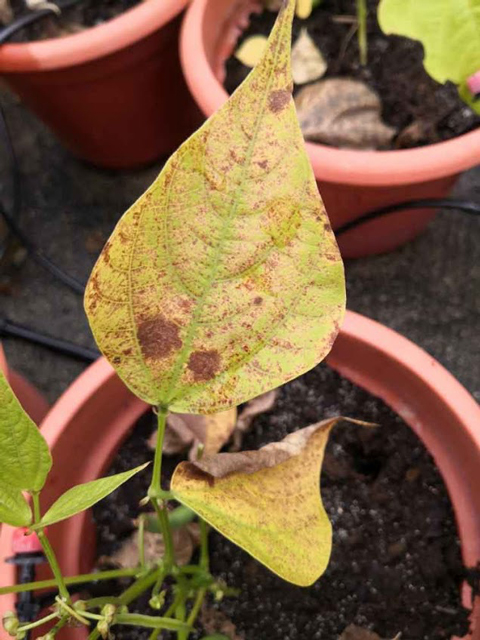 A bean plant’s foliar shows damage from high-intensity
ozone, indicated by more red mottles, in Professor Amos
Tai’s research on the impact of ozone on flora.
Photo: Chinese University of Hong Kong.
A bean plant’s foliar shows damage from high-intensity
ozone, indicated by more red mottles, in Professor Amos
Tai’s research on the impact of ozone on flora.
Photo: Chinese University of Hong Kong.
Tai is Associate Professor in the Earth System Science Programme, at Chinese University of Hong Kong, and one of the first to investigate the impact of ozone pollution on flora in the city.
Employing a method dubbed the “Ozone Garden” and used for the first time in southern China, Tai’s team grew cultivars of beans with different ozone sensitivities as a bioindicator of the local air pollution impacts on ecosystems. The species of bean chosen shows a distinctive red mottled pattern on the leaves according to the level of ozone in the atmosphere.
The findings showed the ozone level in Hong Kong is high enough to cause significant damage to plants. This has important implications for policy-makers assessing air quality, and for forestry experts and farmers in Hong Kong and South China, where their crops and plantations suffer from ozone pollution.
Using a combination of remote-sensing data and computer modelling, Tai further estimated that about five per cent of land ecosystem productivity globally can be reduced by ozone pollution but up to about 30 per cent in some heavily polluted regions, such as Mainland China, and up to about 20 per cent in Hong Kong.
When ozone pollution damages plants, they filter less of all types of pollutants, absorb less carbon, and perform less evaporative cooling, so there is a negative impact, not only on air quality, but also on climate, Tai explained. “There is a vicious cycle – a positive feedback loop,” he said.
When air pollution damages plants, it reduces their capacity to absorb ozone and other air pollutants, and the cycle continues. Meanwhile, the cooling function of vegetation is also compromised. “This is a key aspect of my research,” he said.
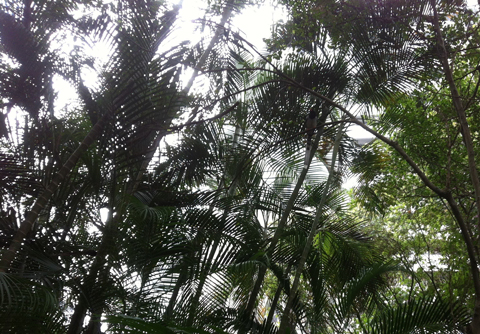 Trees in Hong Kong Park.
Photo: Katherine Forestier
Trees in Hong Kong Park.
Photo: Katherine Forestier
Tai is a firm advocate of planting trees and greenery to improve air quality and he points to multiple other benefits provided by Hong Kong’s local flora. Vegetation takes up carbon and assists in mitigation of climate change, helps purify water, and provides food and timber. Trees also offer shade and cooling.
But he advises caution. “Most plants in sub-tropical regions can filter or absorb air pollutants, but some trees can also emit VOCs that can react with NOx emitted from cars, ships, aviation, and power generation to create more ozone.”
Planting species of trees that emit copious amounts of VOCs, such as Chinese White Poplar (Populus tomentosa) and the Fishtail Palm (Caryota mitis), could worsen ozone pollution, and such impacts have to be weighed against the pollutant-absorbing and filtering functions of roadside vegetation. In Hong Kong, the majority of VOCs are emitted by human activities, from industrial emissions to the use of spray aerosols. However, the contribution from vegetation is still substantial and is expected to increase further because plant VOC emissions increase with a warming climate.
In general, water-stressed plants have also been shown to be less effective at absorbing ozone and cooling the surface than healthy plants, creating a connection between climate, ecology, and air quality.
Another complication with ozone and its interaction with ecosystems is the non-linear and complex interactions between NOx and VOCs. Where traffic is heavy and the pre-existing NOx level is already high, reducing NOx emissions would worsen ozone pollution, while reducing VOC emissions would help. This is also why, counterintuitively, urban roadside locations actually have lower ozone concentrations than relatively rural locations, such as country parks.
Much air quality policy has been driven by the need to reduce fine particulate matter (PM). While ozone is unambiguously bad for plants and ecosystems, Tai reported the effects of PM are more nuanced.
When particulate matter was not too acidic and in moderate quantities, it had been shown to be good for plants by diffusing sunlight and enabling better photosynthesis, Tai said. “But too much PM, which is typical in Chinese cities, can block sunlight, smother plants, and reduce growth.”
Professor Christine Loh, Chief Development Strategist at Hong Kong University of Science and Technology (HKUST)’s Division of Environment and Sustainability, said tackling ozone pollution was now a regional policy priority.
Part of the regional response to air pollution was the Sixth International Symposium on Regional Air Quality Management, which took control of ozone and particulate matter as its theme, and the Second Guangdong-Hong Kong-Macao Greater Bay Area Air Forum, held at HKUST in October 2020.
Tackling air pollution by gradually shifting energy production from coal to liquified gas, and reducing vehicle emissions, is not only important for public health and the environment, but has helped Hong Kong to begin reducing carbon emissions from their peak in 2014 – an early step towards its zero emissions target for 2050 for tackling climate change.
However, the links are complex. Recent research is showing reducing air pollution is not always beneficial for preventing global warming, with different chemicals and components of fine particulate matter having warming or cooling effects by scattering or absorbing radiation.
“You cannot separate them from one another,” said Professor Gabriel Lau Ngar-cheung, Senior Advisor to the Institute of Environment, Energy and Sustainability, at CUHK.
“When we talk about air pollution, we mostly mean ozone and aerosol pollutants which come from sources associated with heavy industry and highly populated areas. They are all temperature dependent, so whenever greenhouse gas emissions change the environment and raise the temperature, this also changes the intensity of rate of reactions of air pollutants,” Lau said.
If particulate matter was reduced or controlled too much, there might no longer be enough aerosols in the atmosphere, he said. “The cooling effect of the aerosols, which are like mirrors in the sky, would be lessened and then you would have more warming which compounds the greenhouse gas emissions.”
Lau added: “Aerosol pollutants can be incorporated into cloud condensation nuclei and affect the properties of clouds, which are also a reflective influence.”
While air quality scientists were working with public health experts, they were not yet collaborating with ecologists and biologists, Loh noted. “This is a worldwide gap that can be bridged,” she said, and Hong Kong could lead the way by increasing multidisciplinary dialogue.
In his book, The Ecology of Tropical East Asia, Richard Corlett, formerly of the University of Hong Kong and now Professor at the Centre for Integrative Conservation, Xishuangbanna Tropical Botanical Garden, Chinese Academy of Sciences, China, wrote: “The effects of air pollution on biodiversity can be complex and unpredictable, but are almost always negative.”
Regarding the impact on different creatures, he suggested that birds may be more sensitive than humans to air pollutants because of their higher breathing rate, particularly when flying. Soft-bodied invertebrates and frogs may be more affected because pollutants can be absorbed over their entire body surface. “The potential biodiversity impacts of air pollution have been largely ignored,” he said.
Echoing Loh, Tai said that to mitigate the damage inflicted on local ecology by air pollution, not only was more research needed, but experts from different disciplines would need to work together.
INFORMING POLICY-MAKERS AND THE PUBLIC
Charting the Meteorological Future
Typhoon Mangkhut approaches the Philippines on 12 September 2018, before heading towards Hong Kong. The super storm saw the Hong Kong Observatory raise the No.10 signal, its highest alert. Image: Lauren Dauphin/NASA Earth Observatory
What are the implications of weather changes due to global warming for Hong Kong and the region?
In the build-up to the Paris Agreement on climate change mitigation, adaptation, and finance – a legally binding treaty adopted by 196 parties in 2015 – research by the Intergovernmental Panel on Climate Change (IPCC) provided a wake-up call to governments and policy-makers.
“Warming of the climate system is unequivocal, and since the 1950s, many of the observed changes are unprecedented over decades to millennia. The atmosphere and ocean have warmed, the amounts of snow and ice have diminished, sea level has risen, and the concentrations of greenhouse gases have increased,” was the stark conclusion in the seminal report “Climate Change 2013: The Physical Science Basis. Contribution of Working Group I to the Fifth Assessment Report of the Intergovernmental Panel on Climate Change”.
Professor Gabriel Lau Ngar-cheung, Senior Advisor to the Institute of Environment, Energy and Sustainability, Chinese University of Hong Kong (CUHK), played a key role in that assessment report, known as AR5 and published by the IPCC, the United Nations body tasked with assessing the science related to climate change.
Lau, a Hong Kong-born climate scientist, was one of 16 lead authors for Chapter 14, entitled “Climate Phenomena and Their Relevance for Future Regional Climate Change”. The focus was on regional signals, as opposed to global averages, and included monsoon systems in different parts of the globe, tropical and extratropical meteorological features, El Nino, and atmospheric storm systems, he explained. Lau was also a contributing author to the Climate Models for Assessment Report AR4, published in 2007.
The IPCC, created in 1988 by the World Meteorological Organization and the United Nations Environment Programme, provides governments at all levels with scientific information that they can use to develop policies to limit carbon emissions and plan mitigations of climate change.
The panel is divided into three working groups: the first deals with the physical science basis of climate change; the second with impacts, adaptation, and vulnerabilities; and the third with mitigation.
Lau worked on the scientific issues covered by the Working Group I for more than three decades as a research scientist at the National Oceanic and Atmospheric Administration/Geophysical Fluid Dynamics Laboratory at Princeton University, US. He joined the university in the late 1970s.
The Princeton lab is globally recognised for pioneering much of the world’s research on the modelling of climate change since 1955. Lau, who was based there until 2013, was team leader of the Climate Diagnostic Group, studying atmospheric circulation systems based on observational and model-generated data.
Maintaining effective inter-connections and consensus between more than 200 leading scientists working in the three IPCC groups had been challenging, he said. “This has always been a point of concern for those involved in the IPCC.” Yet all views are included as part of the rigorous and open IPCC review process. “The sceptics are still out there but they are a small minority.”
The IPCC is now working on the Sixth Assessment Report. Working Group I’s assessment will be published on 9 August 2021. Reports by Working Groups II and III, along with a synthesis report for policy-makers, will follow in 2022.
Lau retains a close interest in the work of the IPCC, even though he relinquished his formal role in 2013 when he returned to Hong Kong. In his current position as Senior Advisor and as the former Director of the cross-disciplinary Institute of Environment, Energy and Sustainability at CUHK, he is contributing to regional understanding and preparations for climate change, and building capacity in education, research, and knowledge transfer to meet the longer-term challenges of climate change.
He is also a Scientific Advisor to the Hong Kong Observatory and a member of the Scientific Advisory Committee for Beijing Climate Center, part of the China Meteorological Administration.
Lau’s recent research, involving observational analysis and model simulations, has focused on the relationship between climate change and extreme weather events, including typhoons and heatwaves, with a regional emphasis on the Greater Bay Area and East Asia. This is important for local forecasting and preparedness, and global understanding of climate change.
In addition, he has encouraged the Hong Kong Observatory to establish the Hong Kong Climate Forum. “This facilitates exchanges between academia and operational staff at the Hong Kong Observatory. The discussions help to place the forecasts and seasonal outlooks issued by the Observatory on a more solid scientific basis,” Lau said.
“There is no question that the climate is warming and that extreme heatwaves are killers of people. These extreme weather events can damage the economy and agriculture, as well as public health,” he added.
As a rapidly developing area that is home to some 70 million people and with an economy comparable to a large European country, how the Greater Bay Area reshapes the environment will have a significant impact on local climate change.
Lau points out that May 2021 was the hottest May on record in Hong Kong and that the past winter lasted little more than one weekend. “The warmer seasons are getting longer,” he said. “There is strong evidence for warming at the local and global levels. Such inferences may be deduced from a wide variety of independent datasets in the public domain.”
The effects were now becoming increasingly apparent to citizens, particularly the poorer in society, living in confined conditions with limited access to air conditioning, he added. “The end game is environmental justice because there is a growing gap between rich and poor and their ability to mitigate against climate change,” he said.
While Lau’s research on the impact of climate change on typhoons is ongoing, the evidence suggests these storms will become more intense over time, though it is unclear if they will also become more frequent. Basic scientific principles suggest that as temperatures increase, water vapour in the atmosphere will also increase. A warmer sea surface generally provides more energy for storm development and thus favours more intense typhoons, which is what Lau expects.


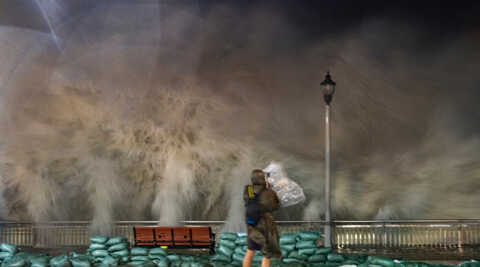

“The destructive power of typhoons will increase and drive ocean waves and storm surges,” he said. Combined with a rise in sea levels, this could have negative impacts for coastal communities in the Pearl River Delta. Like other climate scientists, Lau predicts that one-in-100-year weather events will likely occur every two or three years. This poses a direct threat to the low-lying industrial bases and population centres of Hong Kong and the Greater Bay Area.
Regional government agencies and policy-makers are responding to these threats. Lau highlights the Hong Kong government’s Climate Action Plan 2030+, and its target to reduce the city’s carbon intensity by 65 to 70 per cent by 2030, compared with 2005 levels.
Meanwhile, climate change action needs to be greatly increased globally if the goals of the Paris Agreement are to be achieved. The years since it came into force have sparked low-carbon solutions and new markets, with more and more countries, regions, cities, and companies establishing carbon neutrality targets, according to the United Nations. COP26, hosted by the UK this November, aims to accelerate action towards its goals.
According to Lau, it is essential that climate change is at the centre of both policy-making and urban planning. While much needs to be done, he is encouraged that practical measures are being taken by individual departments and agencies in Hong Kong. One major endeavour is to switch power generation from coal to more efficient natural gas to reduce emissions. Other initiatives range from the construction of sea walls to mitigate against storm surges and better slope management to protect from landslides triggered by extreme rainfall, to improved public communication.
Lau believes more could be done in terms of energy policy to reduce local greenhouse gas emissions. “We are a very consuming economy and this will resume [after the Covid-19 pandemic]. Hong Kong is burning about six metric tonnes of carbon per capita every year.
“We need more coordination with the Mainland to achieve a better energy mix,” Lau said, adding that nuclear energy, fuel cells, and solar technology should be considered as a larger part of the solution.
He also emphasises the importance of recycling, conservation, education, and dietary changes that include reducing meat consumption. Indeed, the IPCC’s special report on land use and climate change, published in 2019, highlighted the importance of dietary change. If people ate less meat, several million square kilometres of land could be freed up for uses including restoring and retaining forests and sustainable farming while global CO2 emissions could be cut by up to eight billion tonnes a year by 2050.
Lau said that better understanding of the complex scientific inter-relationships in climate change research requires a review of education for the next generation of scientists and policy-makers. The traditional approach, favouring narrow avenues and disciplines with specialist subjects, may no longer be appropriate. “Having physicists that know only about relativity, or biologists who only recognise what they see through the lens of a microscope, no longer applies,” he said.
Climate Change Museum Raises Awareness
Education, awareness, and the modification of public behaviour are essential ingredients in tackling climate change, particularly in a consumption-driven economy such as Hong Kong.
The Jockey Club Museum of Climate Change (MoCC), funded by the Hong Kong Jockey Club Charities Trust, was established in December 2013 at the Chinese University of Hong Kong (CUHK) to address these issues. It is the first museum of its kind in the world, offering an interactive, multimedia exhibition space – on and off-line – that showcases collections and information about climate change and initiatives to promote green living.
The idea of a museum was first mooted in 2010, when Dr Rebecca Lee, a local explorer who set up the Polar Foundation in 1997, sought a location to house a collection accumulated during her many years of fieldwork in the Arctic and Antarctic and around Mount Everest, according to its Founding Director, Cecilia Lam.
CUHK decided that this collection should form the nucleus of a museum designed to raise awareness of the threats posed by global warming. The museum, which has attracted over one million visitors, has its physical space in the Yasumoto International Academic Park at CUHK, while the Mobile Jockey Club MoCC takes its message out to schools and public spaces.
In addition to student-friendly interactive exhibits, the museum delves into more detailed scientific research and discussion of key questions and events, putting the issue of climate change, and how to combat it, firmly centre stage.
Most recently, it hosted Hong Kong’s participation in the Solve Climate 2030 global dialogue series, a teach-in on climate change held in April 2021 by more than 100 universities worldwide, exploring local policy and community responses to the crisis.
The museum also co-hosts the secretariat for the Hong Kong Chapter of the UN Sustainable Development Solutions Network, which aims to integrate Hong Kong into the wider global community to achieve the UN’s Sustainable Development Goals.
Will COVID-19 Fuel Lasting Reductions?
 Parked planes stretch into the distance as COVID-19 takes
its toll on travel to and from Hong Kong.
Photo: Shutterstock
Parked planes stretch into the distance as COVID-19 takes
its toll on travel to and from Hong Kong.
Photo: Shutterstock
The International Energy Agency (IEA) expects global CO2 emissions to have dropped by as much as eight per cent in 2020 compared with 2010 levels. This largely reflects the radical change in human behaviour due to restrictions on work, travel, and social gatherings imposed on more than one billion people across at least 50 countries around the world, as governments struggled to contain the COVID-19 pandemic.
The IEA states that such a year-on-year reduction would be the largest yet, six times greater than the previous record reduction of 2009 caused by the global financial crisis, and twice as large as the combined total of all previous reductions since the end of the Second World War.
Air travel, road traffic use, and industrial production have reduced in many regions of the world. Retail consumption has decreased and many citizens have re-engaged with country parks and their local outdoor environment. The suspension of international tourism has also given some relief to natural habitats and reduced pollution.
“The slowdown of the economy and the reduced road and air traffic certainly have an impact on the emission of air pollutants and greenhouse gases. The planet is having a respite, though not for the right reason,” said Professor Francis Tam, of the Earth System Science Programme at Chinese University of Hong Kong (CUHK) in a university article.
While these developments may sound like good news for slowing climate change, and for the environment in general, scientists are sceptical as to the lasting significance given that the atmosphere is influenced by multiple complex factors.
“I always emphasise that climate change is a long-term process. Those gases in the atmosphere now are here to stay for a long time to come,” explained Professor Gabriel Lau, Senior Advisor to the Institute of Environment, Energy and Sustainability, at CUHK.
Meanwhile, the current reduction in global carbon loading was likely to only offer temporary respite before the world’s largely consumption-based economy returns to business as usual, Lau said.
A recent report by the US National Oceanic and Atmospheric Administration (NOAA) supports this view. Its Global Monitoring Laboratory notes that there is no photochemical destruction of atmospheric CO2 as for many other gases, for example, methane. Atmospheric CO2 can dissolve in water and it can be turned, through photosynthesis in plants, into wood and other organic matter. But these transfers are not permanent. It does not go away.
There are large seasonal and other natural variations too, and the NOAA report suggests it is almost impossible to measure any global effect of the pandemic in little over one year.
To detect the drop in emissions caused by the pandemic, the impact needs to be large enough to stand out from natural CO2 variability caused by how plants and soils respond to seasonal and annual variations of temperature, humidity and soil moisture, among other factors.
On a local level in Hong Kong, Lau noted, the environmental impact of pandemic restrictions was that many were working at home and turning up their air conditioning units so that overall energy consumption and carbon emissions in Hong Kong were not being reduced significantly.
The data confirms his view. While there was a marginal drop in Hong Kong’s electricity consumption in 2020, due mostly to reduced exports to Mainland China, local domestic energy use actually rose from 11,927 gigawatt hours to 12,965 gigawatt hours.
According to NOAA, what is required is long-term structural changes to energy production and human behaviour, not just a temporary slowing in consumption forced on people by a virus.
Dr Amos Tai (Croucher Fellowship 2012), Associate Professor on the Earth Systems Programme at CUHK, summed this up: “If human beings do not learn from the past and make good use of this once-in-a-lifetime opportunity to rethink climate and environmental actions, but instead go back to the old ways after the crisis ends, the pandemic may ultimately exacerbate climate change and other environmental problems.”
Researching the Risks
Thunderstorm arrives over Victoria Harbour as seen from the Peak. Photo: Martin Williams
The implications of the climate crisis vary by region, but scientists in Hong Kong are finding the local environment to largely be moving in line with global trends
The heat is on for researchers across Hong Kong’s universities, government departments, and in the wider society to understand and prepare for the risks posed by climate change to the city environment.
Much work has already been done, and numerous collaborative studies are ongoing, often using data from the Intergovernmental Panel on Climate Change (IPCC)’s Fifth Assessment Report (AR5), published in 2014, as well as the Hong Kong government’s Geotechnical Engineering Office (GEO) and Hong Kong Observatory. Models used are verified against previous weather events and patterns.
Research in progress includes, among other studies, a HK$10 million project funded by Hong Kong’s Research Grants Council involving academics from four universities looking at the health impacts of extreme weather on the elderly; and a HK$90 million project to develop a predictive model for landslides, also involving four universities as well as the GEO and Observatory.
Included in the IPCC’s AR5 were greenhouse gas concentration trajectories for climate modelling, used by governments as well as researchers, for understanding the implications of climate change and its impact on societies and the natural environment.
The outlook is continuing to deteriorate. Under the most stringent trajectory, if carbon dioxide emissions started to decline by 2020 and reached zero by 2100, the IPCC considered it likely that the temperature rise globally would be below two degrees Centigrade by 2100. However, as of May 2021, carbon dioxide was still increasing, according to NASA climate change data.
Among the trends, Hong Kong can expect an increase in extreme weather events such as heatwaves – as experienced with this year’s early summer – and more intense tropical cyclones, storm surges, and extreme rainfall. These will lead to greater risks of heat stress, flooding, and landslides, which are being investigated by researchers in Hong Kong.
Professor Charles Wang Wai Ng, Chair Professor of Civil and Environmental Engineering at the Hong Kong University of Science and Technology (HKUST), is leading the research project on landslide prediction and mitigation. He warned: “What were once considered one- in-100-year extreme events leading to severe flooding and landslides could now, in theory, happen annually.”
Intergovernmental Panel on Climate Change assessment reports are based on the author teams’ evaluations of underlying scientific understanding, expressed as a qualitative level of confidence (from very low to very high) and, when possible, probabilistically (from exceptionally unlikely to virtually certain).
Anthropogenic greenhouse gas emissions are mainly driven by population size, economic activity, lifestyle, energy use, land use patterns, technology and climate policy. Representative Concentration Pathways (RCPs), which have been used for making projections based on these factors, describe four different 21st-century pathways (RCP2.6, RCP4.5, RCP6.0, RCP8.5) for greenhouse gas emissions and atmospheric concentrations, air pollutant emissions and land use.
Multiple lines of evidence indicate a strong, consistent, almost linear relationship between cumulative CO2 emissions and projected global temperature change to the year 2100 in both the pathways and the wider set of mitigation scenarios. Any given level of warming is associated with a range of cumulative CO2 emissions.
For the Sixth Assessment Report, to be published from August 2021, the RCPs will be supplemented with the more complex Shared Socioeconomic Pathways (SSPs) that range from sustainability, or “taking the green road”, to fossil-fuelled, or “taking the highway” – new and more complex scenarios for Hong Kong researchers to work with in their research.
- Drawn from AR5, Climate Change 2014 Synthesis Report Summary for Policymakers
Extreme Heat
The Hong Kong Observatory, which has data stretching back over 100 years, affirms that the city’s climate has been getting hotter, and at a faster speed. From 1885 to 2020, the average increase was 0.13 degrees Centigrade per decade. In the past three decades, this has extended to 0.24 degrees Centigrade.
Using the IPCC’s Representative Concentration Pathway 8.5 (RCP8.5) scenario, which focuses on high greenhouse gas concentration, the Observatory has projected that these increases will continue during the 21st century, with the annual number of very hot days (33 degrees Centigrade or more) increasing dramatically to approximately 110 per year by the end of the century from an average of nine between 1986 and 2005
The city’s humid environment is exacerbating the problem. With the predicted rise in air temperature, the atmosphere will be able to hold more water. As humidity increases, the evaporative cooling effect decreases, thus increasing heat stress. A wet-bulb temperature reading (measuring both humidity and temperature and a more appropriate measure of heat stress than air temperature alone) of 35 degrees Centigrade is commonly used as the threshold for human adaptability to heat. If this is exceeded, the body cannot dissipate heat by sweating and hyperthermia ensues.
In 2017, an Observatory team including Tong Hang-wai, Wong Chau-ping, and Lee Sai-ming showed that the annual number and maximum length of extremely warm and humid days will progressively increase throughout the 21st century, in a paper for the 31st Guangdong-Hong Kong-Macao Seminar on Meteorological Science and Technology and the 22nd Guangdong-Hong Kong-Macao Meeting on Cooperation in Meteorological Operations.
Even under the IPCC’s mid-range scenarios of RCP4.5 (medium-low greenhouse gas concentration) and RCP6.0 (medium-high greenhouse gas concentration), wet bulb temperatures could exceed 30 degrees Centigrade. Under RCP8.5, they could rise beyond 31 degrees Centigrade this century. As a reference, the paper’s authors point out that maximum wet bulb temperature never exceeded 31 degrees globally from 1999-2008 and 30 degrees Centigrade equates to the most extreme heat experienced in recent history.
Adding to heat stress, the warm and humid season is projected to lengthen, occurring as early as late April and extending into October under RCP8.5. Without adaptive measures, the implications for Hong Kong for public health could be significant. The Observatory team pointed out that increasing the use of air-conditioning is not the solution, as this would increase greenhouse gas emissions if clean energy is unavailable.
 Hong Kong scientists have developed an extreme heat risk
index to locate high-risk hotspots in urban areas.
Photo: Shutterstock
Hong Kong scientists have developed an extreme heat risk
index to locate high-risk hotspots in urban areas.
Photo: Shutterstock
Extreme hot weather conditions vary greatly in Hong Kong’s complex urban environment. The higher the population density, the higher the risk, due to the urban heat island effect. Researchers from the University of Hong Kong’s (HKU) School of Architecture, Chinese University of Hong Kong (CUHK)’s Institute of Future Cities, and the Observatory collaborated to develop an extreme heat risk index. This was based on an integration of heat hazards (extreme heat severity, duration, and frequency), exposure (population distribution), and vulnerability from 2006 to 2016.
The research, published in 2021 in Sustainable Cities and Society, found the highest risk locations to be in Sham Shui Po, Yau Ma Tei, Mong Kok, Choi Hung, Sha Tin city centre and a part of Wan Chai. These rose at night, with almost 10 more hotspots in core urban areas. Mortality, especially in urban areas, increases as the intensity, frequency and duration of extremely high temperatures rises under climate change, according to the study.
Dr Hua Junyi , lead author of the 2021 paper and a postdoctoral fellow in the team of Dr Ren Chao, Associate Professor in HKU’s Faculty of Architecture, said: “The elderly and poor, who often live in cramped conditions are particularly susceptible.”
Professor Emily Chan Ying-yang, Assistant Dean in the Faculty of Medicine at CUHK, has shown that higher temperatures are already posing a major threat to human health in Hong Kong, reflected in an increase in mortality and morbidity. “We studied the relationship between hospital admissions and temperature in Hong Kong and found an increase in admissions of 4.5 per cent for every one degree Centigrade increase in mean daily temperature,” she said.
Rising Sea Levels And Flooding
As a coastal city with roughly 15 per cent of its land close to sea level, Hong Kong is vulnerable to flooding from rising sea levels, storm surges, and extreme rainfall, affecting the human and natural environment.
Several collaborative research projects have investigated the risk of rising sea levels for Hong Kong and the Pearl River Delta, which are important for informing long-term adaptive planning. While there is a consensus that the sea level is rising and poses a serious risk of increased flooding, the various scenarios, models, and timeframes used give a range of projections, from around 30 centimetres by the end of this decade to nearly two metres by the end of the century.
Global warming is resulting in sea water thermal expansion and the melting of glaciers, ice sheets, and land water storage that lead to rises in sea level, a Hong Kong Observatory team led by He Yuheng explained in a 2016 paper published in the International Journal of Climatology. Under the IPCC’s RCP8.5 scenario for high greenhouse gas concentration, global mean sea level would likely rise between 0.45 and 0.82 metres for the 2081-2100 period, over the levels of 1986-2005.
There are variations due to regional ocean dynamics and atmospheric changes, as well as land displacement not related to climatic activities. Based on these factors, regional sea levels are predicted to rise 0.27 metres for RCP4.5 (an intermediate scenario when carbon emissions peak around 2040 and then decline), and 0.35 metres for RCP8.5. In Hong Kong, sea level rise is projected to be 0.67 metres for RCP4.5 and 0.84 metres for RCP8.5. Based on both scenarios, sea level in the vicinity of the city would continue to rise about 0.2 metres higher than the corresponding global mean values.
Another study, by researchers from the Guy Carpenter Asia-Pacific Climate Impact Centre at City University of Hong Kong (CityU), Chinese Academy of Sciences, Macao Meteorological and Geophysical Bureau, and first authored by Professor Zhou Wen of CityU’s School of Energy and Environment, estimates that under the RCP8.5 greenhouse gas concentration trajectory, coupled with extreme values for land subsidence and inter-monthly variability, there would be a sea level rise of 1.94 metres by the end of this century.
Under the paper’s scenario, published in Acta Oceanologica Sinica in 2015, large areas of the Pearl River Delta would be threatened, with the part below sea level increasing by approximately 30 per cent, including Deep Bay.
A further study assessing the damage to people from coastal flooding in Hong Kong and the Pearl River Delta was published in Natural Hazards in 2018. This was first authored by Yu Qiwei, then at Hong Kong University of Science and Technology (HKUST), and included Professor Jimmy Fung, Associate Head of the Division of Environment and Sustainability at HKUST, as one of the authors.
Fung noted the study’s sobering implications for the community: “It is estimated with a sea level rise of 75 centimetres by 2100, the annual average loss in Hong Kong will be over 20 deaths and 100,000 displaced people.”
Meanwhile, a team of researchers from Southeast University (Nanjing), Tongji University (Shanghai), and Florida State University (US) has demonstrated that sea level rise is already occurring at a greater rate in the Pearl River Estuary than globally. Along the Guangdong coast, they project this to be at 30 centimetres and 50 centimetres by 2030 and 2050 respectively, according to the 2017 paper in Ocean Engineering, first authored by Yin Kai.
Typhoons and Storm Surges
The immediate threat is from storm surges, as generated by tropical cyclones. Hong Kong lies within the world’s most active tropical cyclone basin, which produces almost 30 per cent of these extreme weather events globally. Scientists have used the IPCC scenarios to project these to increase in intensity with climate change, resulting in higher storm surges. Typhoon intensification combined with sea level rise will lead to more severe flooding events.
The flooding that accompanied Typhoon Mangkhut, which hit Hong Kong in 2018 with record storm surges, was widespread. But it could have been much worse. The Hong Kong Observatory analysed what impact Mangkhut would have had if it had made landfall during a spring tide. Dr Lee Tsz-cheung, Senior Scientific Officer at the Observatory, noted that instead of around 3.9 metres, the maximum sea level would have been closer to 4.9 metres in Victoria Harbour and 5.9 metres in Tolo Harbour, resulting in greater flood damage.
The intergovernmental Typhoon Committee, set up in 1968 under the Economic and Social Commission for Asia and the Pacific and the World Meteorological Organization to coordinate planning and implementation of measures to minimise the loss of life and damage caused by typhoons, has also conducted assessments.
An article published in Tropical Cyclone Research and Review summarises the committee’s findings from more than 180 studies on projected changes of tropical cyclone activity under a scenario of two degrees Centigrade global warming. This affirmed a general consensus for a reduction in typhoon frequency, by about 10 per cent, but an increase in intensity, by about five per cent, and increased precipitation of about 17 per cent. Global warming may also lead to changes in tropical cyclone tracks, and storm surge risk may be increased by the projected increase in intensity as well as the expected sea level rise.
In a 2020 paper published in Scientific Reports, a team including Chen Jilong of the Fujian Agriculture and Forestry University, Mainland China, and involving CUHK’s climatologists Professor Gabriel Lau Ngar-cheung and Associate Professor Dr Francis Tam Chi-yung, investigated the impacts of climate change, based on the RCP8.5 scenario, on tropical cyclones and the storm surges they induce.
Peak intensities of cyclones – their maximum surface wind – are expected to increase by three per cent in the near future (2015-2039) and 10 per cent in the far future (2075-2099), due to increased surface warming. Typhoon-induced storm surges affecting the Pearl River Delta would increase by about 8.5 per cent, resulting in a tide increase of around one metre.
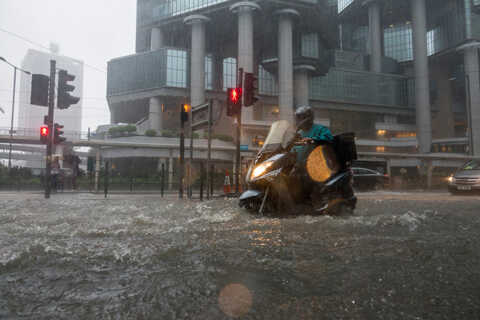 Flooding in the city centre after heavy rain.
Photo: Shutterstock
Flooding in the city centre after heavy rain.
Photo: Shutterstock
Extreme Rain
With the climate change-induced warming of the troposphere, the maximum atmospheric moisture content increases and along with it the likelihood of more extreme rainfall events. As with sea level and tropical cyclones, rainfall projections depend on which IPCC scenario is used.
Given strong indications that the world is on the path of the RCP8.5 high greenhouse gas concentration scenario, a team of engineers from the Geotechnical Engineering Office and meteorologists from the Hong Kong Observatory project that the number of extremely wet years in Hong Kong will increase from three between 1885-2005 to around 12 in 2006-2100. Annual rainfall is expected to increase by roughly 180 millimetres compared with the average of 1986-2005. The Observatory has also projected an increase in rainfall intensity and frequency.
Meanwhile, a 2015 study by Professor Zhou Wen and Richard Li of the Guy Carpenter Asia-Pacific Climate Centre at CityU, Shun Chi-ming, a former director of the Observatory, and Lee Tsz-cheung, also of the Observatory, looks at tropical cyclone-induced rainfall, a significant contributor to total rainfall. Using a linear regression method based on historical records, they found that over the past 50 years there had been a reduction in typhoon-related rainfall and increase in other rainfall, the latter also becoming more intense. The trend is projected to continue, due to the reduction in typhoon frequency and increase in moisture over Southern China.
Landslides
Hong Kong has always been at risk of landslides because of its intense seasonal rainfall and mountainous terrain. The proximity of urban development to hillsides heightens the risk of human fatalities and property damage when landslides occur.
Since 1948, there have been over 470 deaths in Hong Kong as a result of landslides. The Hong Kong government’s Geotechnical Engineering Office (GEO) has substantially reduced landslide risk since it was established in 1977, using engineering and non-engineering approaches. However, climate change presents new challenges.
“We expect the risk of landslides to increase with climate change because a warming climate is leading to more frequent extreme rainfall events,” Dr Raymond Cheung, Head of the GEO, said. “To address this challenge, we are upgrading our emergency preparedness and applying new technologies for risk management.” One example is the use of artificial intelligence to identify areas with rock exposure from aerial images.
According to the Hong Kong Observatory and GEO, correlations between rainfall and landslide types can be established with confidence because of the abundance of data in Hong Kong. As such, rainfall-landslide correlations for man-made slopes and natural hillsides have been established and used to predict the severity of landslides with increasing rainfall intensity.
The Observatory and GEO also conducted a study, with findings published in the book Slope Safety Preparedness for Impact of Climate Change (2016) , to understand what the impact of 2008’s Typhoon Morakot, the deadliest typhoon to hit Taiwan in recent history, would have had if it had hit Hong Kong. “Our study indicated 49,000 natural terrain landslides could occur with 4,000 to 8,000 impacting on roads or buildings. In addition 1,000 man-made slope failures could occur with about 620 of these impacting roads or buildings,” Lee Sai-ming, Senior Scientific Officer at the Observatory, said.
“The current capacity of the emergency landslide system is about 210 and 360 reported natural terrain and man-made slope failures, respectively. Therefore, in the case of such an extreme rainfall event hitting Hong Kong, the emergency management system would be completely overwhelmed,” he added.
The study affirmed the need for strategies for prevention, mitigation, preparedness, response, and recovery, the government’s scientists concluded.
It is critical there is advanced warning for an extreme weather event that could lead to severe flooding and landslides. Currently the time for such a notification is three hours, but a team led by HKUST Chair Professor Charles Wang Wai Ng hopes to increase this. Using artificial intelligence and data for precipitation, temperature, and vegetation, Ng and his team are developing a model to increase the advanced warning time to six hours. “Our model targets landslides, but with minor modifications it could be used for flooding, and heat stress as well,” Ng said.
Such a model could be developed with a user interface geared towards the non-scientific community, allowing an assessment of the risk facing a building. By allowing more time to prepare, the risk of injuries and loss of life could also be reduced.
Moving Forward
Increased landslides, flooding, increasing intensity of rainfall, storm surges, and heat stress are just some of the risks from climate change that government agencies and scientists have been working to understand and mitigate. Other risks are less well researched. For example, Professor Emily Chan of CUHK's Faculty of Medicine identified the need for more research on climate change and vector-borne diseases while Dr Margaret Burnett, Programme Director for the Corporate Environmental Governance Programme at HKU, noted the issue of food security.
Professor Alexis Lau, Head and Chair Professor of the Division of Environment and Sustainability at HKUST, highlighted another risk. “Extended drought combined with extreme heat could result in hill fires far more severe than have been experienced in Hong Kong till now.”
Dr Bayden Russell, Associate Director of Swire Institute of Marine Science and Associate Professor, School of Biological Sciences at HKU, echoes many scientists on the solution that is required. “If we stopped using fossil fuels, it would take away the problem. The concept is simple, but the action difficult.”
Explore selected publications on climate-related risk in Hong Kong
The Croucher Foundation has been funding scientific research including research on climate change since 1979. Scientists are able to model the rapidly evolving physical risks associated with climate change with increasing accuracy and to link these physical risks with impacts including economic impact. As Hong Kong studies the risks associated with climate change, builds predictive models, and begins to identify science-based solutions, the Foundation is taking this opportunity to share some of the directly relevant research.
Resources
TAKING A LEAD ON BIODIVERSITY
Some of the major education, government, and community organisations that provide expertise and knowledge related to Hong Kong’s biodiversity, ecology, and environment.
Research and Education
Chinese University of Hong Kong
City University of Hong Kong
Education University of Hong Kong
Hong Kong Baptist University
Hong Kong University of Science and Technology
University of Hong Kong
Government
Community
International
Acknowledgements
- ISSUE FOUR
- Editorial Team
- Writers: Katherine Forestier, Stuart Heaver, Sam Ribet, Martin Williams
- Editors: Sally Course, Katherine Forestier. Production: Aung Kyaw Phyo, Ying Wit Mon Win
- ISSUE THREE
- Editorial Team
- Writers: Katherine Forestier, Thomas Gomersall, Martin Williams
- Editors: Sally Course, Katherine Forestier. Production: Aung Kyaw Phyo, Ying Wit Mon Win
- ISSUE TWO
- Editorial Team
- Writers: Harry Few, Katherine Forestier, Stuart Heaver
- Editors: Sally Course, Katherine Forestier. Production: Aung Kyaw Phyo
- ISSUE ONE
- Editorial Team
- Writers: Katherine Forestier, Stuart Heaver, Martin Williams
- Editors: Sally Course, Katherine Forestier. Production: Aung Kyaw Phyo
Many thanks to the following for their photographs.
- Tim Boucher
- François Brassard
- Stefano Cannicci
- Stephen CY Chan, Cetacea Research Institute
- Rhyn Cheung
- Apple Chui
- Sean D Connell
- David Dudgeon
- Robert Ferguson
- Harry Few
- Katherine Forestier
- Thomas Gomersall
- John Holmes
- Roger Kendrick/C & R Wildlife
- Pete Kline
- Christy Kong
- Anthony Lau
- Ivan Leung
- Sharne McMillan
- Jay Minuti
- Evan Pickett
- Bayden Russell
- Professor Wei Shyy, President, Hong Kong University of Science and Technology, Flight in Sight ebook and website
- Ken So Ying-kin
- Andrew Sun
- Sung Yik-hei
- Ricky Tang, Cetacea Research Institute
- Yiu Wai-hong
- Gray A Williams
- Martin Williams
- Michelle & Peter Wong
- Sherman Yeung
- Agriculture, Fisheries and Conservation Department
- Hong Kong Dolphin Conservation Society
- Hong Kong Obervatory
- Kadoorie Farm and Botanic Garden
- NASA Earth Observatory
- Ocean Park Hong Kong
Pictures also sourced from:
- Creative Commons, Wikimedia, licensed under Attribution-Share Alike 3.0 Unported licence (hongshanyingyue)
- iNaturalist (Hong Kong)
- Shutterstock